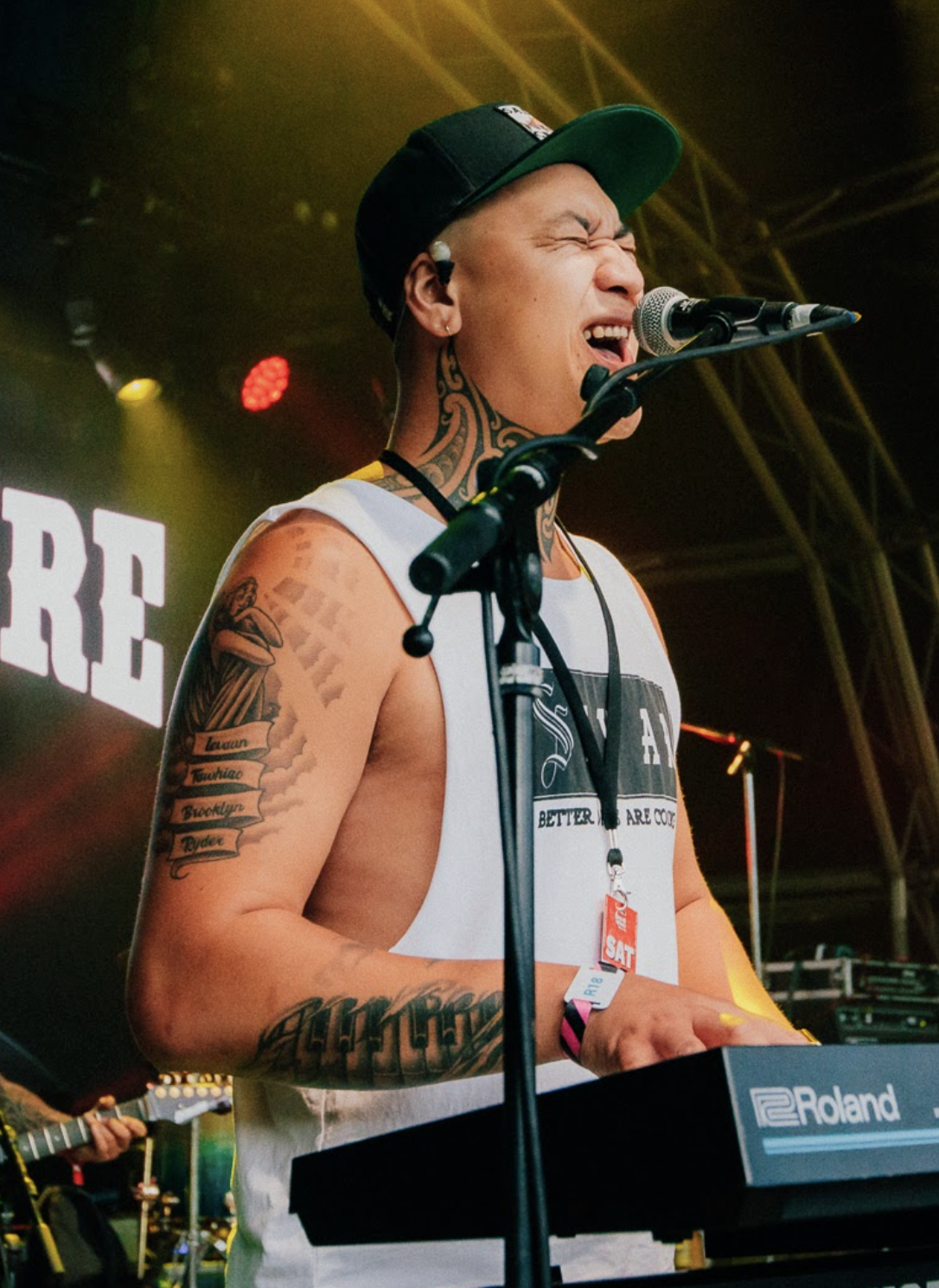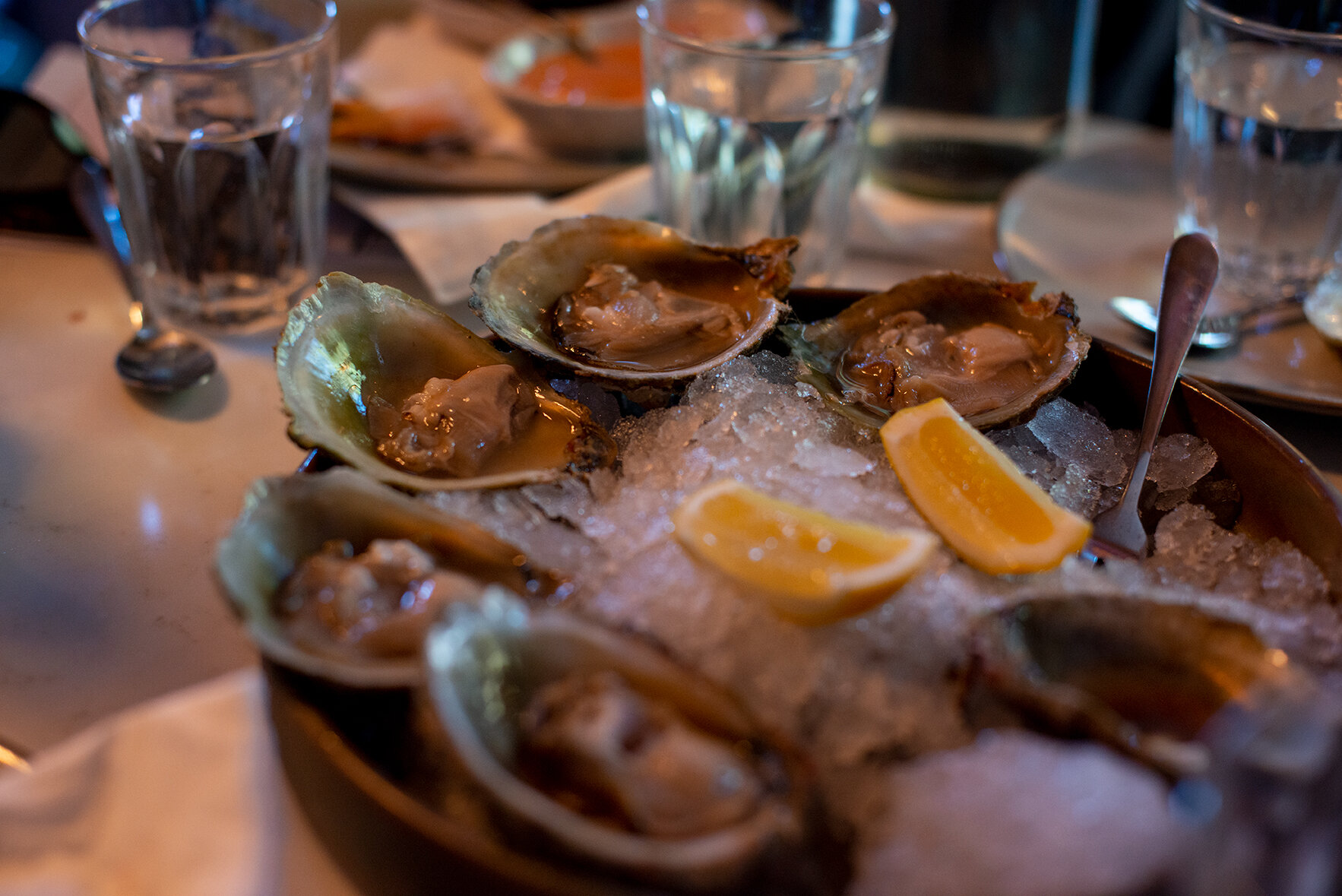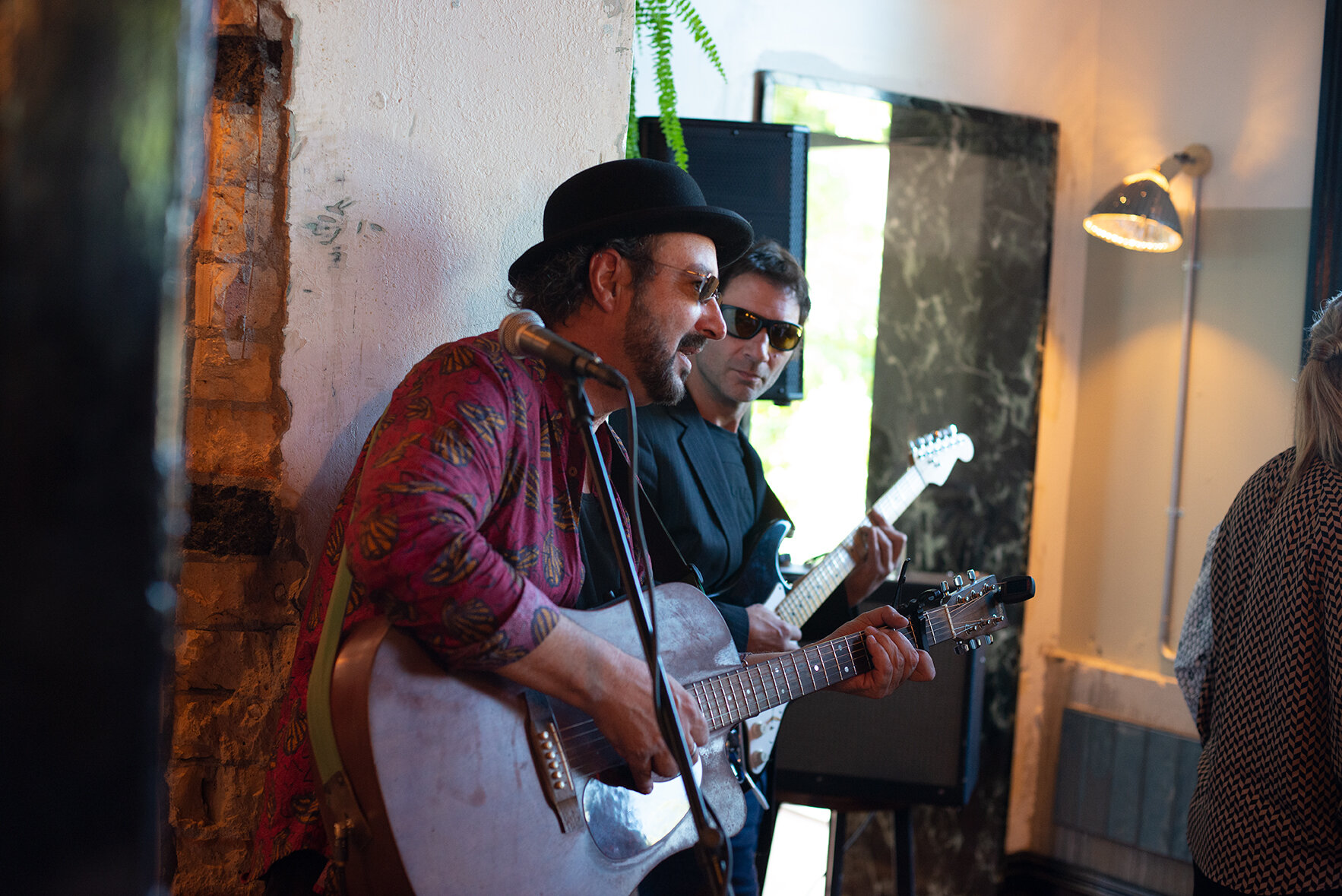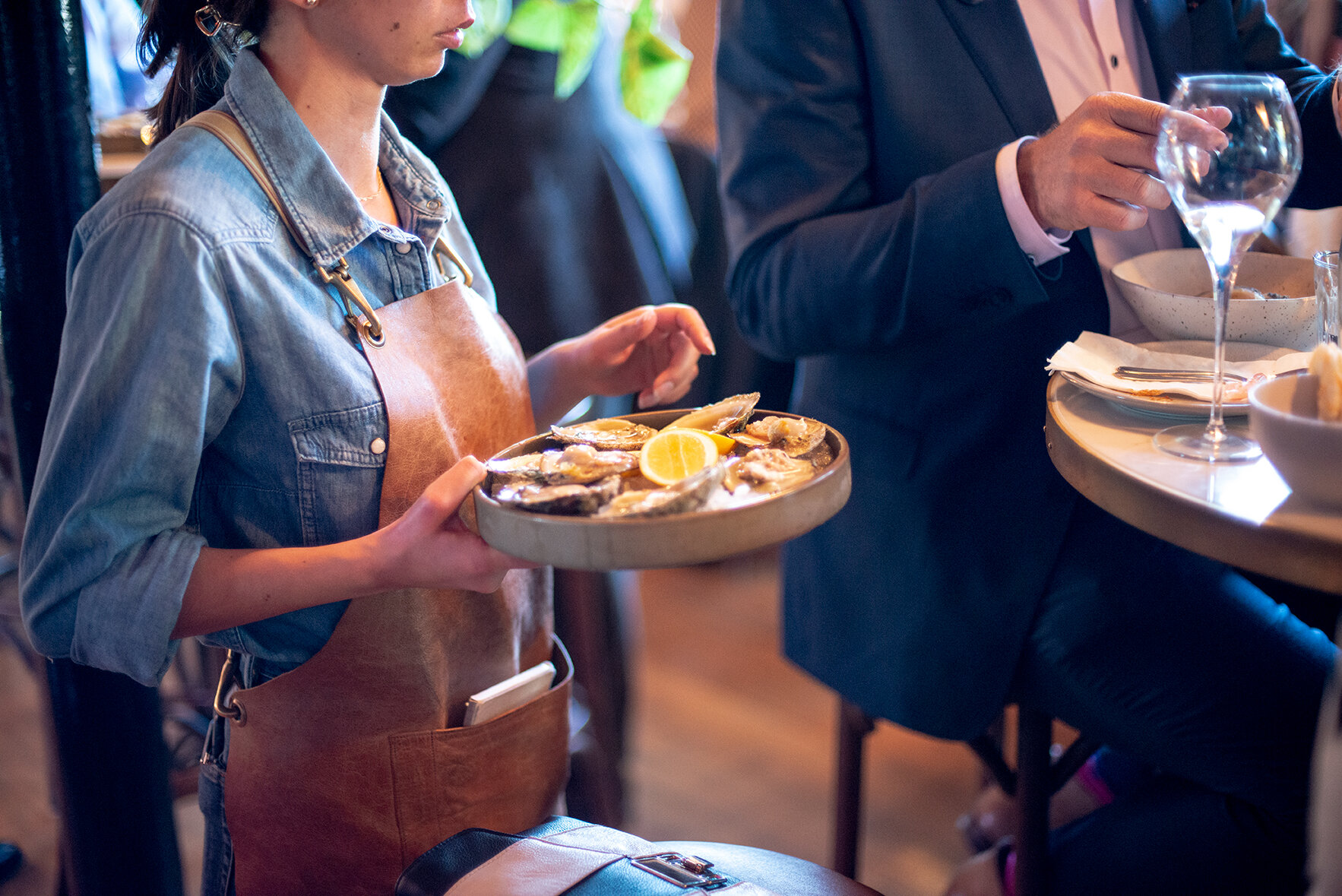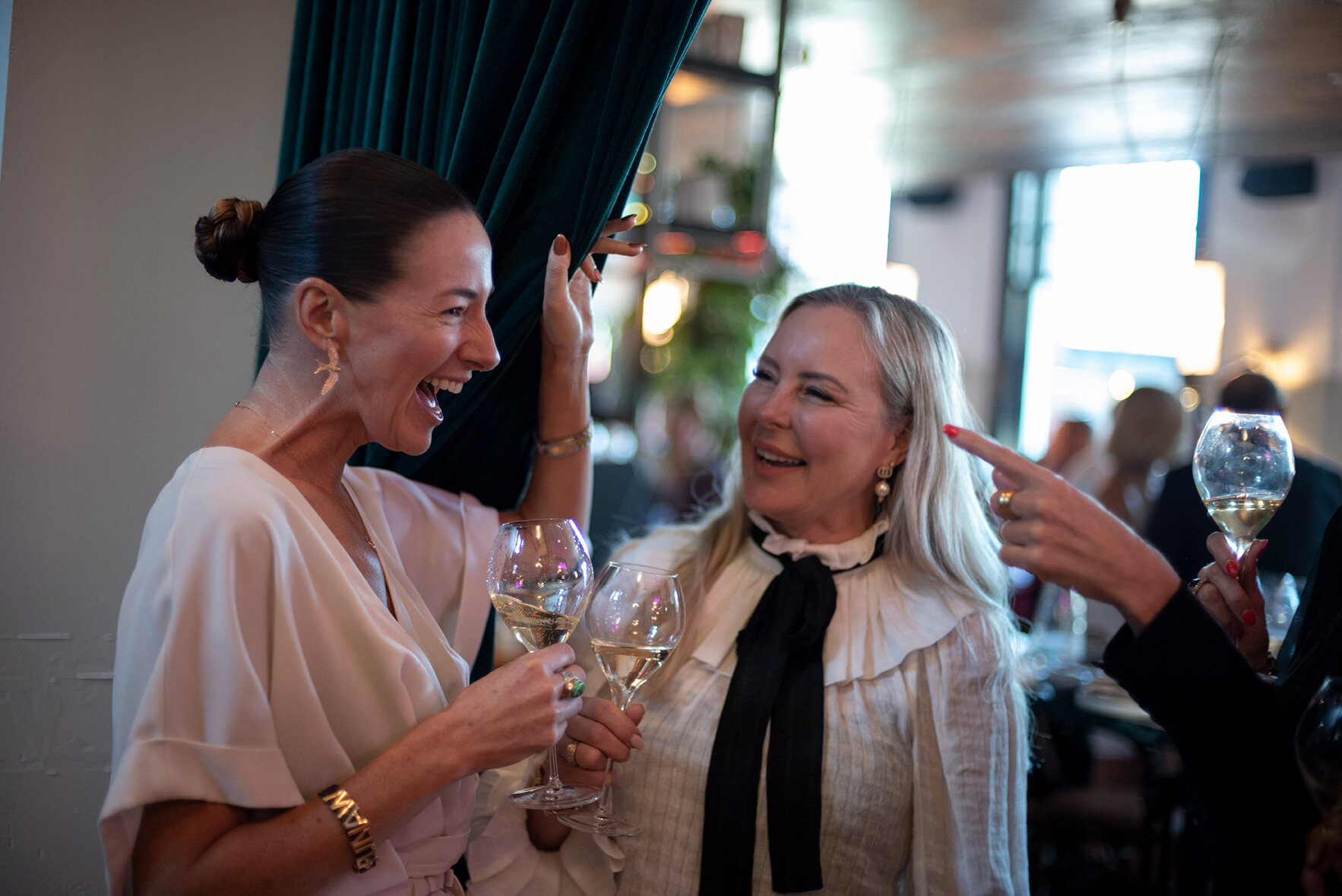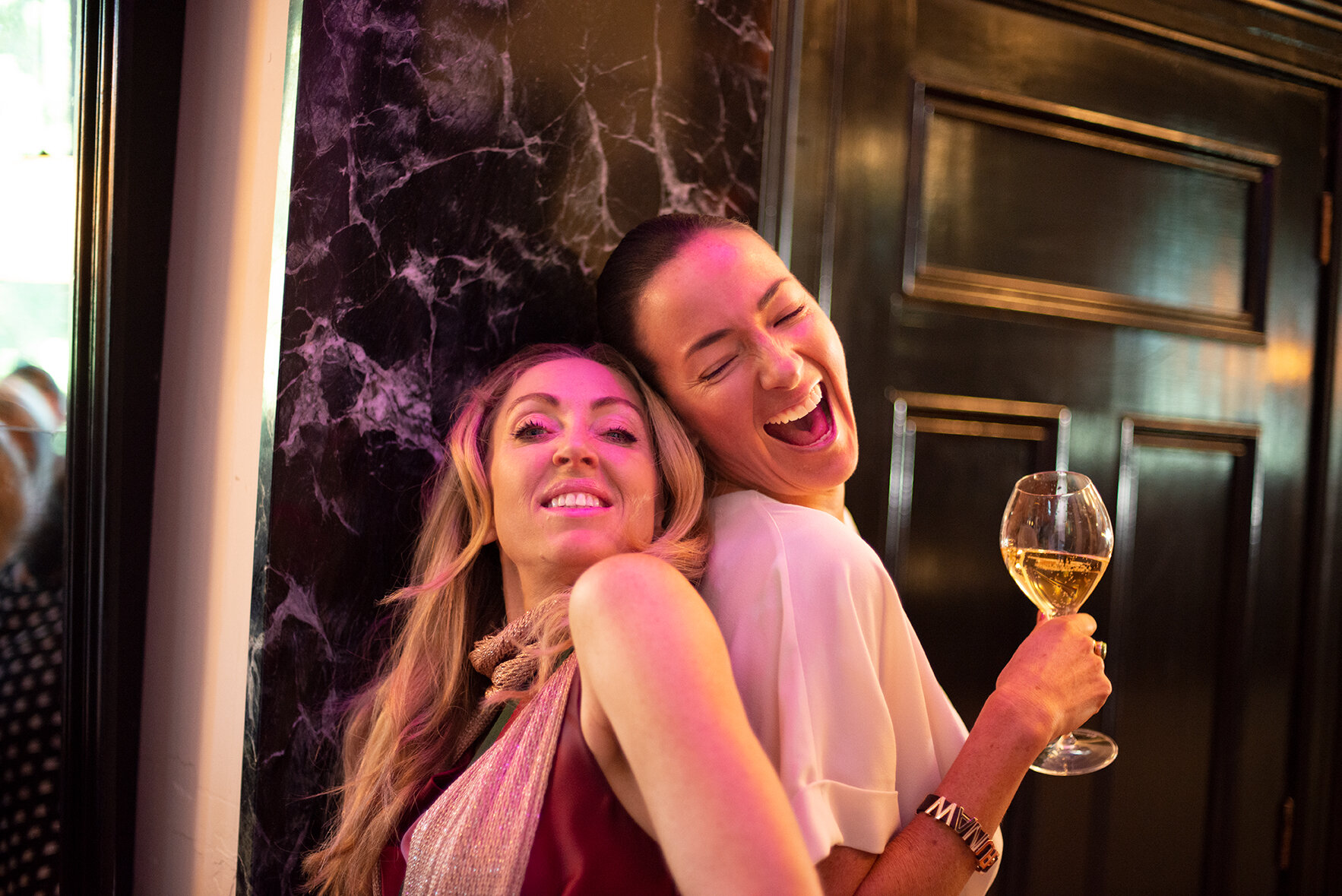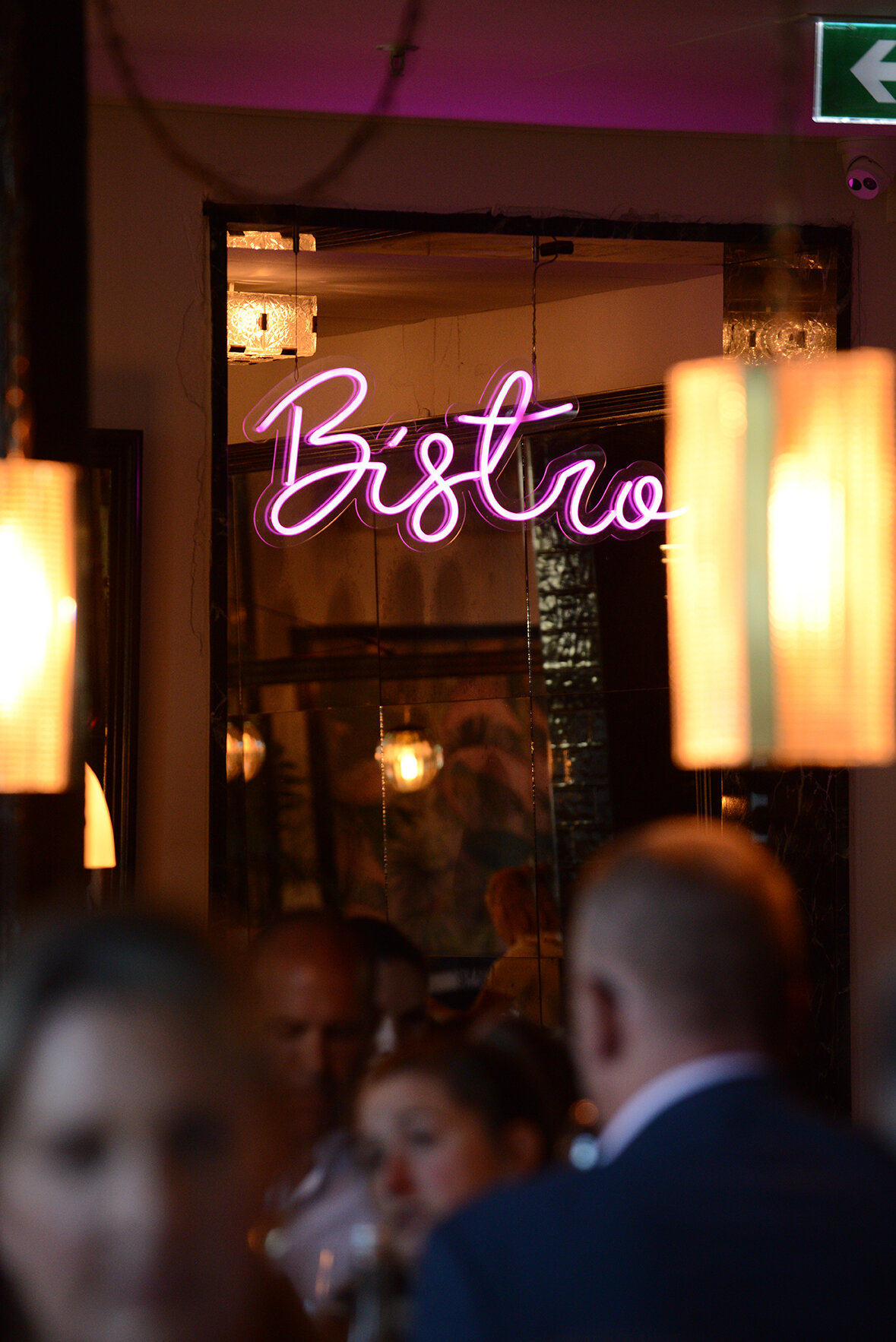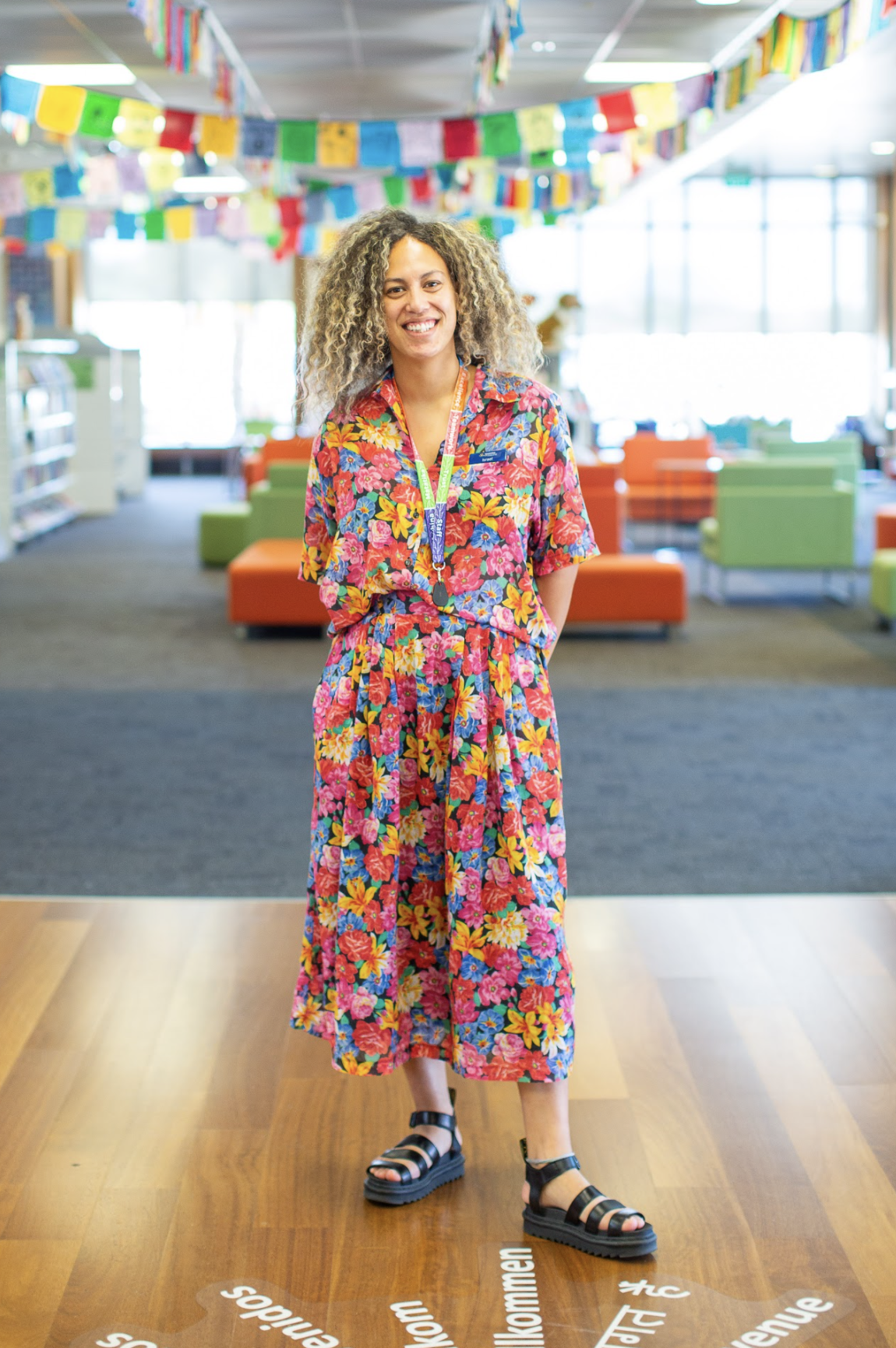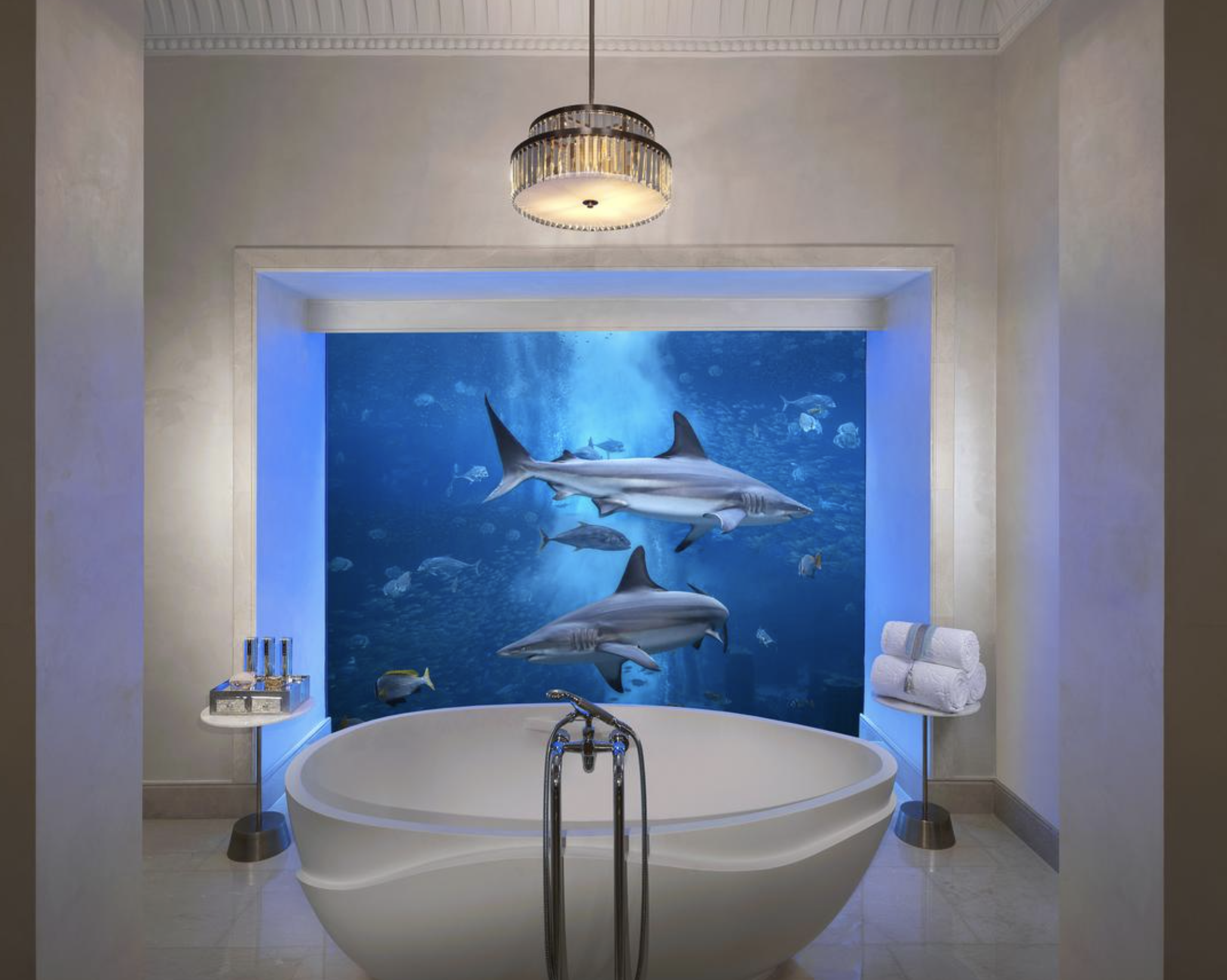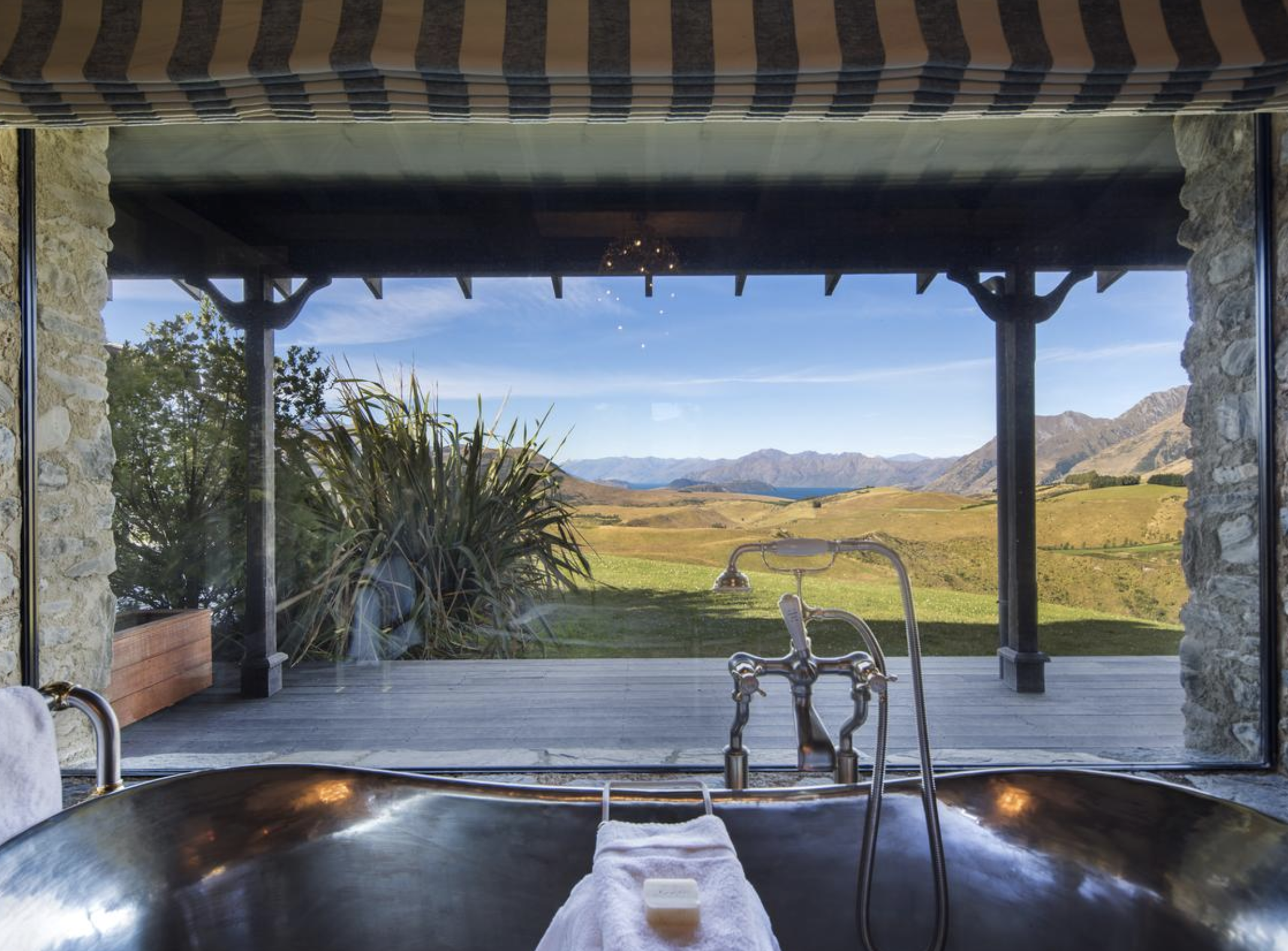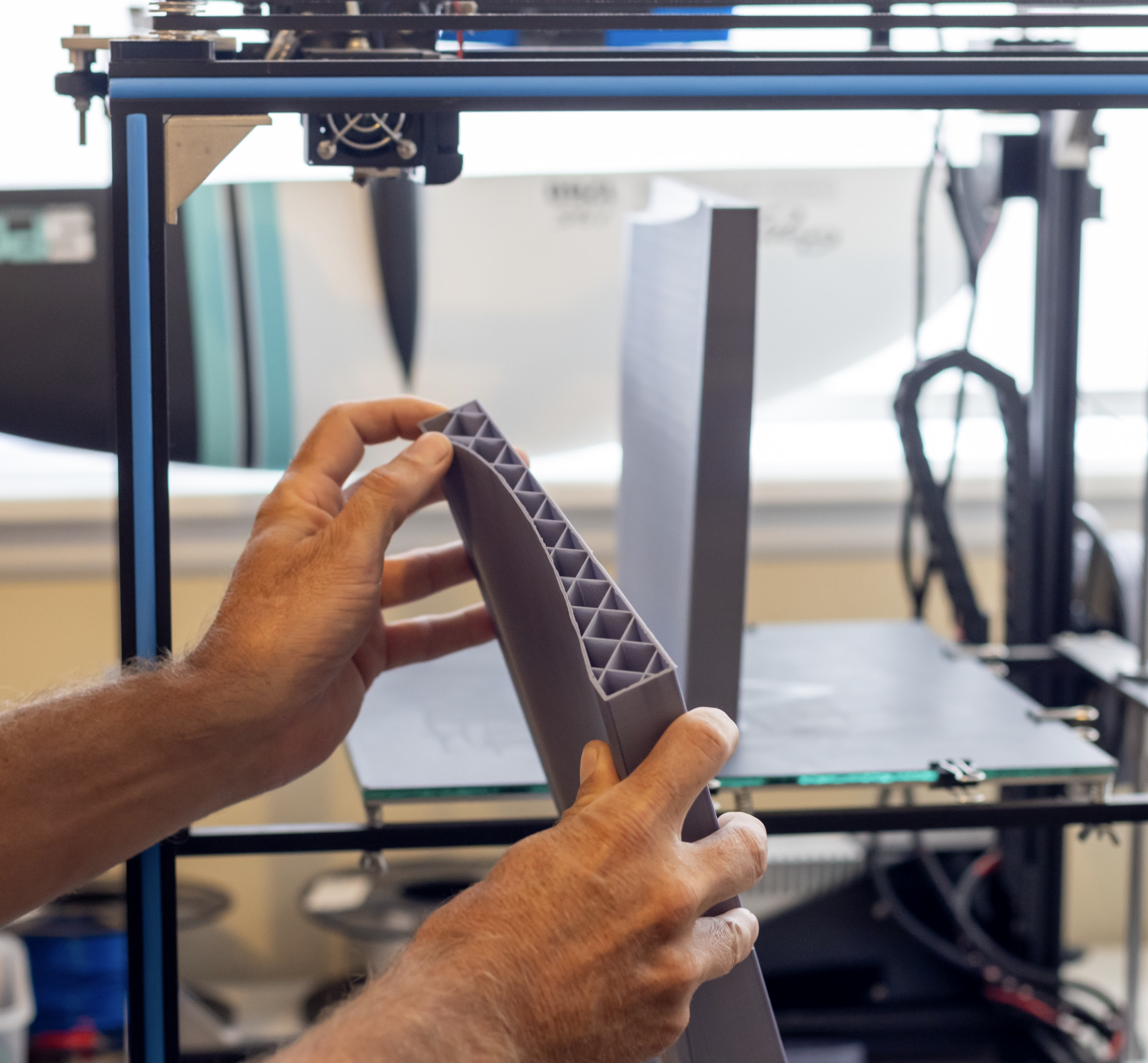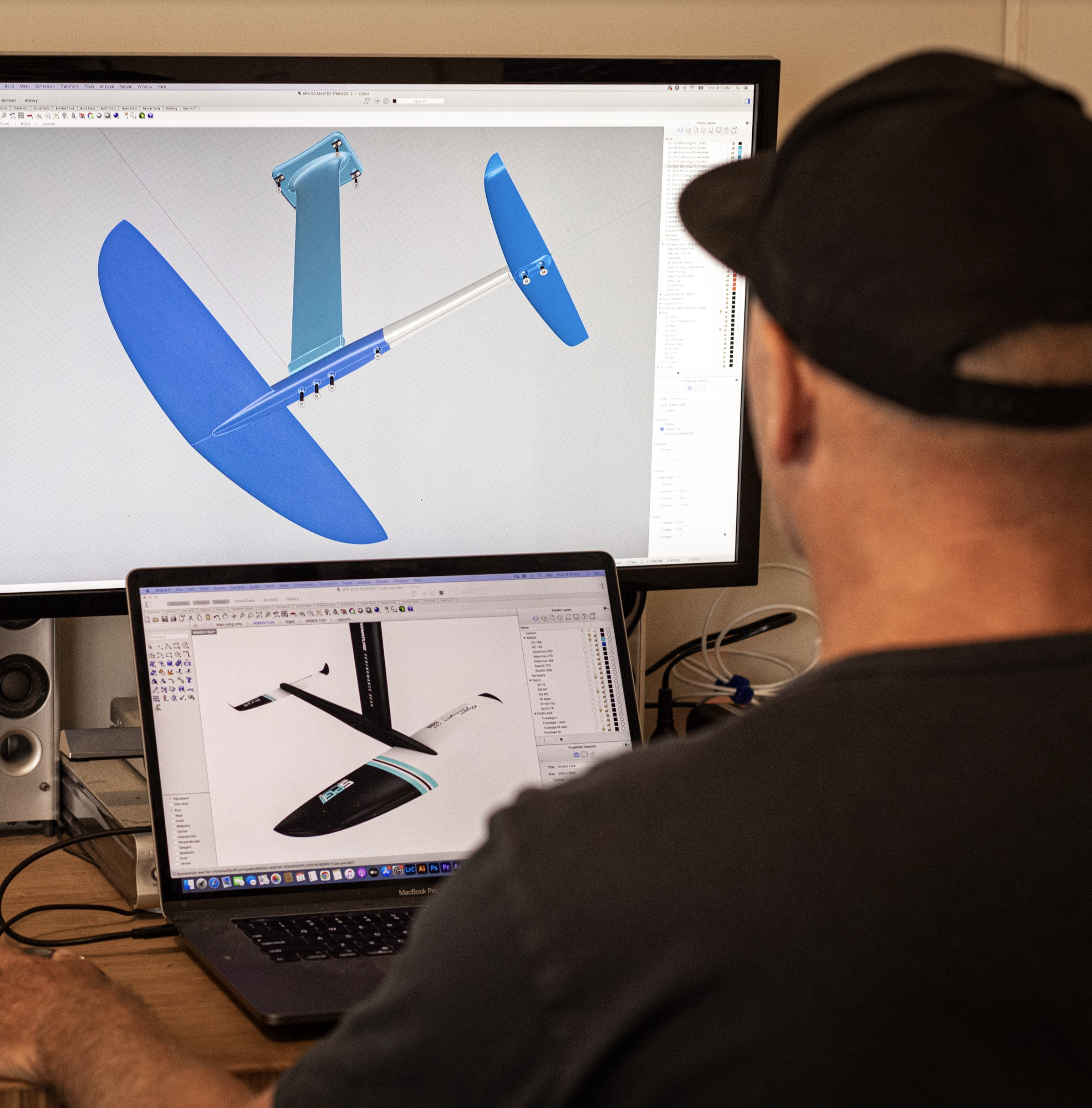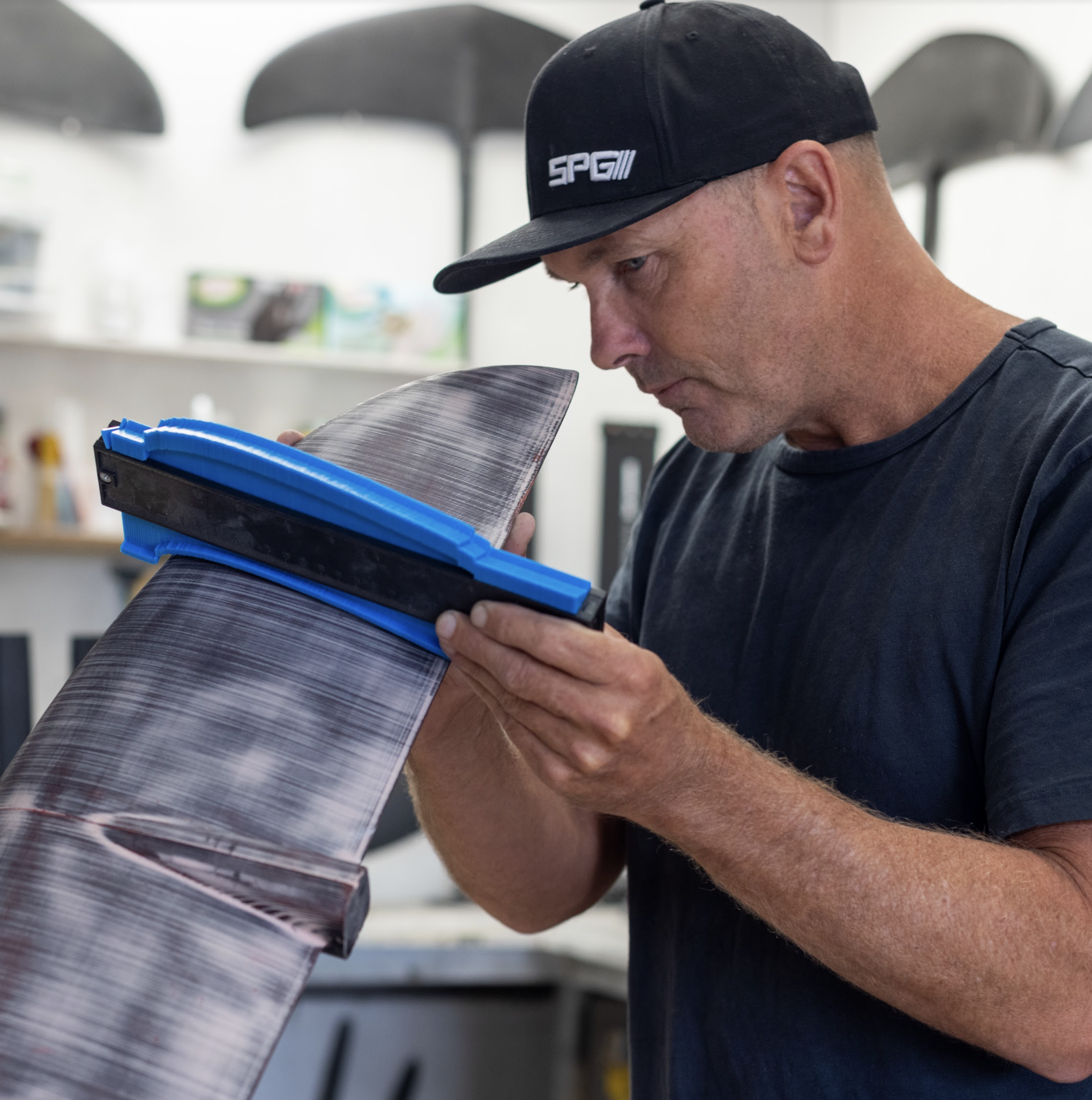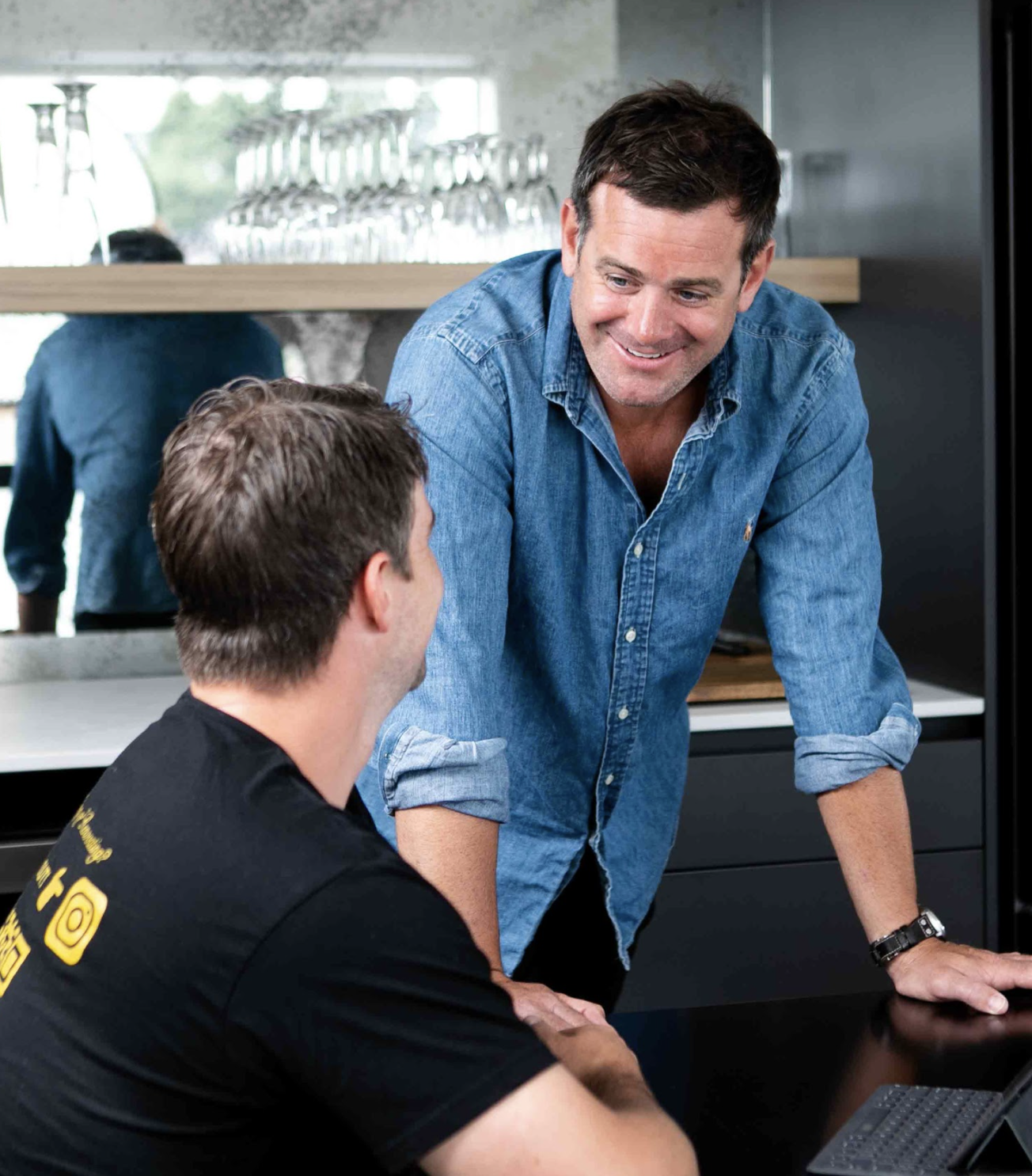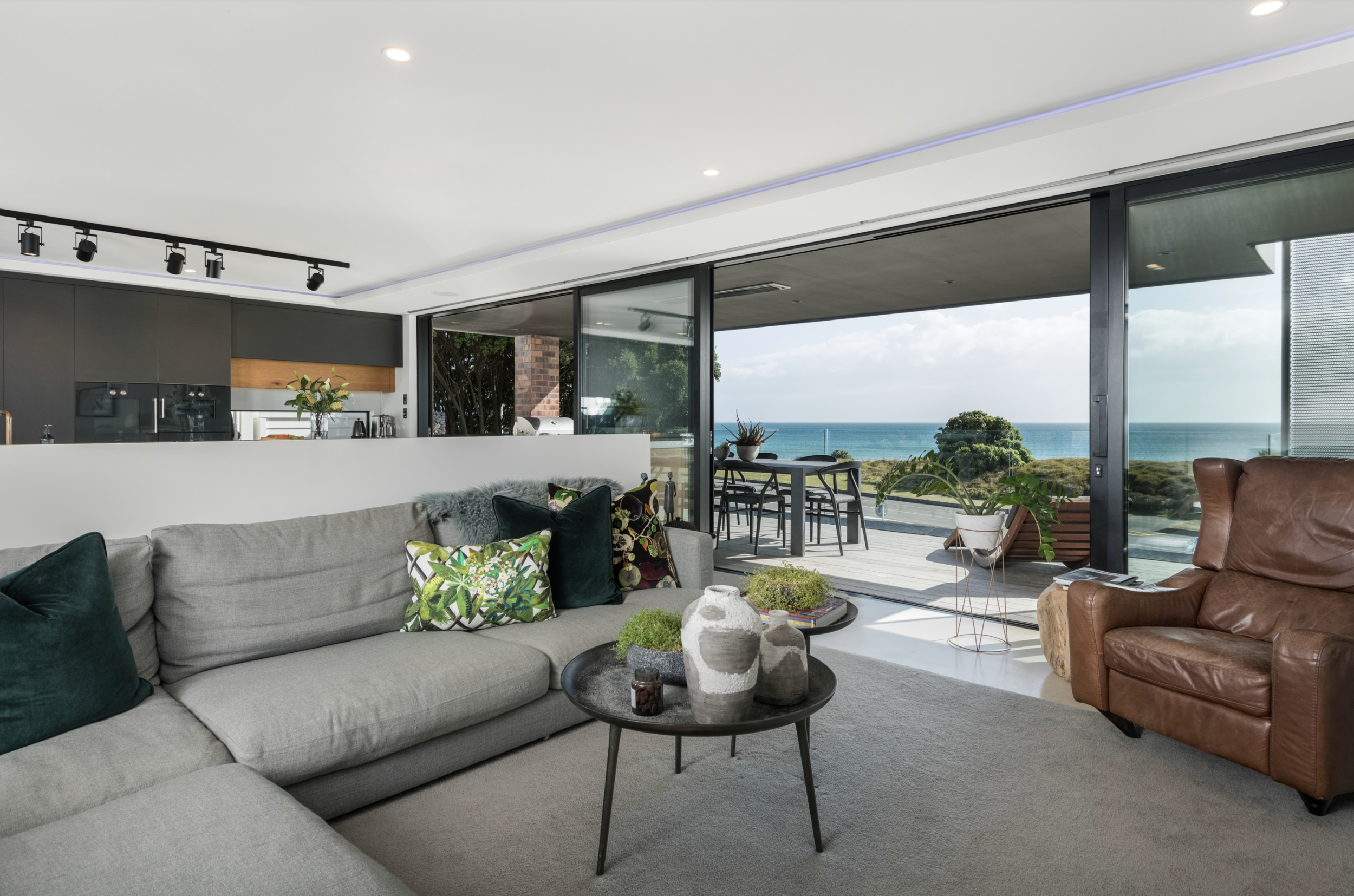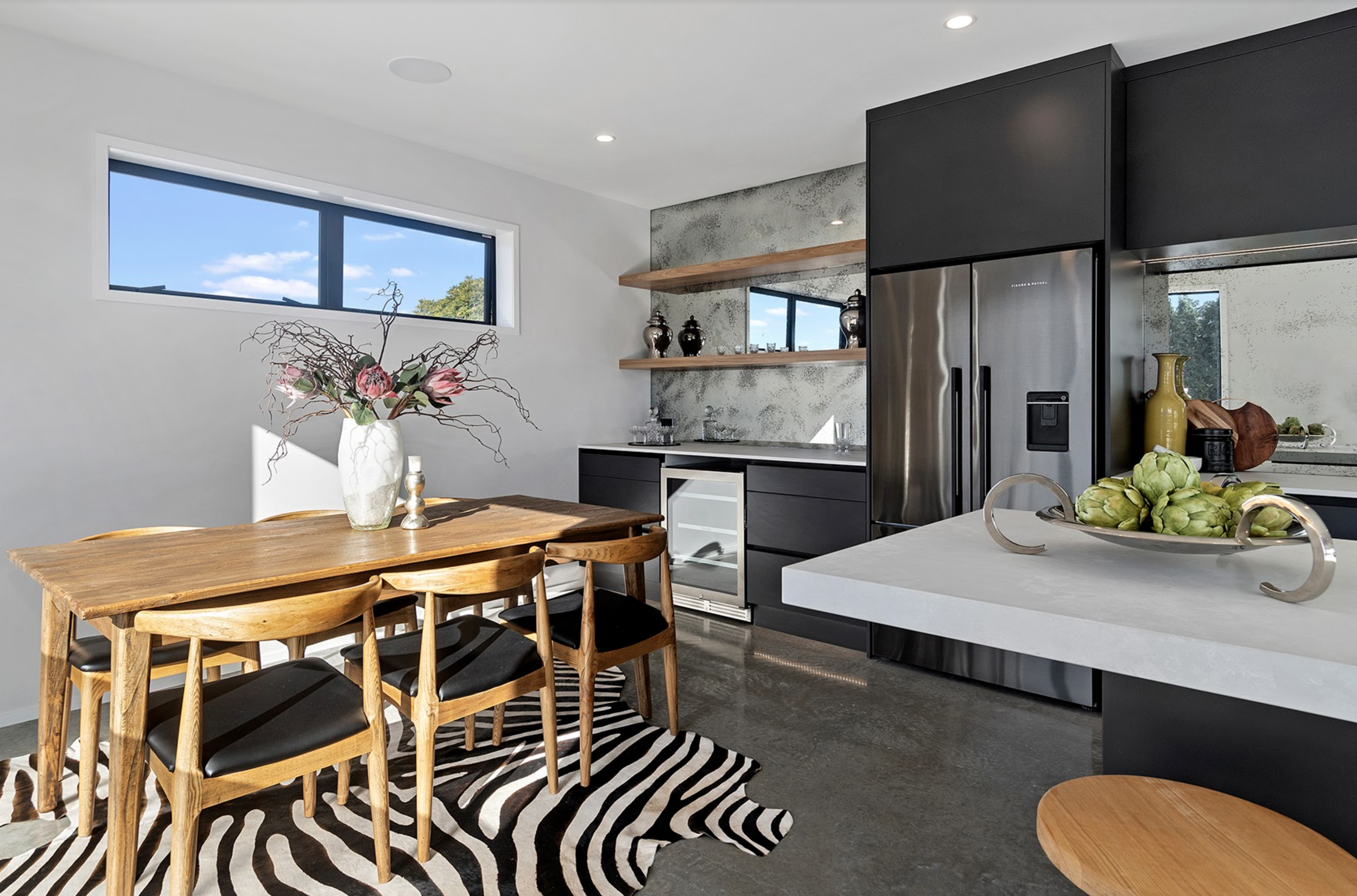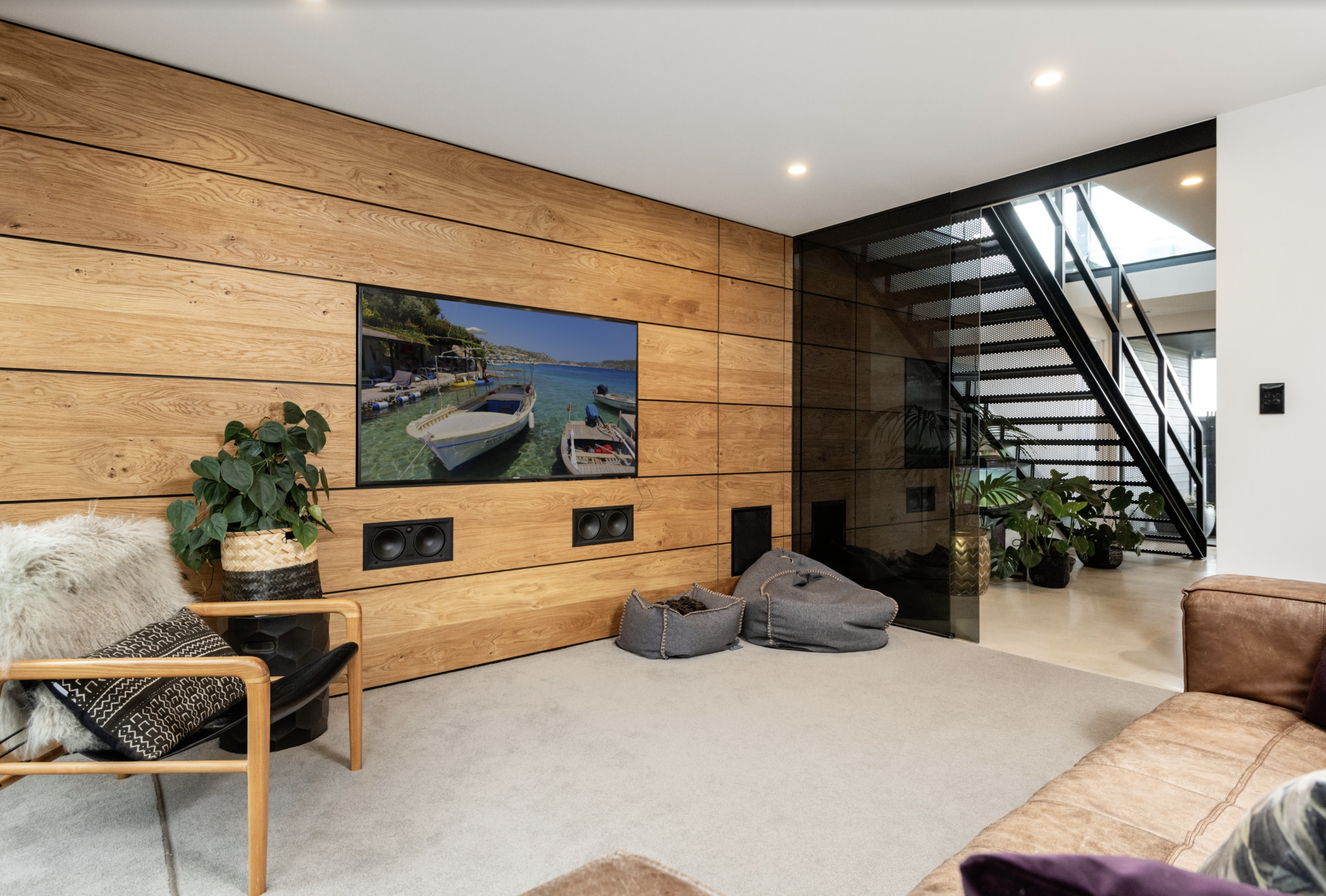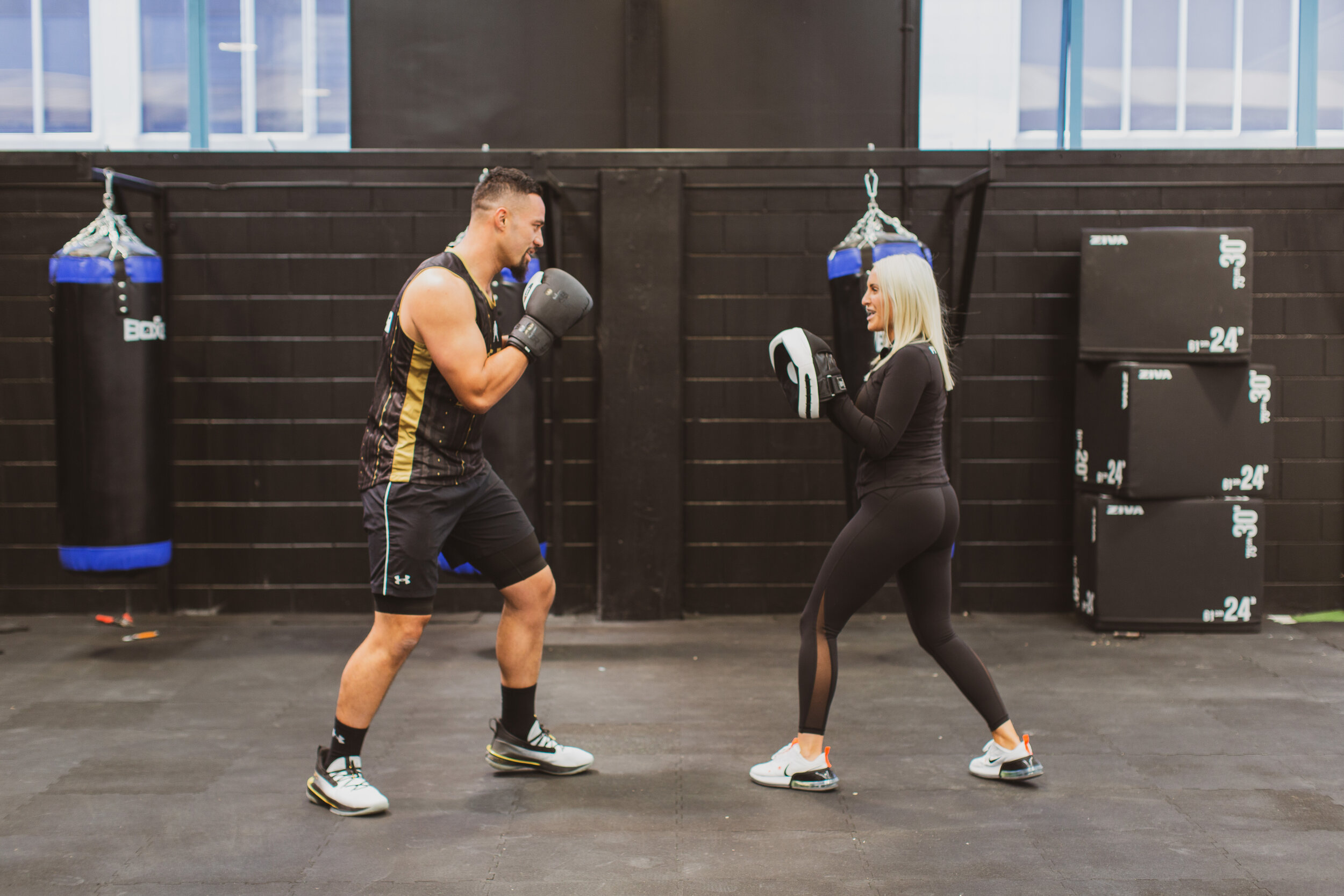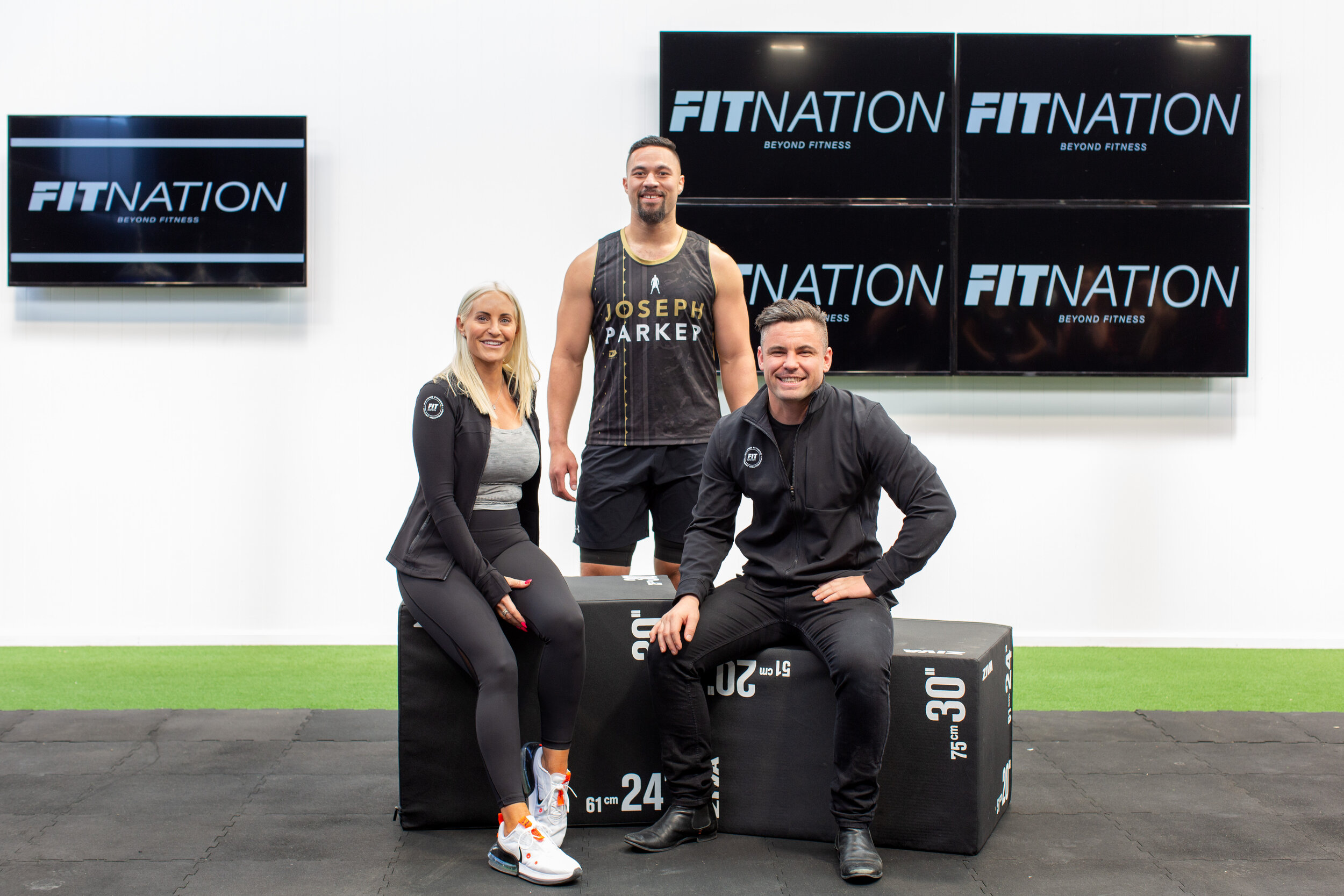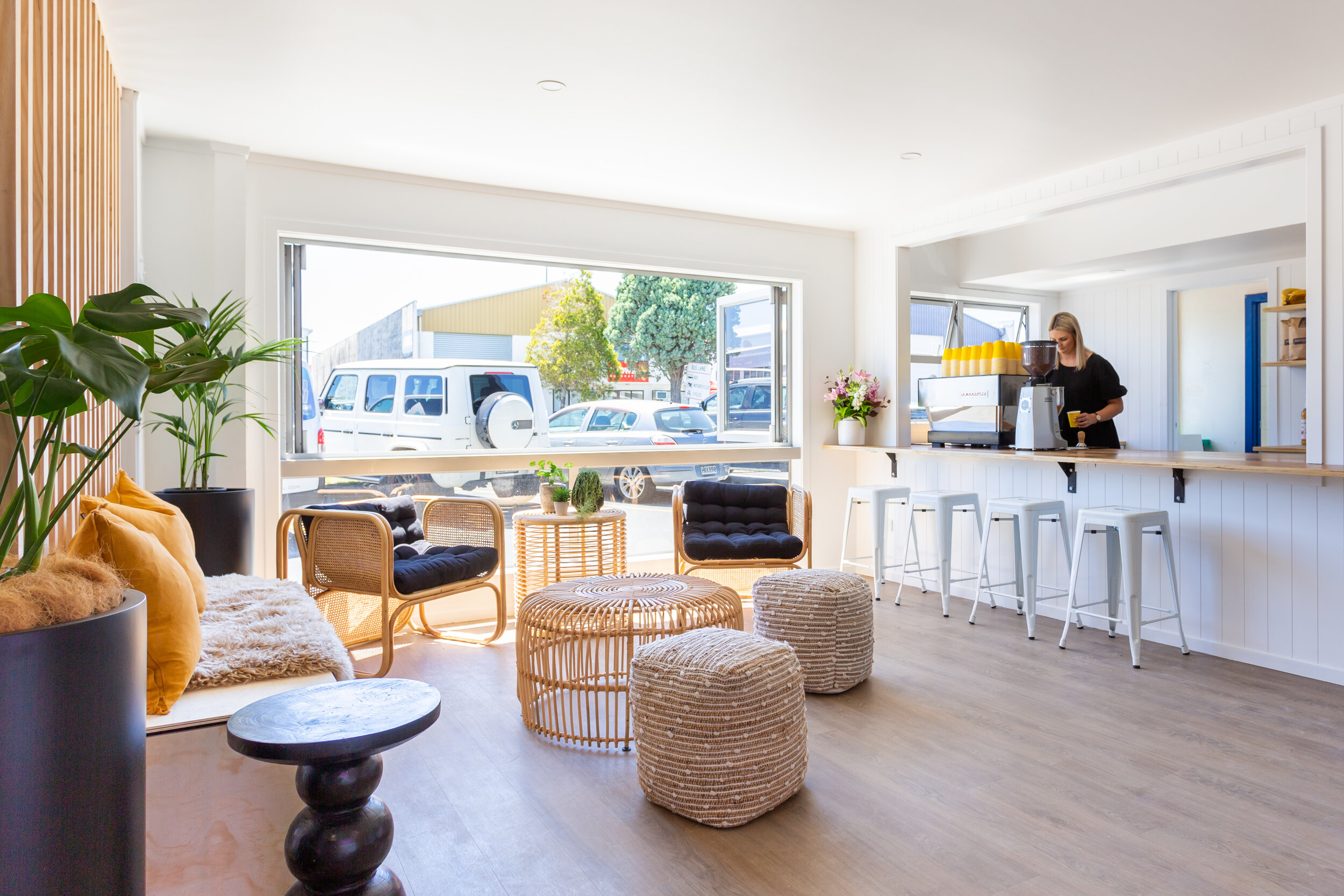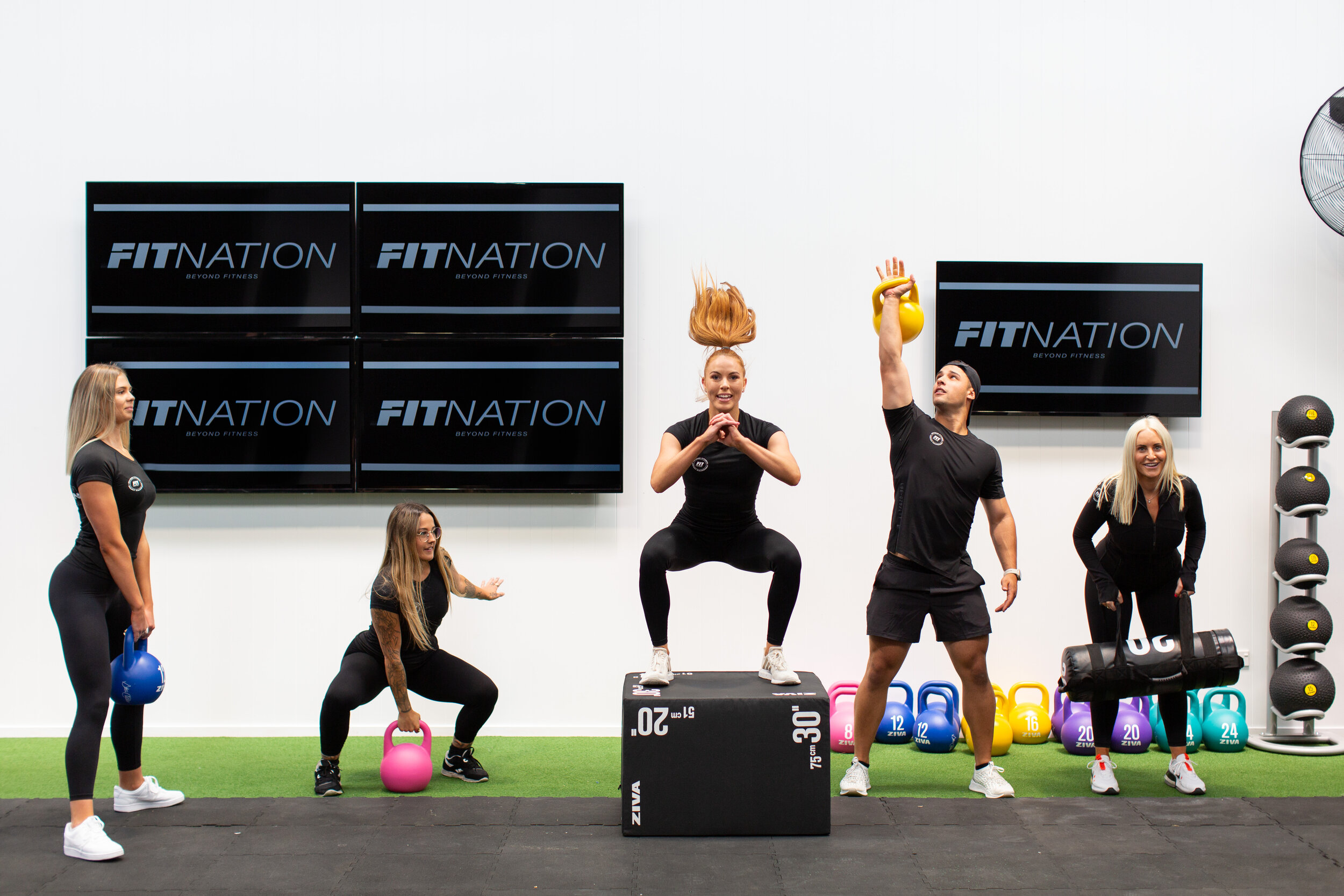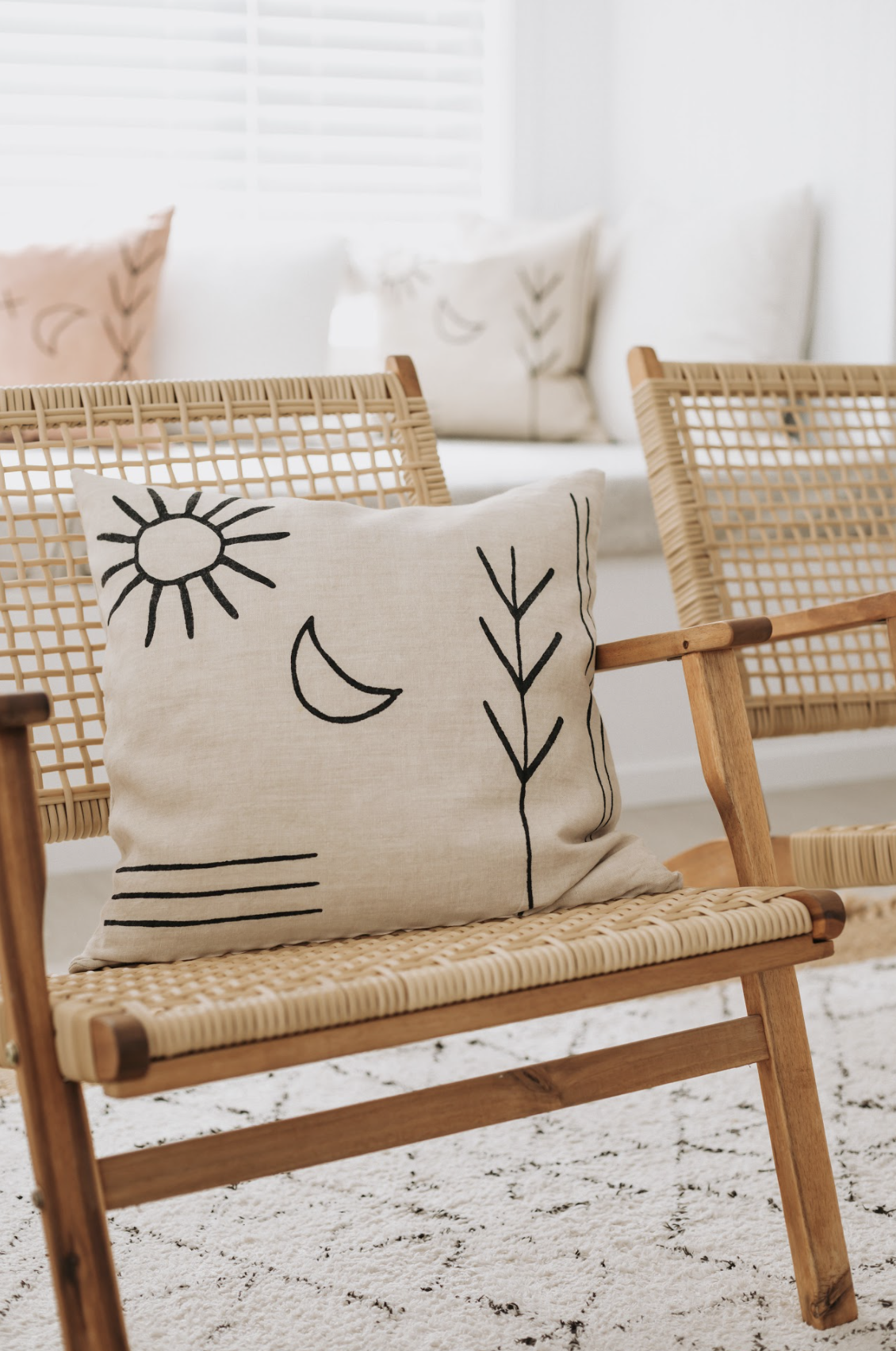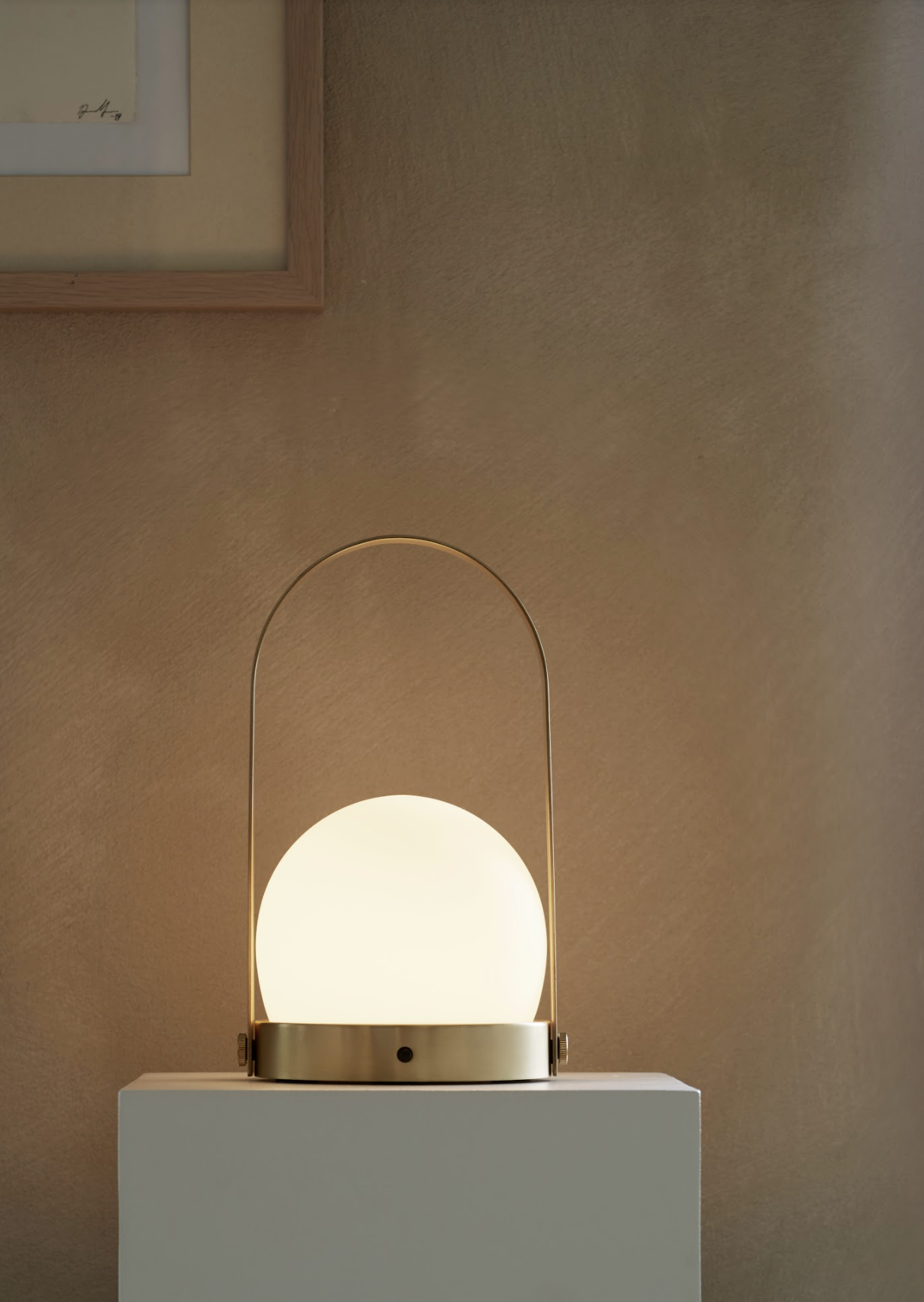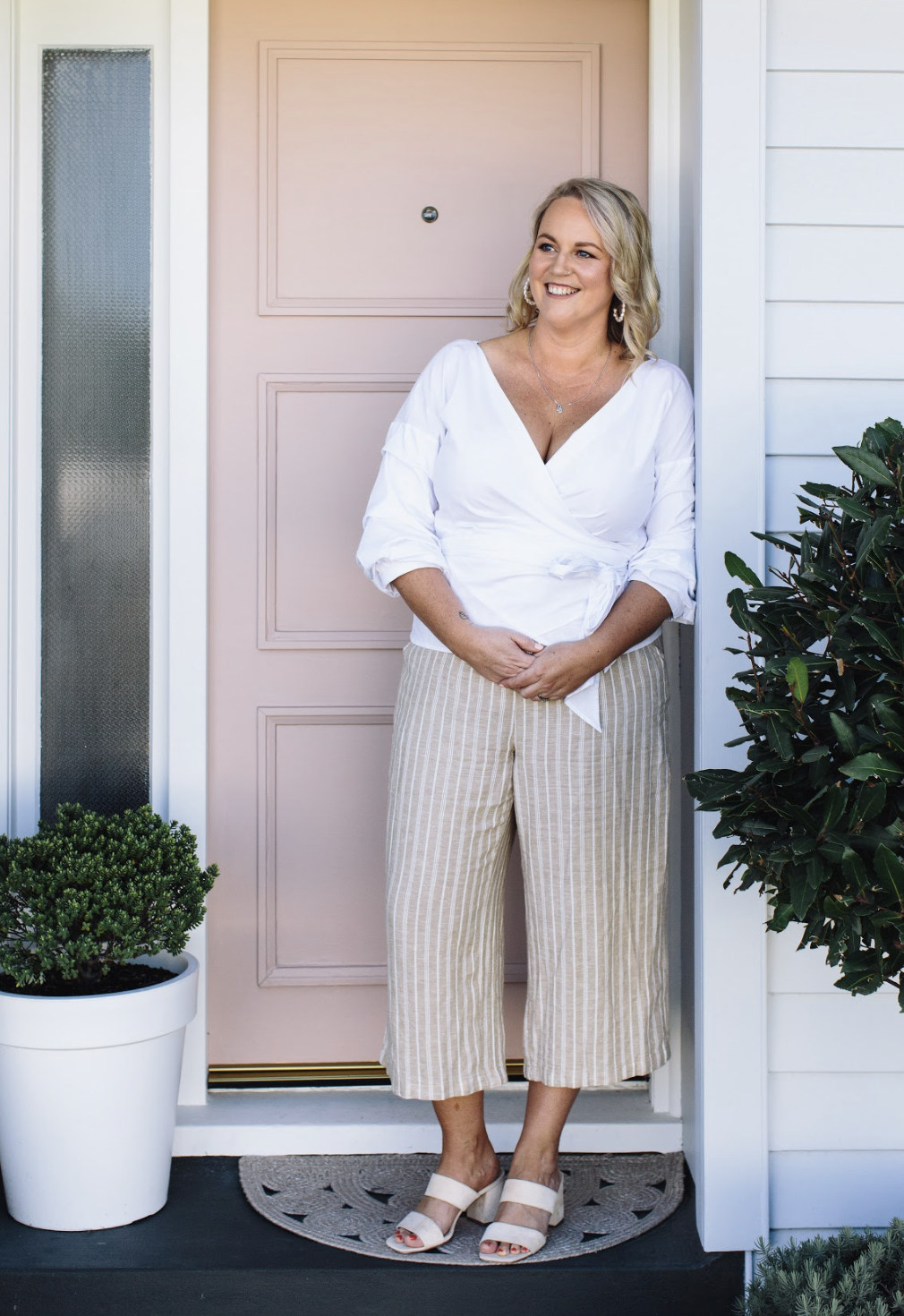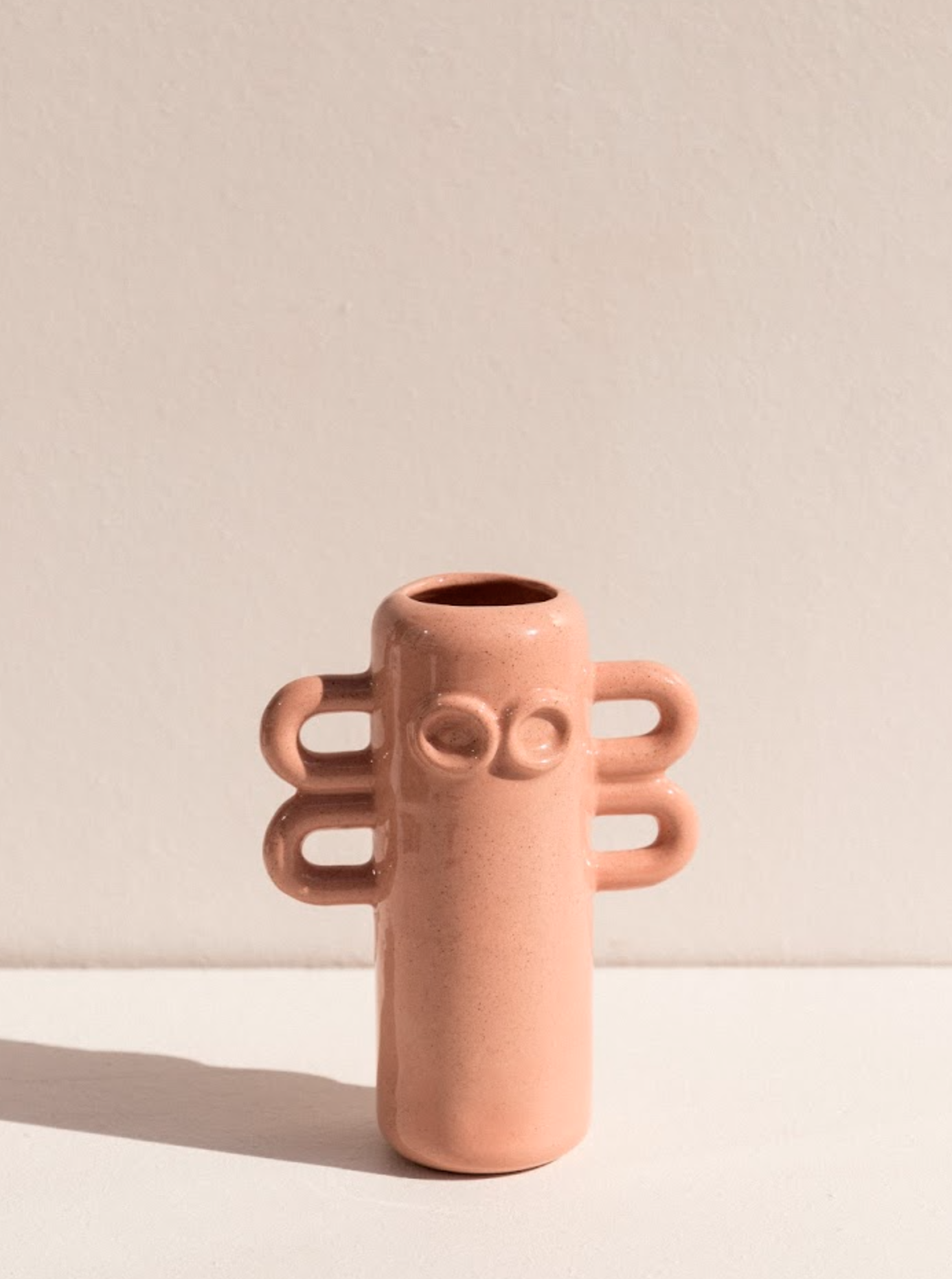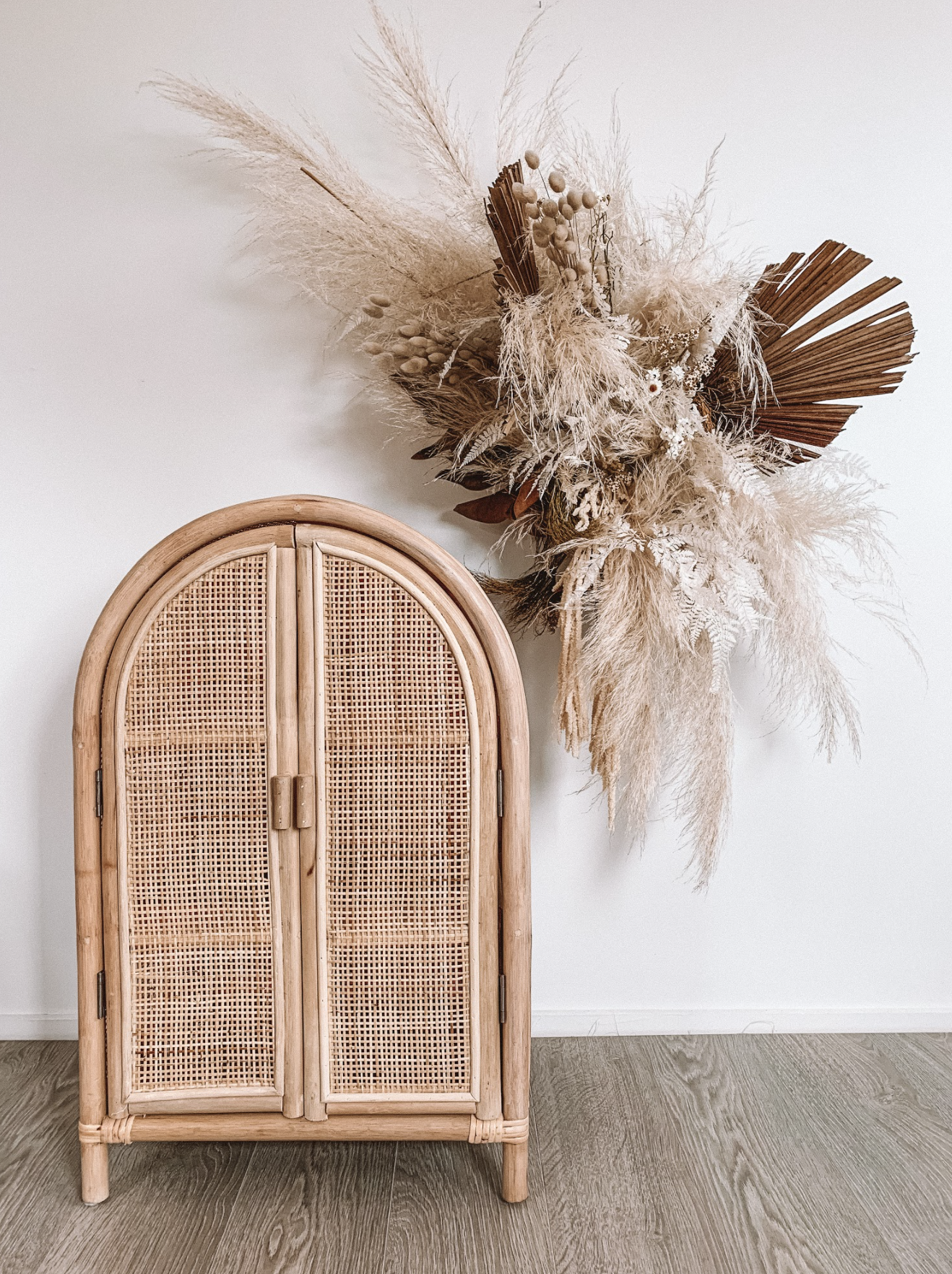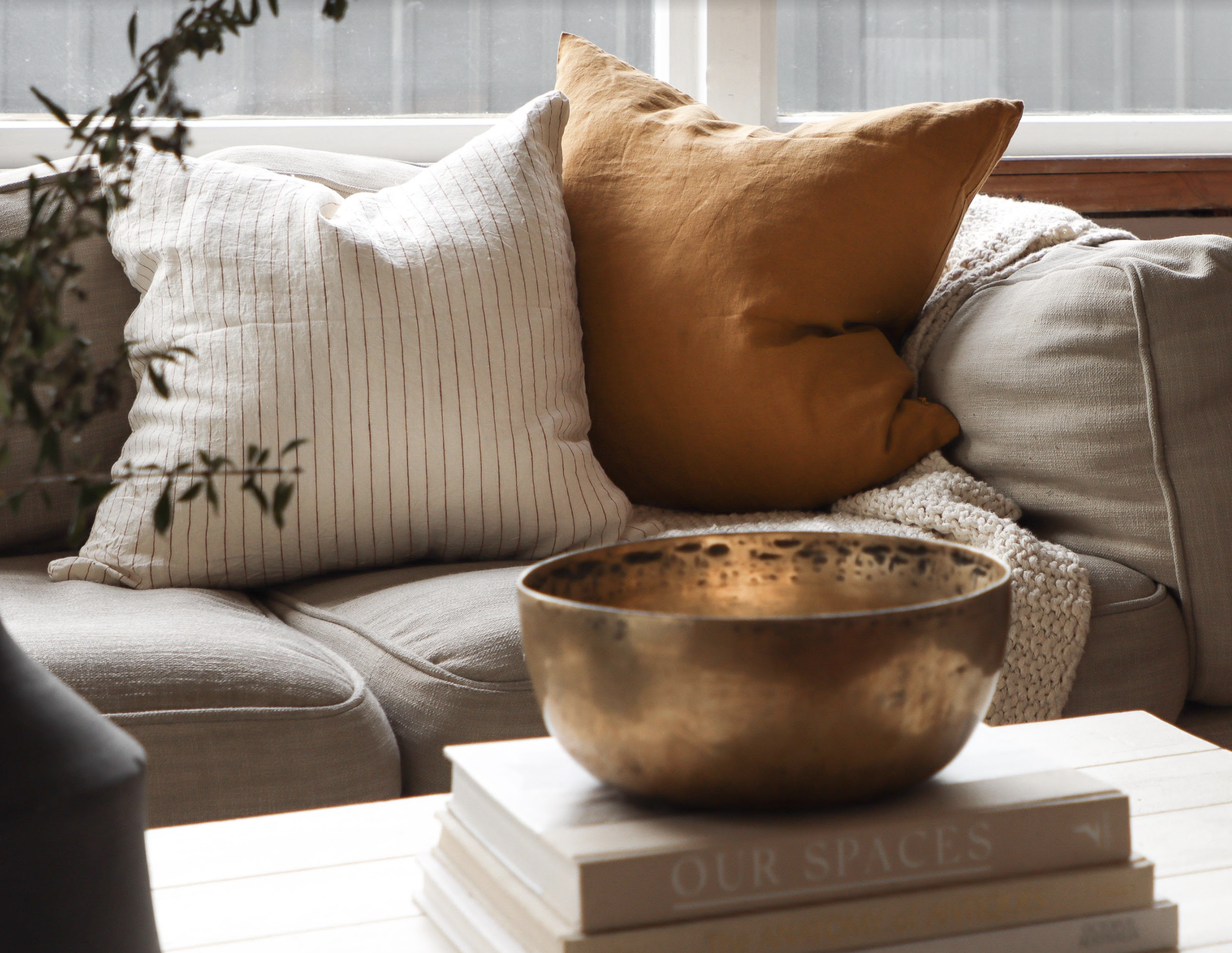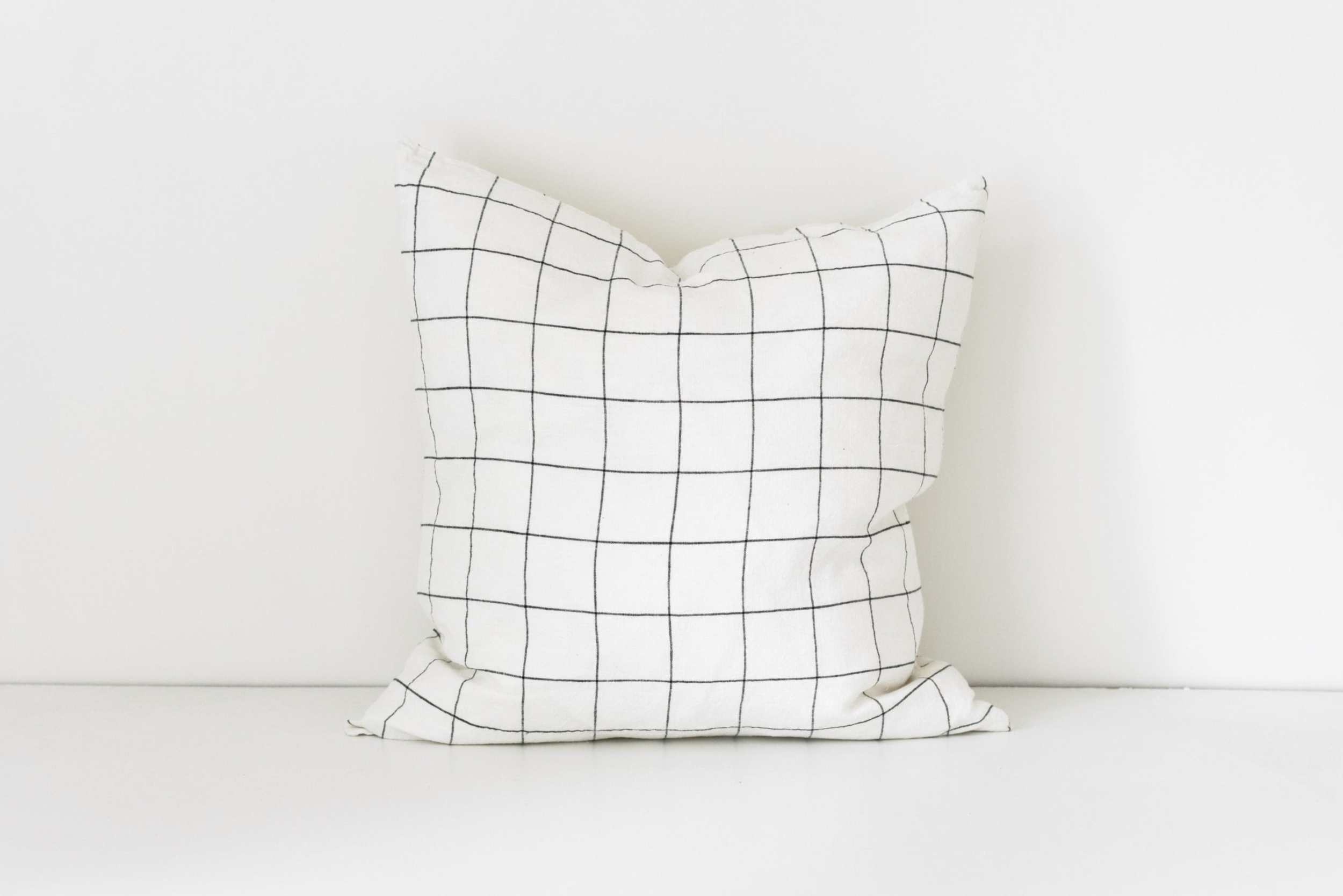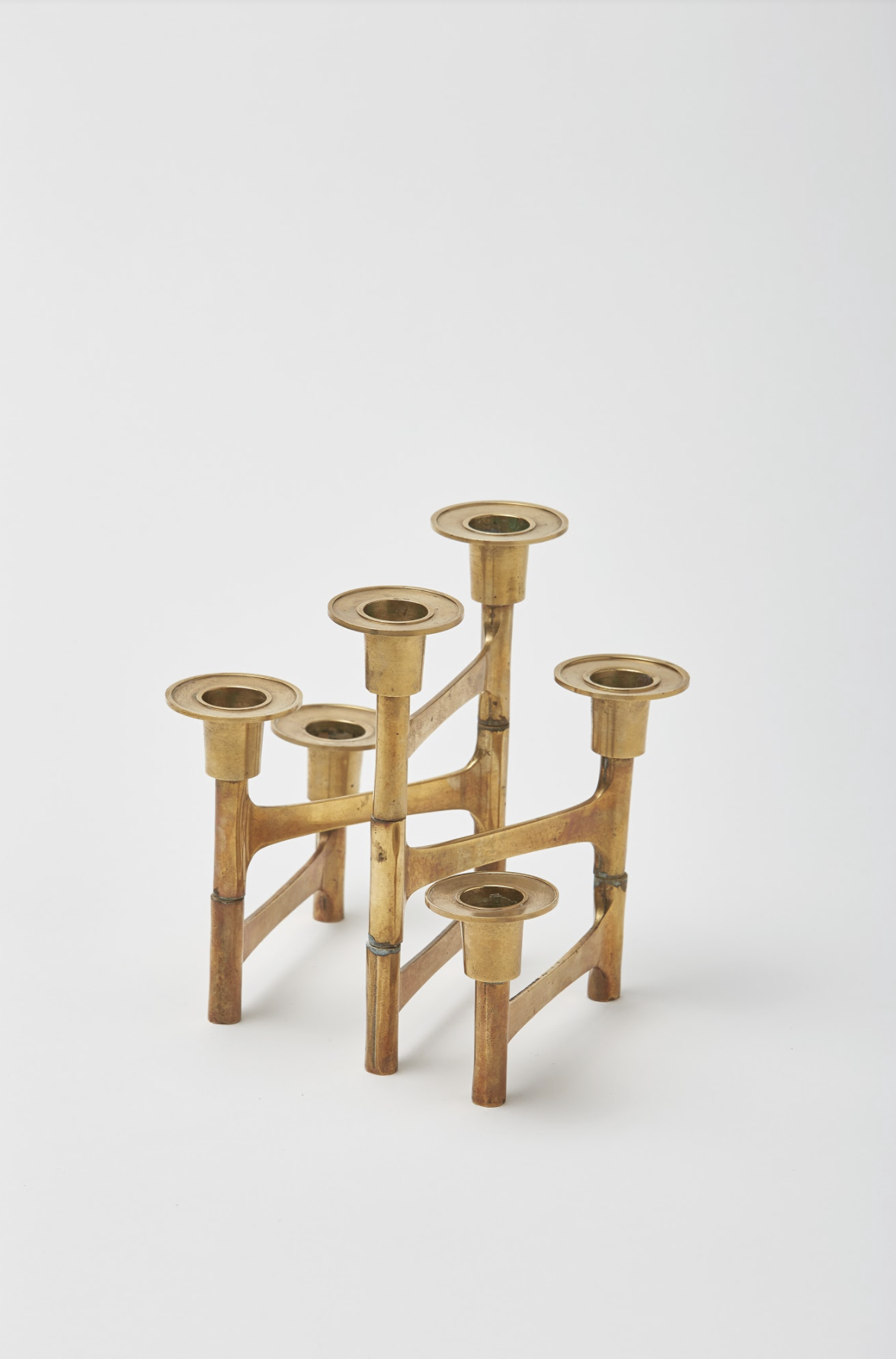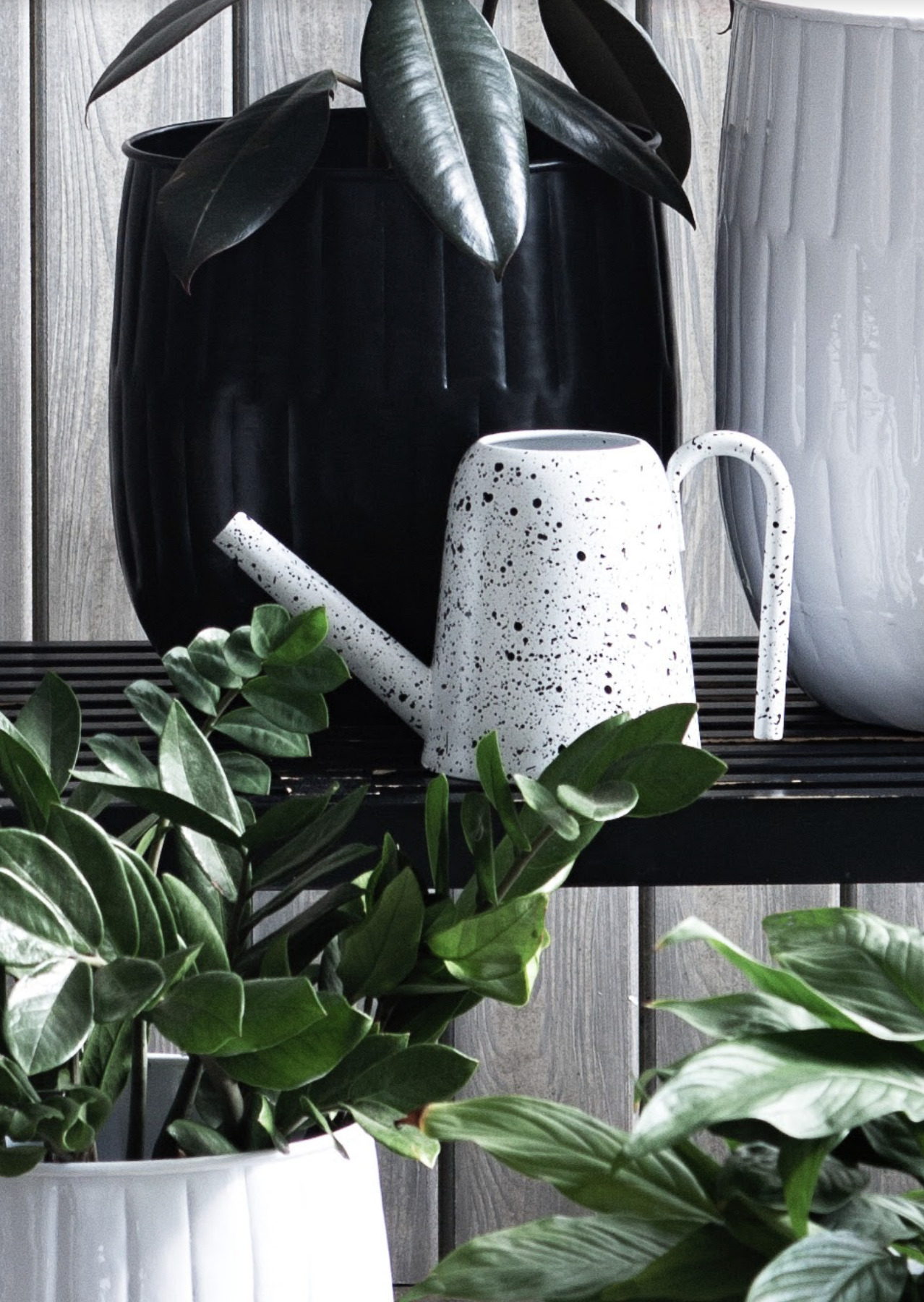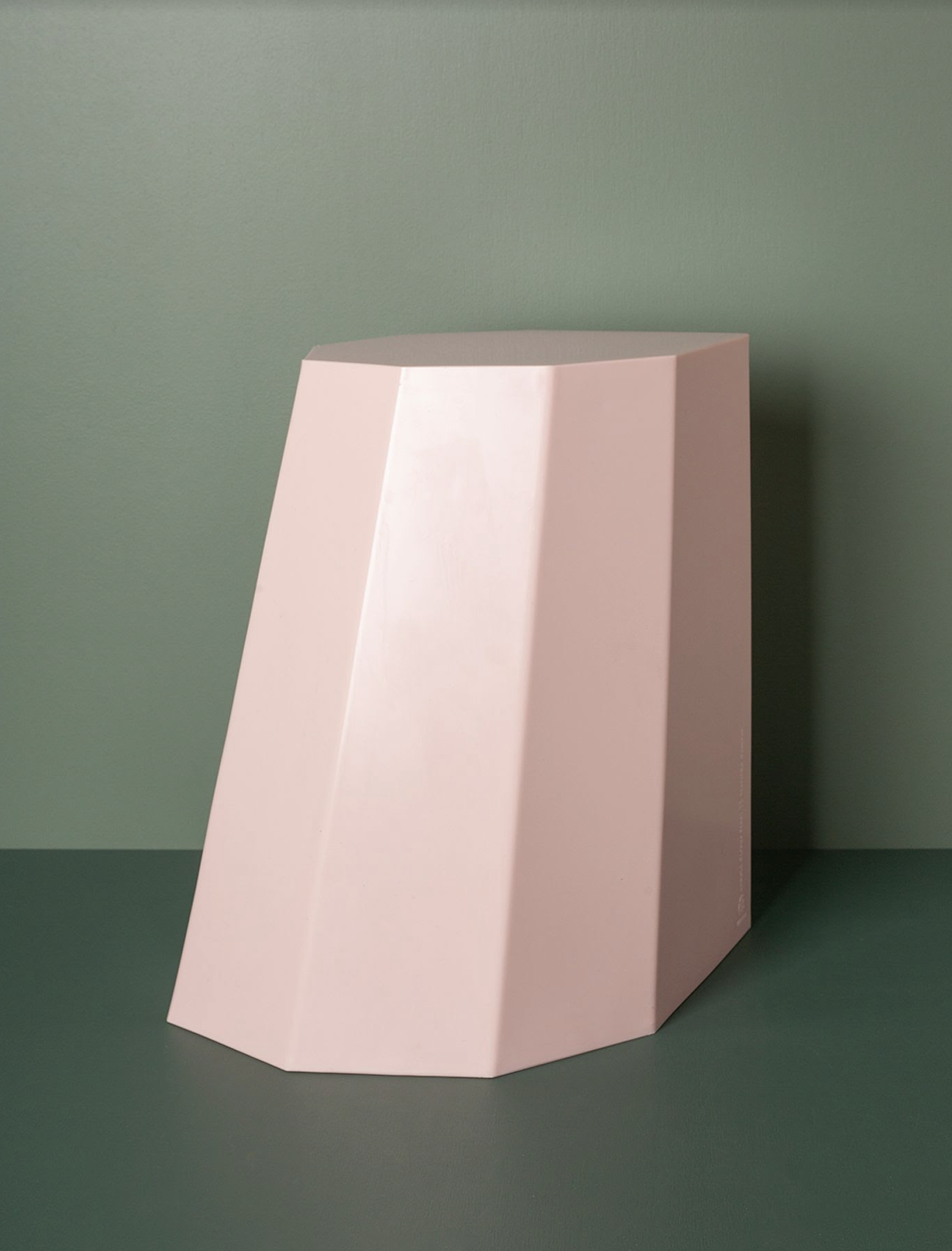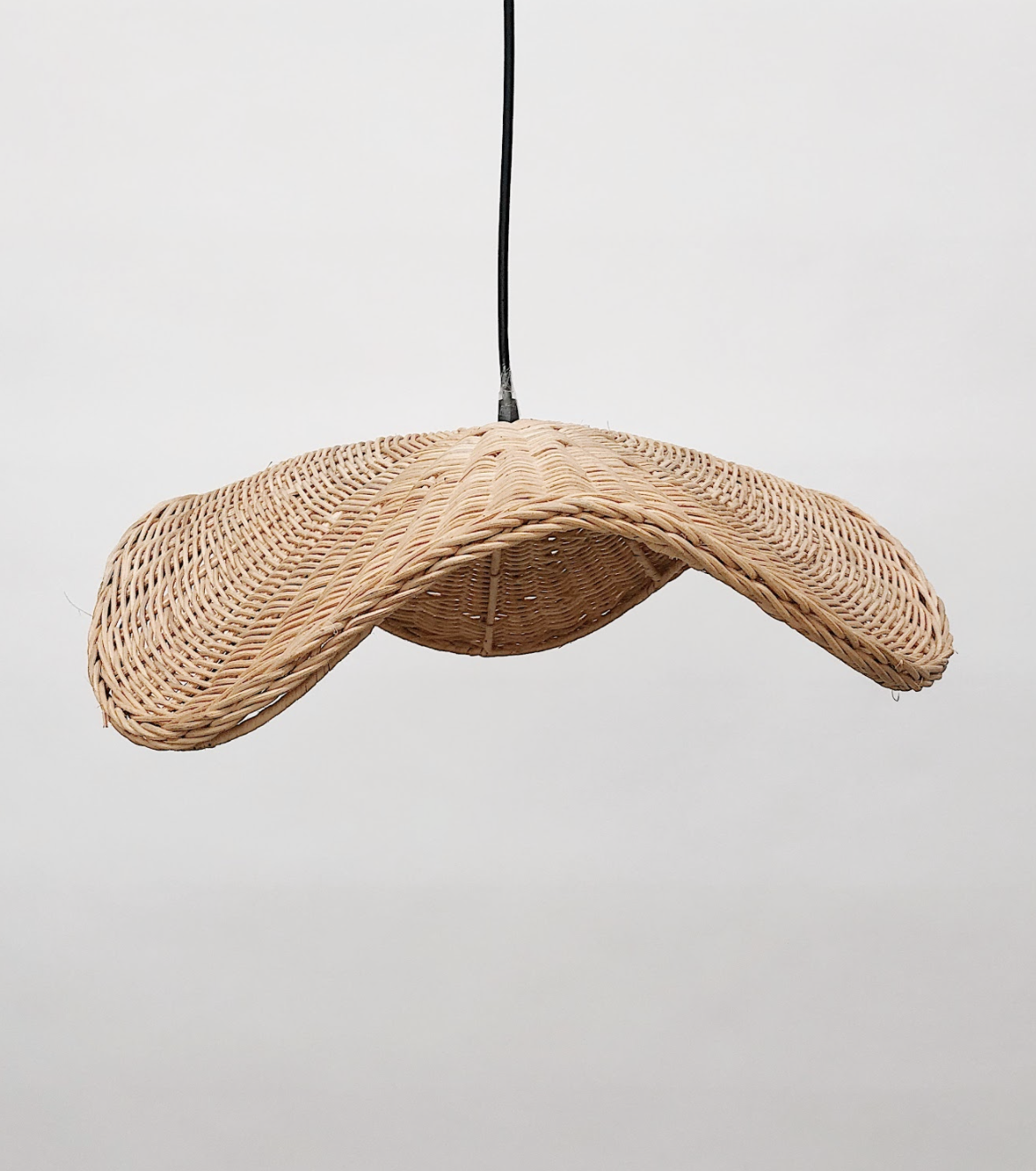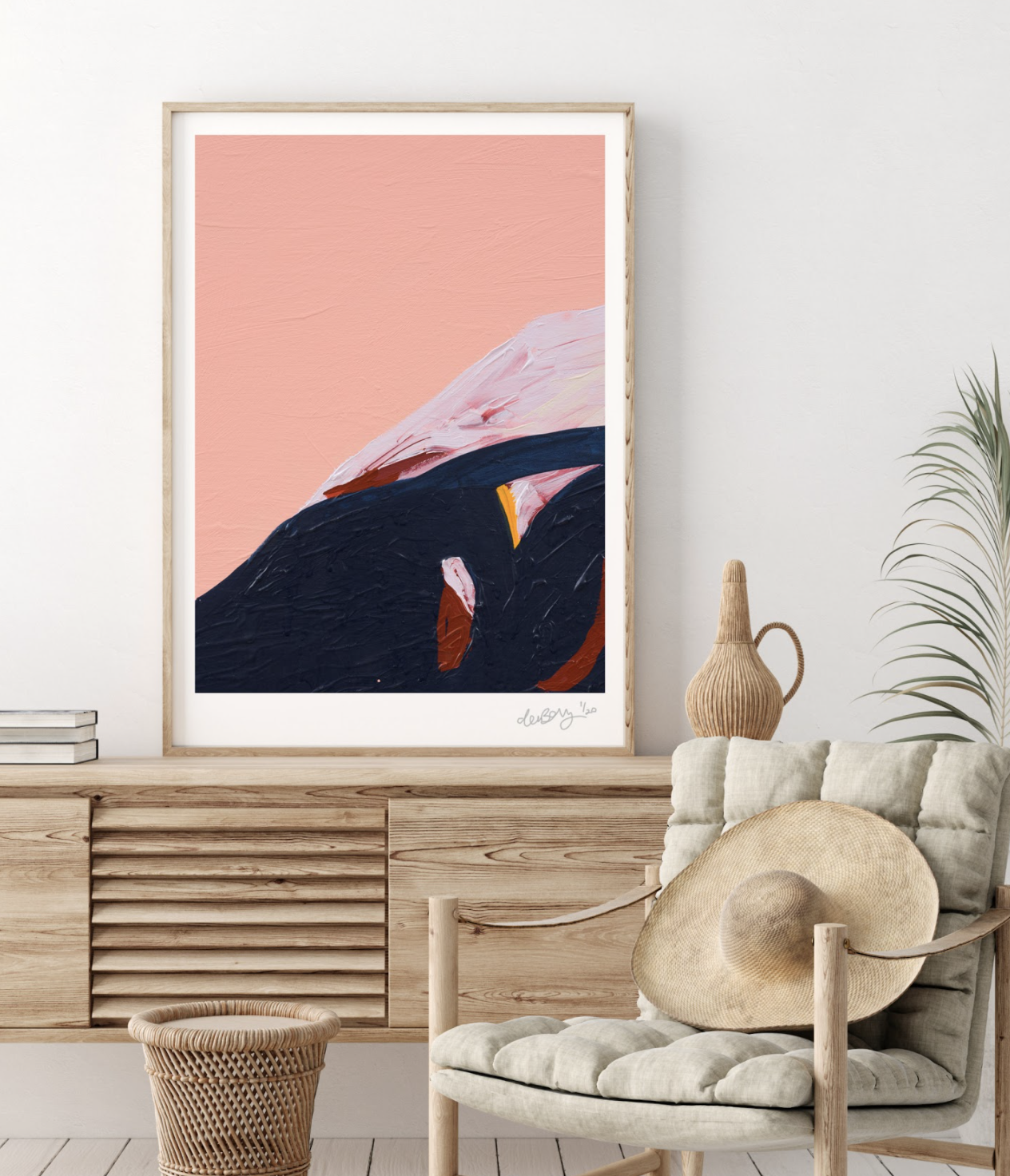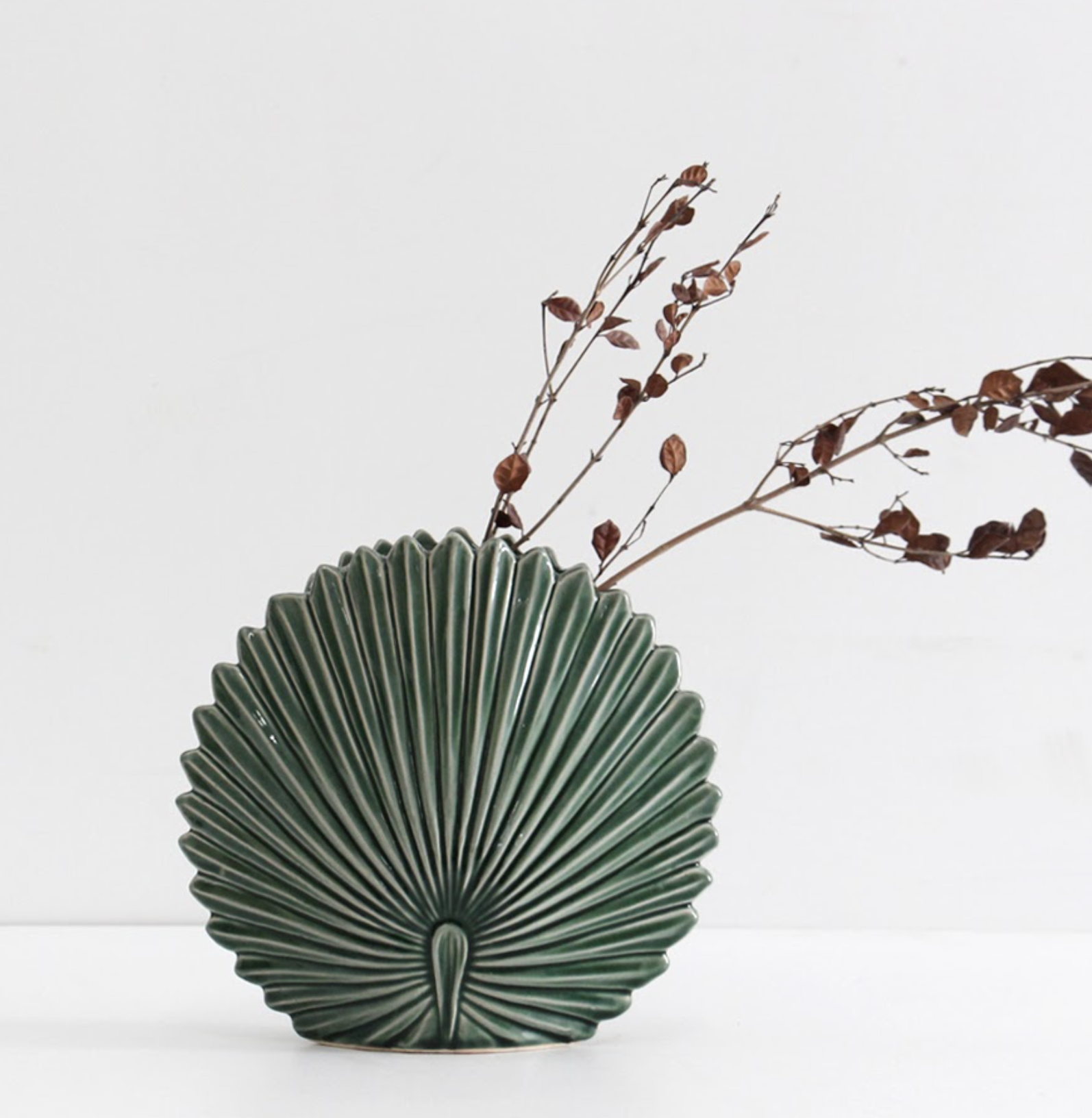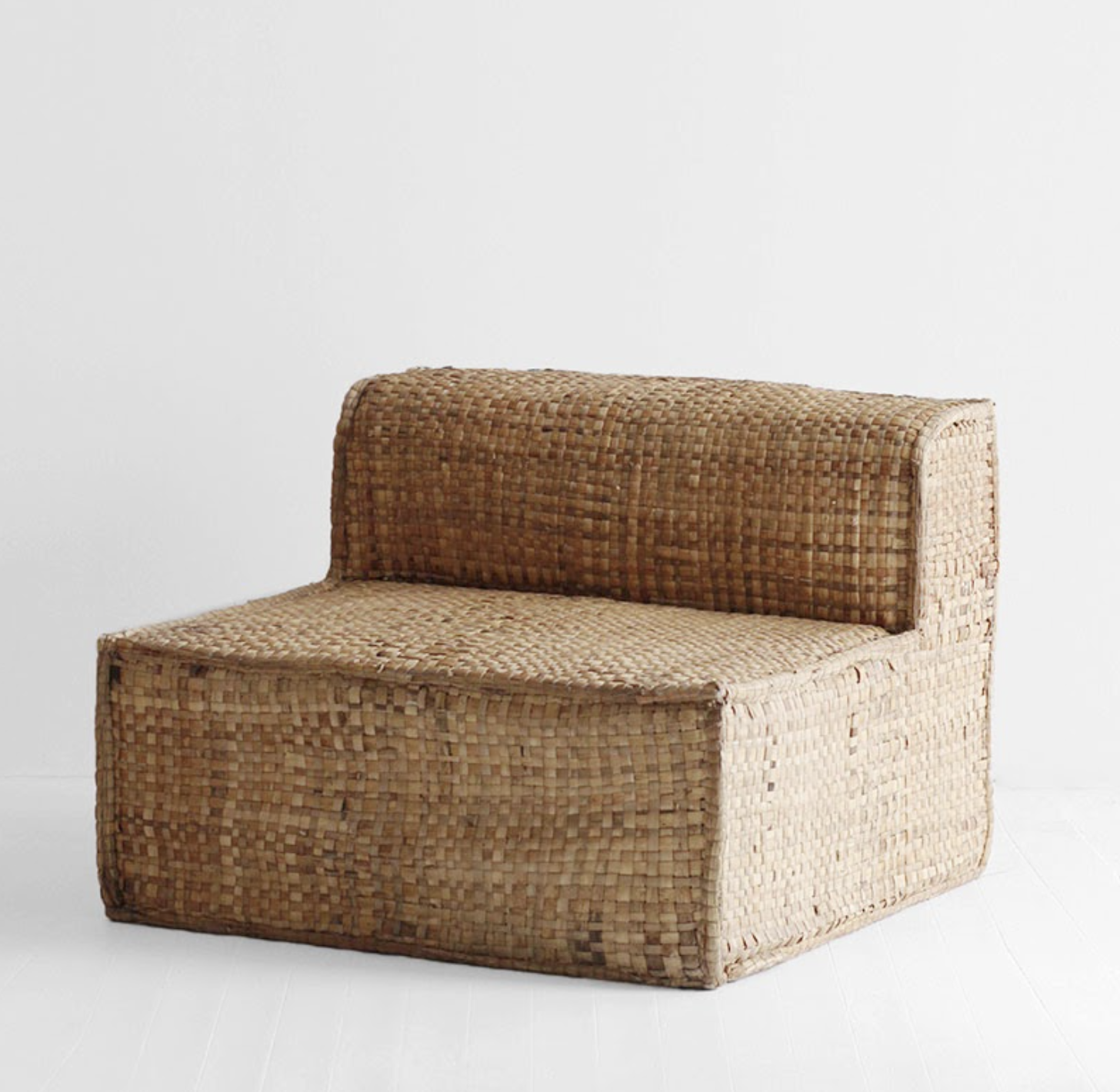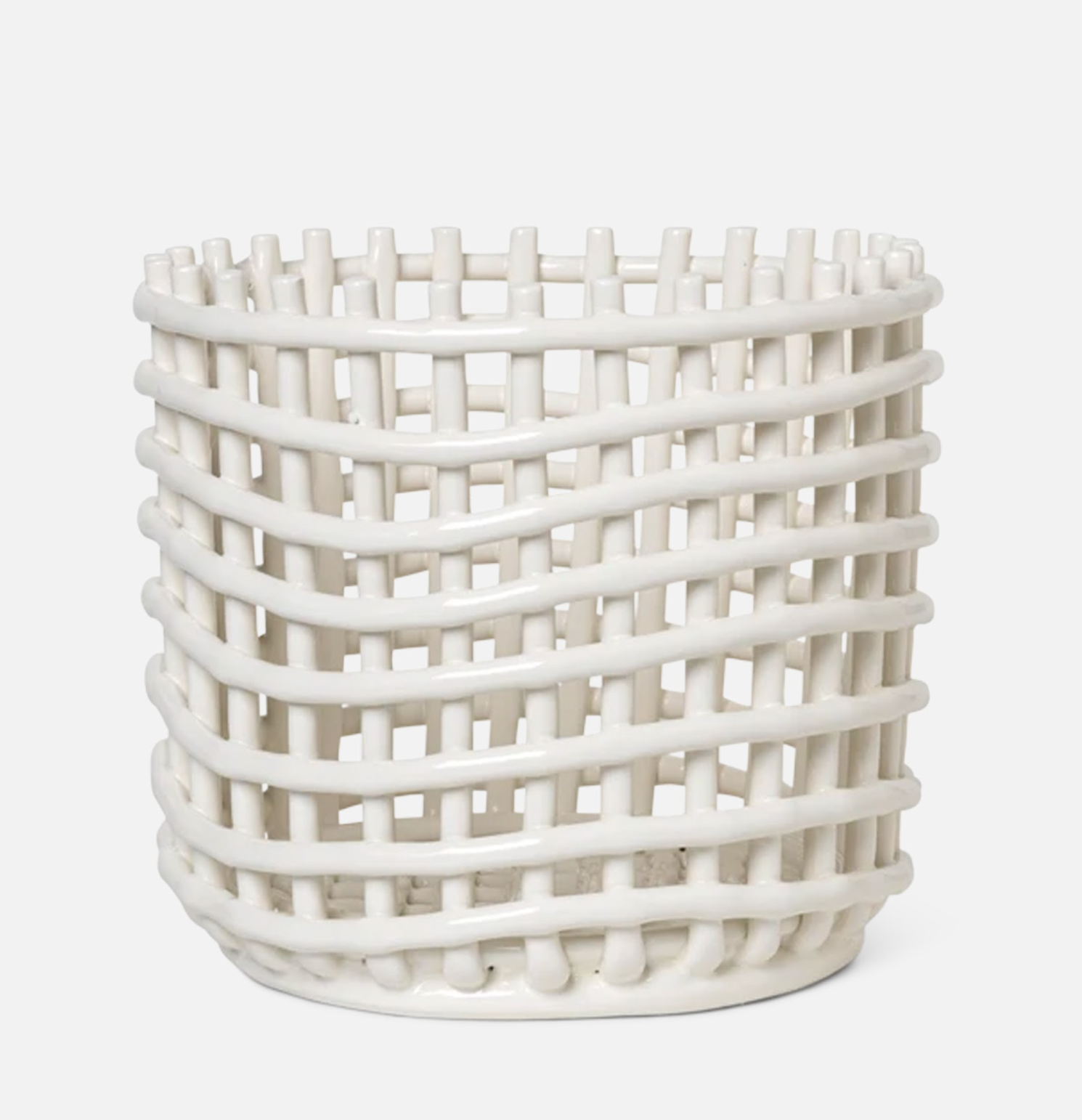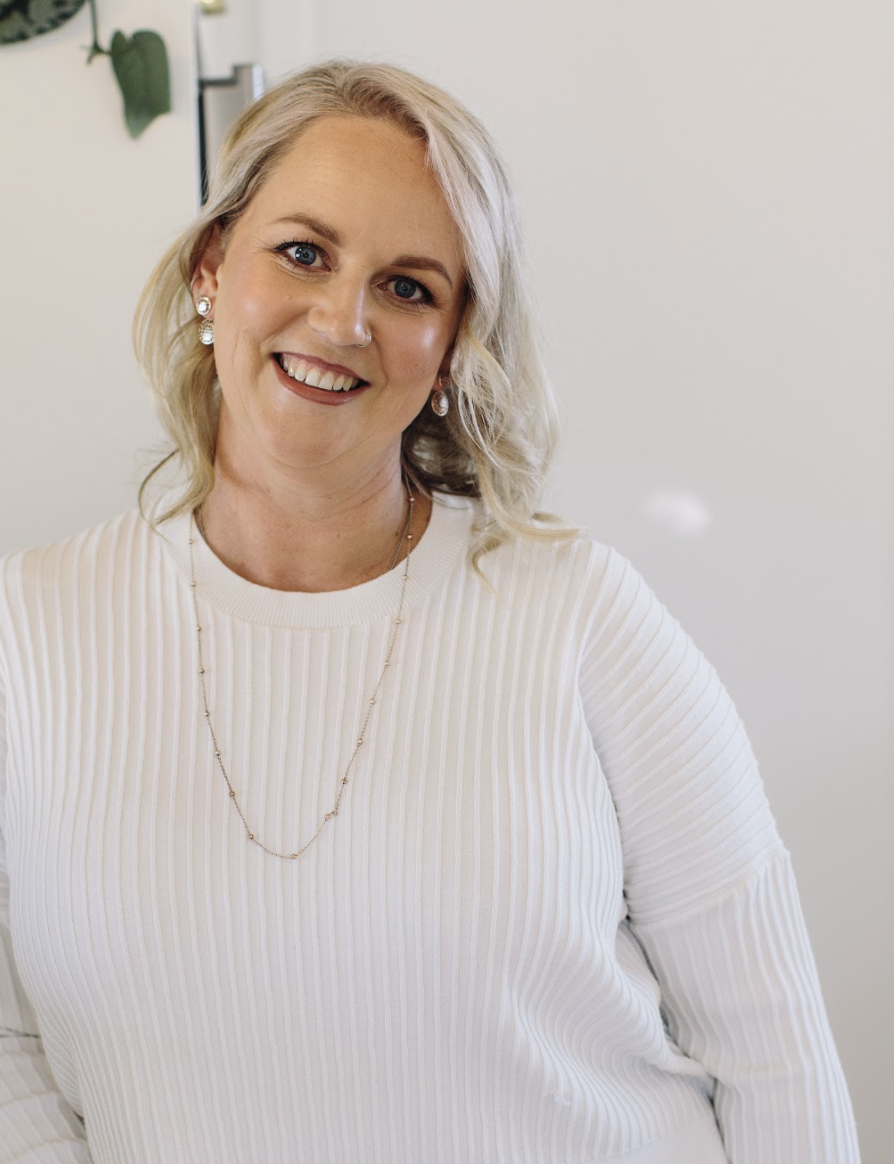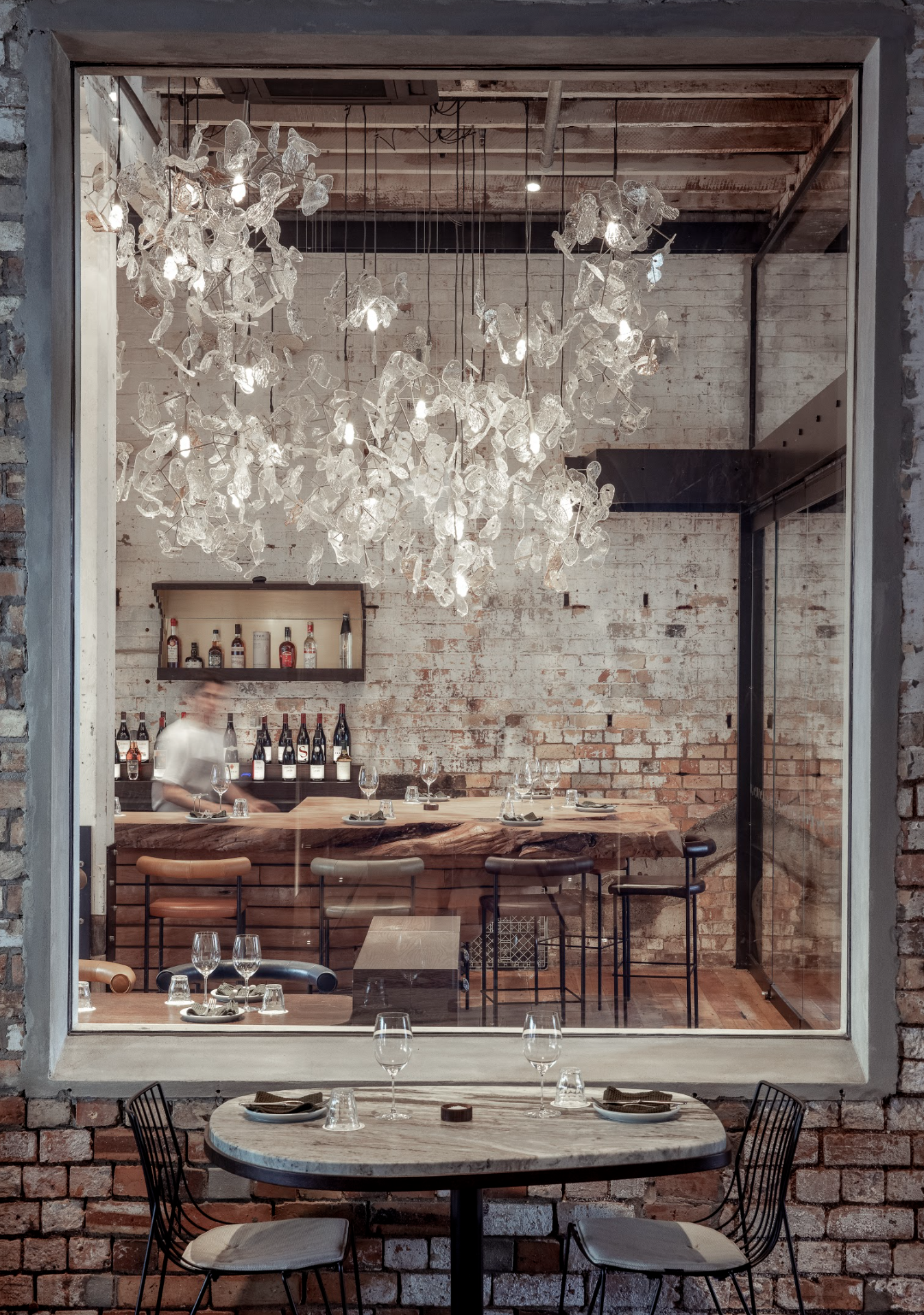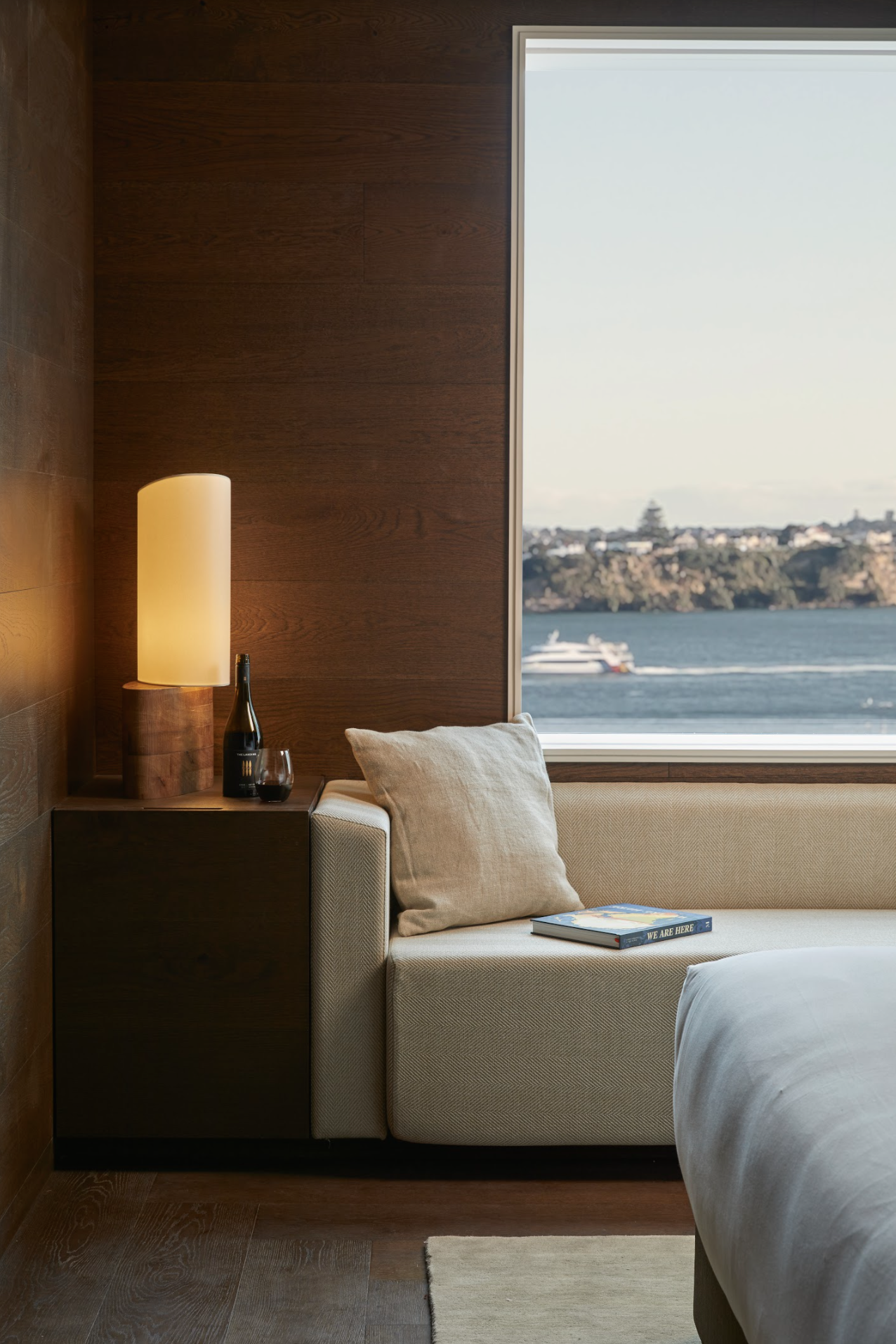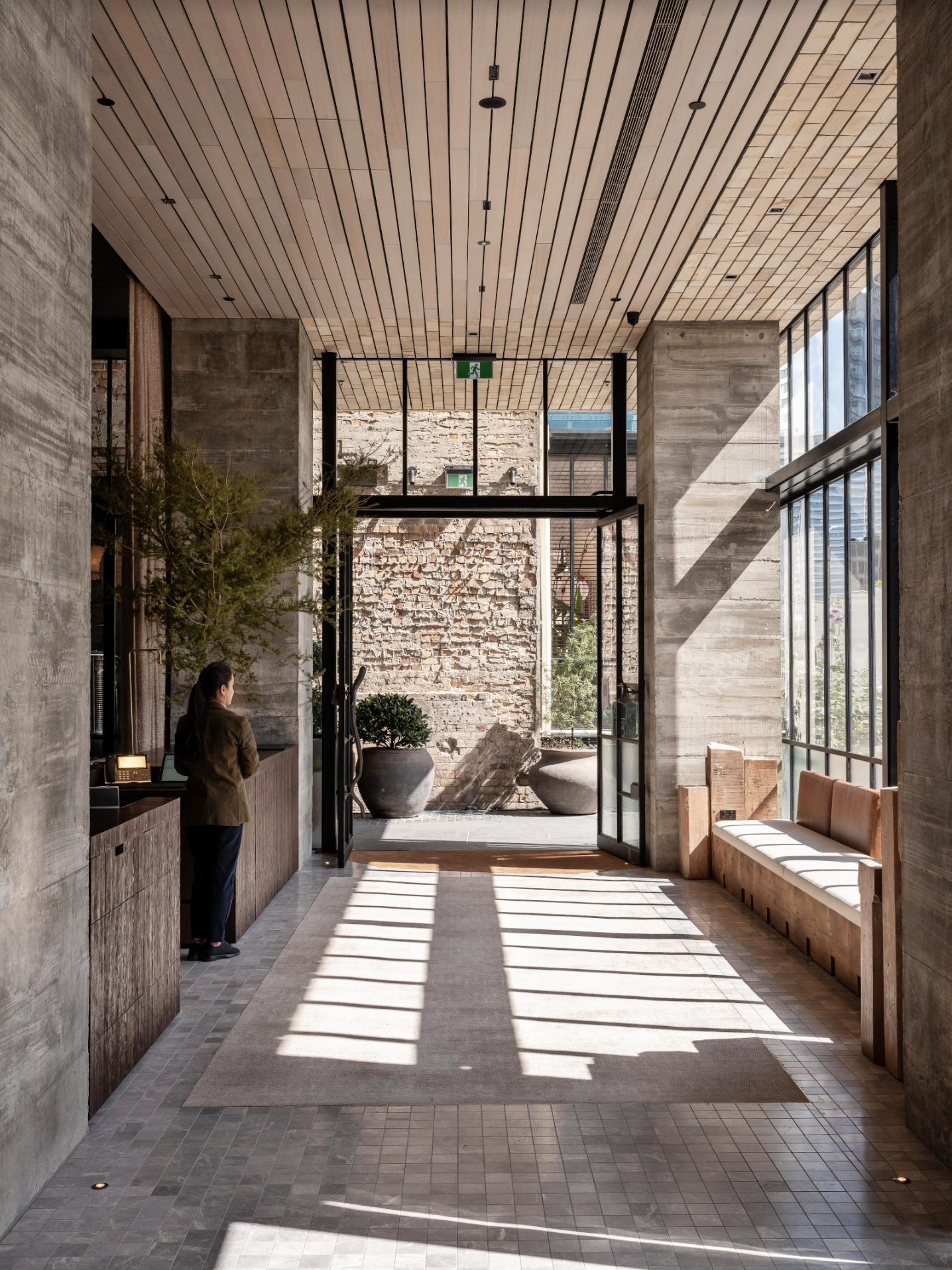Katchafire: burning hotter than ever
If you like reggae then you’ll love Katchafire, if you weren’t sure if you like reggae, you’ll still love Katchafire.
WORDS Nicky Adams PHOTOS Joel McDowell
If you like reggae then you’ll love Katchafire, if you weren’t sure if you like reggae, you’ll still love Katchafire. These guys are the musical Moro bar, the experience is universally uplifting and leaves you feeling better than you thought you could feel. With their chilled-out vibes and harmonies that ease the soul, one minute you can feel so relaxed that you can’t even form the word stress, the next an upbeat tempo will hit, and you just want to dance till you drop. And when you look around you know that it’s not just you, but the world is dancing with you.
Katchafire has been around for over 20 years and is one of New Zealand’s hardest working and most well-known reggae bands, with a cool factor that spans audiences and age groups. A multi-award winning, platinum record-selling formation, they have made it big internationally, rubbing shoulders and performing with musical icons, yet when I sat down to speak to founding member Jordan Bell, there wasn’t a bit of trumpet blowing or whiff of name dropping. Reggae is a musical genre that has exploded worldwide, and Katchafire has been at the center of the big bang. Each strain is taking on its own identity and these guys are 100% South Pacific roots reggae. Their unique formula blends different instruments and sounds until classical reggae morphs into mixed genre music that can be considered ‘an artform’, and amid it all the positive vibes just keep on coming.
Brothers in arms
The band is made up of founding brothers Jordan and Logan, plus ‘lifers’ Tere Ngarua, brother-in-law Leon Davey and Roy Kaiki. Jordan explained that at the end of last year they finished off their latest single, Circle Back. “Definitely a love song, it’s about circling back on anything you love – it was a real summer banger.” The timing of its release was perfect “It came out just before the summer tours so it was great to get it out there live; the support for it has been amazing, as we speak it’s on a million streams and climbing.” Circle Back was worked on during lockdown, it’s a silver lining to a period where, in normal circumstances, the band would have been touring overseas. The other upside of lockdown was the extra time at home. The importance and influence of family is at the core of this band, and pulses through the lyrics of their tunes, from the purity of Addicted to the adoration of family and Aotearoa in Fyah in the Trenches. It’s easy to see how these tunes have been written on the road, when home has felt far away.
Katchafire creates what Jordan calls “good message music. It’s about stripping back, about not worrying – about family and having a bit of consciousness.” You can’t help but wonder about the dynamic of such a tight-knit group, but Jordan laughingly verifies that harmony on the tour bus is kept by rules and a fining system. The bond is clearly strong, and creatively the energy flows. Songwriting is helped by their synergy - they’re even on the same page with musical influences, “between us we listen to everything from Tupac to Lenny Kravitz to anything in between; R&B, Metallica, it’s all on the same playlist.”
From league to the bright lights
Jordan and Logan didn’t start life as muso’s – in fact up until teenage years life was all about Rugby League. Even when music came into their lives, it wasn’t an immediate switch. As pre-teens he and Logan stumbled across a stash of their dads prized musical instruments hidden in his closet. Their father, a talented musician, had hung up his guitar, and embraced a life filled with church and family. He encouraged the boys to start with the basics, and a passion ensued. Around 1997/9 when the boys were in their late teens a choice had to be made – Rugby was subbed out and they ran with music. In what Jordan considers a defining moment for their future, their father, Grenville, rented a loft in central Hamilton where the boys could jam to all hours with friends. They began to score gigs and before long they were playing from Raglan to South Auckland. Initially a cover band, from the outset their love was of old school Reggae - in fact Bob Marley is still to this day one of Jordan’s key musical influences (Katchafire is derived from a Marley song). Growing up, Jordan says, reggae was “a forbidden genre – linked with dope smoking, it was a different religion from what we were doing. But at the same time, it was all around us.”
After winning a competition run by NZ record label Dawn Raid the group had the confidence to write their own songs. Hits Giddy Up and Bounce were the result, and led in 2003 to the release of Revival, the first of (to date) five albums. Transitioning to original music was nerve wracking, but the audience loved it, and the fan base followed them and grew. The success of the band has spread well beyond New Zealand, with the band garnering a huge international following – playing Glastonbury in the UK was “next level”. Of course, home is home, and the One Love festival here in the Bay is one of the favourites “it allows us to catch up with the reggae community and see how well the tree has flourished and grown. Not just here but through the Pacific. It’s good to get together and see how strong the support is and how the next generation has come through, for the musicians and audience.”
Overseas success has not blunted Katchafire’s love for this home audience: “New Zealand has a diverse palette when it comes to music, so we get a mixing of styles... it’s really interesting and works really well. It rings in our music, which as Pacific Reggae has more harmonies and messaging.” Talent, positivity, uplifting music and cool beats – this is why muso’s of all ages go mad for Katchafire.
The Inaugural Bluff Oyster Bash at Clarence Hotel
An absolute must-do event to get in your calendars for next year; the Bluff Oyster Bash was a roaring success filled with fun and glamour, and all the freshly-shucked oysters you could eat!
What: Bluff Oyster Bash
Where: Clarence Bistro, Tauranga
PHOTOS Pablo Creative
At this inaugural event, guests enjoyed free flow live shucked Bluff Oysters and a selection of seafood finger food along with champagne and entertainment throughout the night. UNO Publisher Mat Tomlinson attended; calling the event an absolute must-do next year.
“It ran through the afternoon well into the evening; everyone was dressed up and there was a real sense of fun and glamour - there must have been over 100 dozen oysters the team were shucking like maniacs, it was amazing!”
Looking for a bit of variety in your exercise regime? Clubfit could be it!
Its availability at not one but two sites – one in Tauranga and one at the Mount – isn’t the only thing that makes this gym ultra-accessible.
Its availability at not one but two sites – one in Tauranga and one at the Mount – isn’t the only thing that makes this gym ultra-accessible.
UNO: What’s Clubfit good at?
Personal trainer Mark Berry: We build great relationships and support our customers through their exercise journey while making it fun. For us, it’s about the long game. Beyond just getting a new member started, we’re here to keep them motivated so they make steady progress towards their goals and enjoy the journey.
What do you specialise in? Functional training, strength and conditioning, rehab, CrossFit and Olympic lifting.
Who are you best suited to? Anyone looking for a modern gym that provides value for money, great service and support will find it at Clubfit. We also offer great variety, with more than 60 group fitness classes per week. Our gym is also unique in that it offers gym and swim memberships; you can choose a membership that also provides access to five pool facilities, including spa, sauna and aqua-aerobics classes – and even the iconic Mount Hot Pools. Clubfit caters for all levels and the variety of workout options means there’s truly something for everyone. Join the club for a fun, supportive exercise programme that gets results!
What kinds of classes do you offer? Les Mills Classes are some of the world’s most popular – we’ve got Body Combat, RPM and Body Step to get the blood pumping, CX Worx and Body Pump for strength, Grit and Sprint for high-intensity training, and BodyBalance and Tone for muscle tone and flexibility.
Our Clubfit Home Grown Programmes (HGP) are our own range of classes designed to complement the Les Mills offering. HGP Hiit ’n’ Run and HGP Blitz are intense circuit-style classes that are suitable for intermediate to advanced fitness levels, while HGP Mobilise and HGP Full Function are perfect for members who are returning to exercise and need to take it slow. There’s also Yoga, Pilates and Zumba classes available, and with our gym and swim memberships, you can also attend AquaFit classes at Baywave.
What are you proud of at your gym? Without a doubt, it’s our team, from our group fitness instructors through to our amazing reception staff. The level of support and commitment they provide to our customers is outstanding and keeps people coming back for more. Around 30 percent of our new customers each month come to us through a referral from a current member.
We’re in the business of helping people live better lives and seeing people transform in terms of confidence, mental wellbeing and overall health is what we’re here for. Although we hear lots of success stories about physical transformations and fitness gains, now more than ever we’re hearing about the mental benefits that exercising at Clubfit is providing. People often comment about the fear and anxiety they’ve had to overcome just to get started on their fitness journey, and these same people also often tell us just how significant being involved in a good exercise community and developing healthy habits have been in transforming many other areas of their lives. That’s the stuff that makes us feel good.
What are your top tips for getting beach-ready? Consistency is king or queen, so show up often, do the work and enjoy the process. Also, remember that your body isn’t your enemy, so be good to it, build up slowly and watch the results start to appear.
Meet the trainers:
Mark Berry
Mark’s a Clubfit personal trainer and group fitness instructor who has worked in the industry for a decade – a job he loves. He brings an all-round training philosophy to the gym floor and his down-to-earth approach is based around the following points: aim to move your body the way it was designed to move; consistency is key – and not just in the fitness world; enjoy what you do – it’ll be a boring life if you don’t; success comes in many forms – the number on the scales is just that and nothing else; and strive for balance in all areas of training and life.
Monique VanDijk
Monique works at Clubfit as a fitness instructor – a role that’s all about coaching and support. She started her journey as a group fitness instructor through her interest in sports performance and holds a degree in Sport Science. Today, her key passions include strength training, CrossFit, Olympic lifting and gymnastics. She says she really enjoys her role and connecting with a wide variety of people through exercise, and believes quality movement in exercise is paramount to quality movement in everyday life. Her goal is to help people find a method of training that’s effective and enjoyable for them, so they can move for as long as they’re able.
1 KITEROA STREET, GREERTON, TAURANGA, & CORNER GIRVEN AND GLOUCESTER ROADS, MT MAUNGANUI
07 577 8555
Don’t get mad, get even: say goodbye to patchy skin
Skin looking a bit patchy post-summer? Never mind – Tauranga’s Skin Centre has an exclusive product formulated in-house to fix that, and practice nurse Georgie Herbison is here to tell us about it.
PHOTO Alexander Krivitskiy
Skin looking a bit patchy post-summer? Never mind – Tauranga’s Skin Centre has an exclusive product formulated in-house to fix that, and practice nurse Georgie Herbison is here to tell us about it.
UNO: Georgie, what causes pigmentation and how can we prevent it?
GEORGIE HERBISON: Melanin in the skin acts as a defence mechanism, which is why people commonly get a tan where their skin is exposed to the sun. Hyperpigmentation occurs when the skin over-produces melanin, resulting in dark patches and an uneven look. Hormonal changes can cause hyperpigmentation, but the main cause is the sun, so it’s important to always wear sunscreen or, better still, cover up or stay indoors during the hottest time of day.
UNO: Why has Skin Centre created this specialised pigmentation product, Complex K?
GEORGIE: So many patients come into the clinic distressed about their pigmentation, having tried different treatments and creams with no visible results. It’s great to be able to offer them our prescription-only product to use at home, knowing it’ll really work for them.
UNO: What makes this cream so effective?
GEORGIE: Complex K is a sun damage and skin-lightening treatment. It contains components proven in multiple independent clinical trials to reverse the effects of excessive sun, including hydroquinone 4%, a pigment inhibitor that works by reducing the production of pigmentation and increasing the production of melanosomes in melanocytes by inhibiting the activity of the enzyme tyrosinase, which is needed to make melanin. It also includes a mild topical hydrocortisone to prevent irritation, mixed with a vitamin A derivative (retinoid) that can reduce the ageing effects of the sun on our skin and stimulate collagen synthesis, while reversing photo damage and increasing the absorption and efficacy of the hydroquinone.
UNO: How should we use Complex K?
GEORGIE: This is a prescription treatment that your skin needs to adjust to slowly, so our clients use it alongside their own skincare products a few nights a week to start with, and gently increase from there.
UNO: What kinds of pigmentation is it effective on and what kinds of results do you see?
GEORGIE: We’ve had some very good results treating clients with general pigmentation and freckling, the hormonal pigmentation melasma and post-inflammatory hyperpigmentation. They notice a definite lightening of the affected skin after using the cream for 12 weeks, and the overall skin texture is smoother.
UNO: Is Complex K complemented by treatments you use in the clinic?
GEORGIE: It works well in conjunction with our Fraxel laser. The non-invasive Fraxel can reverse visible signs of ageing and damage, reducing pigmentation and evening out skin tone, and Complex K helps to maintain these results.
UNO: Who would you recommend this product to?
GEORGIE: We’d recommend it to clients with darker skin, who have a higher chance of hyperpigmentation, or anyone who’s tried other treatments with poor results. It’s especially effective for people with melasma and is a great option for anyone who doesn’t want to use laser treatments and would prefer to use a cream at home.
The powerhouse partnership revolutionising real estate in Rotorua
For nearly five years, two Rotorua real estate salespeople have been hitting top-selling prices in street after street. In fact, Jodi Ratahi and Kerif Smerdon of EVES Realty have been so successful, they achieved recognition in the top five percent of EVES estate salespeople for 2019/20.
WORDS Katy Glenie PHOTOS Salina Galvan
For nearly five years, two Rotorua real estate salespeople have been hitting top-selling prices in street after street. In fact, Jodi Ratahi and Kerif Smerdon of EVES Realty have been so successful, they achieved recognition in the top five percent of EVES estate salespeople for 2019/20.
The pair became a partnership after working together on a joint listing and enjoying each other’s style and ethos. “We both come from very supportive families that have enabled us to be focused and driven,” says Jodi. “The addition to the team was bringing on board our lovely PA Heather MaGuire in the first year of our partnership. We so appreciate her loyalty, encouragement and dedication – we love her dearly.”
Both Jodi and Kerif started working at a young age, with people from all walks of life. They learnt the importance of customer service and attention to detail, which they’ve found ultimately generates repeat business. Keeping true to these fundamental values is what drives them today.
The powerful duo have been selling homes together for almost five years, which is unusual for real-estate partnerships. “We each bring different strengths to the team,” says Kerif. “Working in this way makes a huge difference. We’re also one of the only Māori business partnerships in the industry in our city, and we’re very proud of that. Nāu te rourou, nāku te rourou, ka ora ai te iwi – everybody has something to offer, and by working together we can all flourish.”
Rotorua historically undervalued
Jodi and Kerif believe the Rotorua market has been historically undervalued, and this has fuelled their focus on achieving high sale prices for their clients. “Our pricing evaluations are incredibly accurate,” says Jodi. “Based on previous transactions, we can demonstrate to our vendors that around 95 percent of our properties sell within or well above our appraisal range.”
Believing that their success comes from their trust in each other and their genuine concern for their clients, Jodi says, “Our best possible outcome is when a buyer walks in paying what they want, and a vendor walks out getting what they want. We treat our clients how we’d want to be treated.”
Smooth process
Their experience with property transactions gives these women the expertise to guide clients through transactions, helping smooth out the sale process despite changing bank and legislative requirements. They’re also members of the Federation of Māori Authorities, and support a number of local schools and kura kaupapa in the area because as Kerif says, “Ehara taku toai te toa takitahi. Engari, he toa takitini. Success is not the work of an individual, but the work of many.”
After a careful selection process to find the best salespeople to sell their property, Maxine and Roger Houkamau are two vendors who decided that Jodi and Kerif stood out from the rest. “Jodi, Kerif and their support team are experienced, professional and personable – we loved their friendly, honest and consultative approach,” says Maxine. “They took the time to truly understand our needs, carefully advised us on property presentation ideas to maximise the sale and provided excellent insights about the market, including upcoming developments. They then sold our property above asking price in just a few weeks after listing.”
Rapid growth in market
Real estate sales in Rotorua have been strong throughout 2020. The market has experienced rapid growth, with median prices rising 9 percent in June 2020 compared with a year earlier* and by over 40 percent in the last three years**. “Things have really stepped up a notch since the national lockdown,” says Kerif. “We were already seeing more activity in the market at the start of the year – now with the current financial climate, activity has increased, wand buyers on all spectrums are contacting us for their real estate needs.”
Jodi and Kerif are strong advocates for Rotorua. “Our city is beautiful, with lots of activities to attract people, such as world-class trout fishing, superb mountain biking and walking tracks, our incredible redwood forest and thermal wonderland, and there are lots of free events for families,” says Jodi. “It’s a place that really looks after people, and we love it!”
*Infometrics Rotorua District Quarterly Economic Monitor June 2020
**One Roof Property Report Dec 2019
A change in the air: how Passive Homes could be the (cosy) future of the way we live
We spoke to architect Brooke Cholmondeley-Smith about his experience with Passive Homes; having built the second ever certified PassivHaus in New Zealand, and living in one himself with his young family.
Whether you live in a new build or an old house, if you live in New Zealand, you’ll probably be familiar with the feeling of chilly toes, the obsolescence of a coat rack (because you never take your coat off), and maybe even whistling door frames or puddles on your windowsills.
As beautiful as our homes often are, the reality of New Zealand’s historical building standards means a nation of houses that are often lacking in performance; a deficit we often feel most keenly in the winter months.
While newer homes and the technologies that come along with them are lifting the bar for warmer, drier abodes, Passive Homes; a concept borrowed from Europe, offer a higher standard of comfort, sustainability and performance that most of us, with our electric blankets and indoor coats, could only dream about.
We spoke to architect Brooke Cholmondeley-Smith of TAWA Architecture about his experience with Passive Homes; having built the second ever certified PassivHaus in New Zealand, and living in one himself with his young family.
How did you become familiar with the concept of Passive Homes?
When I was working in London for an architecture firm I was sent off to Berlin to work for a few months - I got to know some architects there, who were all designing and building to a passive house code. I got an understanding of it, but when I moved back to New Zealand I lost touch with it, it just wasn’t a thing here.
What is a Passive Home?
High-performance homes, such as Passivhaus projects, have specific requirements to meet in order to be called a PassivHaus or Passive Home. These requirements are non-negotiable, and require meticulous planning from the start of the project to make sure all elements work together in the end result. As a structure, it’s a well-insulated and orientated building which makes considerations to regulate the internal environment without little to no need for additional heating sources. It reduces on-going living costs, makes the home comfortable, healthy, quiet, and most amazingly, the perfect temperature all year-round.
How did you come to start building Passive Homes here in New Zealand?
In 2015 I found a course on it in Auckland. It was a really rigorous course, with an international exam at the end. I’d learnt about passive solar when studying to become an architect but we didn’t really look into how the heat leaves the home, so it was that next level of understanding the performance of a home.
Our first Passivhaus project was built in New Zealand in 2011/12. This project was a pioneer for the Waikato region, and the clients were, and still are, passionate ambassadors for this type of housing. The project was well-planned, managed and built but we needed verification, and the best way to do this was to install temperature sensors throughout the home and monitor the performance over several seasons and years.
We were very lucky that the owners of the home played an active part in providing us with extensive data to use and give us a clearer understanding of how Passivhaus worked within the New Zealand climate.
Does building a passive home restrict the design?
Not at all. We design it to a high-performance standard; the walls are built differently, the doors are different from what you’d normally have. But you can design all other aspects as you’d want them. The passive house knowledge is locked into the home at the start and then we can carry on and build a beautiful architectural home from there. We can build them out of any material - we have lots of flexibility around it.
Do you design passive homes as standard?
We build passive home standards into every one of our homes, but there are two outcomes; you can go through the process of becoming certified, get a plaque on your wall and get a mention on the Passive Home website, or you can just enjoy all the benefits without actually having a certified passive home.
How do you test if the house is passive?
One of the ways is to carry out a blower door test. This is an internationally recognised testing system that provides tangible results for the project team to use during the build.
It provides a test result that is universal throughout the world and allows the owners to benchmark their project.
What does it feel like to live in a passive home?
A passive home needs little or no heating or cooling - we aim for the ambient temperature to sit at 20 degrees celsius all year round. We sometimes add a small heater if that particular family wants it to be a little warmer still. We have a passive home ourselves, and it’s unbelievable - we all stay well, we have summer sheets on the bed all year, we’re always in t-shirts and shorts. We couldn’t go back to a normal house now.
It’s much quieter, and you don’t actually know what the day feels like outside. We do have to open the door to see what the day’s like - the kids are in t-shirts and shorts leaving the house for school and have to go back in to get more clothes on! We don’t even wear socks inside - those days are gone. Some people say it’s extreme for New Zealand, but we don’t think so. Living this way is so normal for us now, we forget that it’s not what everyone else is experiencing.
How close are passive homes to becoming the mainstream?
It’s getting there slowly - a lot of our clients are in two groups; people that have immigrated to New Zealand and have built a new home, only to find it incredibly cold to live in! The other biggest group would be older people building their forever home and they want something high-performance that they’re going to be really comfortable in.
About two-thirds of people want to go to the extra expense of their home being certified but most just want us to build all the benefits into the design.
Five top interior trends for your autumnal refresh
From eco chic to indoor plants, the world of interiors is currently one that reflects the moods of the world outside. Home is evermore a sanctuary and a safe haven, and comfort is key.
WORDS Nicky Adams PHOTOS Jahl Marshall
From eco-chic to indoor plants, the world of interiors is currently one that reflects the moods of the world outside.
Home is evermore a sanctuary and a safe haven, and comfort is key. For obvious reasons the last 12 months has seen a surge in home renovations, interior decorating and general home and garden improvements. Whilst it’s important to reflect your own personality in the choices that you make, we’re inevitably led – all be it sometimes without even realising – by what’s trending in home interiors, so with that in mind it’s worth looking at the direction 2021 is taking.
Pleasure zone
There is no real fashion barometer for what homely looks like, however for this year the move is towards indulging in cosy comfort. Think sink-into-sofas, and rich, tactile fabrics. Luxurious candles, unusual pieces from craftspeople rather than mass-produced items – there’s a real shift to furnishing your home with items that will stand the test of time as opposed to something that will only last until the next fashion cycle. Imagine soft wool rugs underfoot, chairs that you want to sit in and sofas that you can’t get out of. More than ever there’s an increased love of carefully selected pieces, and an appreciation of artists and artisans.
Staying Revived
‘Granny chic’ is a trend that is working its way into our homes in all kinds of ways. Humming away in the background has been a growing nostalgia that has led to a love of retro-trends, so much so that the term ‘cottage core’ has been termed. In terms of our homes, there has been a steady revival of accessories that bring to mind the comfort of bygone eras. Stunning antique pieces, home crafts such as crochet blankets, fine china, floral cushions or coverings, and to be honest vintage touches and whimsy in general is hot to trot.
Nice and Natural
Natural and recycled fabrics look as though they are edging ahead in the popularity stakes. Sustainable and natural textiles don’t just fit with the heightened awareness of environmental impact, they are also beautiful both to the touch and to the eye. Organic cotton recycled polyester and low impact linen are all favourites that are huge for the year ahead in both home furnishings and fashion.
Club Tropicana
Global inspiration is a reoccurring theme to the looks for 2021 – and one way in which this is playing out in home décor is through a relaxed tropical vibe. It’s not hard to see why this has struck a chord, because it means that while we can’t get to the tropics, we still have the power to bring representational elements into our home. Bold and beautiful, spaces that reflect travel can be seen incorporating florals, lush greenery and seascapes, all bringing a contemporary edge to a more classical feel. The ‘distant shores’ trends incorporate tropical brights, subtle monotones and soft yellow into one huge aspirational wave of joie de vivre.
Potluck
Not since the 1970s have indoor house plants have been more on point. Plants provide a wonderful double dip when it comes to an interior feature – aside from the plant itself, there is also the all-important pot that it sits in. Perhaps the popularity is in part due to the quality of faux plants. No longer the lack lustre imitations, it’s now pretty impossible to tell the difference between a plant that needs watering and one that doesn’t. Add to this the extensive selection with everything from hanging creepers to elegant palms, and you have a statement piece that is almost unprecedented in its versatility within the home.
Award-winning Israel Randell talks art, new challenges and the bigger picture
“If people ask me [to explain my work], I want to have a conversation. That’s really all art is, a conversation. Sometimes it’s real honest, like, ‘What the hell is that?’ or ‘Why do I hate this work so much?’” That’s the kind of things that artwork brings.”
Through multi-media, moving image and sound, award-winning Tauranga artist Israel Randell articulates the spiritual and unseen. Now, in her new role as curator at Whakatāne Museum & Arts, she wants to help amplify the voices of local talent.
WORDS Maria Hoyle PHOTOS Quinn O’Connell
The question ‘what is art?’ is a tricky one to answer. One person’s masterpiece may be another’s monstrosity, making it hard to reach a consensus. Yet for multi-disciplinary artist Israel Randell, it’s not complicated at all. Art, she says, is a conversation, and as a newly appointed exhibitions curator at Whakatāne Museum & Arts, it’s one she is very much looking forward to having with the local community.
Originally from Hamilton (Tainui, Ngāti Kahungunu) and of Cook Islands descent, the mum-of-one has her work cut out for her when she arrives at her post (the week after talking to UNO). She and the team will be busy preparing for the February exhibition of the winners of the Molly Morpeth Canaday Award: Painting & Drawing, presented by Arts Whakatāne and held at Te Kōputu a te Whanga a Toi – Whakatāne Library & Exhibition Centre. Although that will be Israel’s immediate focus, she talks excitedly about the bigger picture.
“I’m really interested in being embedded in the community, getting to know the artists, and finding out how I can help them to realise their ambitions and be that person who bridges the community and the gallery,” says the Toi Ohomai Bachelor of Creative Industries graduate. “I’m also excited to be learning from my colleagues. Going into any new role, it’s good to be listening.”
Listening will be crucial for her dialogue with local artists too. Some may not see the gallery space as relevant to them – for example, those who may be more focused on selling their work, or those from other disciplines such as dance, theatre or acting.
Is it fair to say that galleries are often seen as no-go zones for certain sections of the community? “Yes,” she says decisively. “A gallery space is definitely always viewed as a white space by people outside looking in.”
So breaking down the boundaries between practices is one way not only to showcase a wider variety of work, but also to change the perception of what and who a gallery is for, of reaching those who aren’t, for whatever reason, engaging with it. “It’s constructive to help different types of creatives,” says Israel. “I think it does start with having a structure that caters to every kind of practice, not just the 2D practice or sculptural practice.”
Israel’s no stranger to having a dialogue across disciplines and amplifying the voices of indigenous artists. She arrives in her new role fresh from a Mana Moana research residency with arts agency Circuit, where she looked at the experimental practices of Māori and Pasifika visual artists, writers, choreographers and musicians to produce a collection of interviews and online content.
Israel’s own work experiments with moving image, multi-media and sound – quite a departure from the large-scale paintings she did as an art student in Auckland. “I took a break, moved to Tauranga and started off again at Toi Ohomai. But I didn’t want my work to be flat on the wall anymore – I wanted to occupy the space between the walls. I wanted to paint with light in space, so I was looking for materials that would let me do that. Lots of painters say all painting is about light and dark. I was interested in using light in a sculptural way to activate space.”
She originally considered working in neon, but it was costly. A classmate suggested wire would be cheaper, so she sourced some on Trade Me and started experimenting with it in the school studio.
Playing with wire and light sounds like a lot of fun, but it was no walk in the park. Israel’s daughter Lola, now two and a half, was just eight months old when Israel started the course. “I was still breastfeeding so I was worried. But I needed something else, a direction or passion, that was separate from my identity as a mother. I needed that for my own mental health and that in turn made me a better mother.”
It also, she believes, made her a better artist. “You go in there with no bullshit, no excuses – you get things done. You don’t have time to fluff around, then go home and work till 2am, because at home it’s all about your child. So I was way more focused. I think that drive elevated my art practice to something it maybe couldn’t have been when I was a single person.”
“I didn’t want my work to be flat on the wall anymore – I wanted to occupy the space between the walls.”
That ‘elevated something’ is a compelling body of work that speaks clearly to ‘maatauranga’ – what she describes as “the whole way of being Māori, the many layers that there are.
“I look a lot to cosmological narratives to explore things that aren’t material,” she says. “I’m interested in actualising the intangible. It’s hard… I don’t know if I’m successful half the time. This year’s body of work has focused on water and the elemental phases it goes through, and the spiritual things they hold for Māori and Pasifika people. I’m interested in exploring things that I can’t see that have been told by generations of elders, and trying to connect with it and make sense of it in my own way.”
Israel might not know if she’s successful half the time, but her work certainly impressed the judges of the 2020 Miles Art Award, presented In March by the Tauranga Art Gallery Toi Tauranga. To her surprise, she landed the Supreme Award for Wahi Ngaro, a compelling installation in which triangles of electroluminescent wire reference whakapapa and an in-between space with infinite potential. It’s a beautiful piece, one you can appreciate without knowing what it represents. Does it bother her when she’s asked to explain her work?
“If people do ask me, I want to have a conversation,” she says. “That’s really all art is, a conversation. The artwork is there to trigger that. Sometimes it’s real honest conversations, like, ‘What the hell is that?’ or ‘Why do I hate this work so much?’” That’s the kind of things that artwork brings.”
And then sometimes the work exists, well, just because. “Sometimes we totally make it because we want to make it. It’s important to let people know that and uncomplicate the way we speak.”
Featured in UNO Issue #51 - subscribe to get yours
Soak it in: breathtaking bathtubs with a view
Taking a long, hot bath can be a truly rejuvenating and relaxing ritual. Pairing that soothing soak with panoramic vistas across the South African savannah, a stunning sunset over the Indian Ocean, or nestled among the hills in Queenstown and you have some truly epic self-care.
As the days get cooler, the bathtub starts calling - that pure bliss of being enveloped in warmth. And as we look forward to the possibility of travel in the hopefully not-to-distant future, day dreams of spectacularly situated tubs creep in.
Taking a long, hot bath can be a truly rejuvenating and relaxing ritual. Pairing that soothing soak with panoramic vistas across the South African savannah, a stunning sunset over the Indian Ocean, or nestled among the hills in Queenstown and you have some truly epic self-care. With Stress Awareness Month in the month of April, Booking.com presents six ultra-luxurious bathtubs with one-of-a-kind epic views to take your bubble bath relaxation and travel daydreaming to the next level. Not all of these destinations have to be a daydream however – there’s a stunning jacuzzi stay right here in New Zealand for Kiwi travellers to luxuriate in this winter!
Lion Sands River Lodge, South Africa
For nature-lovers who like to mix adrenaline with relaxation on holiday, the bathtub at the Lion Sands River Lodge on the Sabi Sands Game Reserve in South Africa is for you. This long and generously deep tub faces the banks of the Sabie River, where guests can safely spot a wealth of wild animals drinking throughout the day. The tub can also serve as a welcome wind-down after an exhilarating guided walk or safari through the reserve. No matter how travellers choose to unwind afterwards, a glass of local South African wine is a must for that added touch of indulgence.
The sleek tub at Hotel Aire de Bardenas in the Navarra region of northern Spain is sure to capture the attention of any architecture and design enthusiast. Its unique outdoor location, which is connected to the guest room, is a welcome way to recharge while immersed in the raw elements of a semi-desert landscape. And as there’s no roof enclosing the tub, an evening bath will give travellers the chance to sit back and stargaze in total peace.
Six Senses Ninh Van Bay, Vietnam
The timber bathtub at the Six Senses Ninh Van Bay, sits on a dramatic bay on a peninsula of the same name overlooking the turquoise East Vietnam Sea. Guests can spend hours gazing at the mystic beauty of the white-sand beach and the towering mountains in the distance, or simply sit back and listen to the gentle waves crash against the shore in the background. To top off their serene soak, guests can spoil themselves with a six-course dinner and paired wines – a perfect way to end the day.
The spectacularly large tub at the Atlantis The Palm in Dubai will have every guest feeling like they are swimming underwater with nearly floor-to-ceiling views of United Arab Emirates’ largest aquarium, which is home to 65,000 marine animals. During their stay, travellers can sit back, pop a bottle of champagne (thanks to the hotel’s 24-hour dedicated butler service) and be mesmerised by the calming movement of the fish.
Located on a private island that only a 20-minute speedboat ride can reach, the hot tub at Huvafen Fushi in the Maldives is all about privacy and tranquility – ideal for a royally romantic retreat. The circular hot tub is positioned in the centre of the bungalow providing a panorama of the indigo Indian Ocean – so that guests can spend all their time unwinding in serenity.
Surrounded by high country sheep stations, this luxurious stay Mahu Whenua is only a 20-minute drive from Central Wanaka, in our very own backyard. The private rooms which feature views of the mountains and Lake Wanaka also boast roomy hot tubs, where travellers can soak up their surroundings and enter a state of pure bliss.
With a mission to make it easier for everyone to experience the world, Booking.com is sharing Getaway Deals for travellers to use when booking getaways, as it becomes safe to do so. Discounts start at 20 percent and are valid for stays until 30 September 2021.
Turning accomplished surfers into frothing groms
“After being an accomplished surfer, going back to being a total learner can be quite a humbling experience, but it’s also an opportunity to get that buzz of your first successful ride, which a lot of us who’ve been surfing for a lifetime have forgotten.”
Catch the wave with a Mount man who’s thrilled to have found his passion and to be helping others find it too.
WORDS + PHOTOS Katie Cox
In July 2016, Mt Maunganui’s Geoff Cox had been working as a videographer in the film and television industry for nearly two decades when he disappeared into his shed. Three days and much tinkering later, he emerged with a prototype of a foilboard he’d shaped. Cut to today and he’s working with Signature Performance Gear to help surfers all over the world take wave-riding to a new dimension.
Getting with it
Not even sure what a foilboard is? It’s sort of like a surfboard but with a hydrofoil that extends down into the water. “To put it simply, it’s a glider flying underwater,” says Geoff. “Just like an aeroplane wing, there’s a foil section that generates lift when you’re moving forward. The unique element of surf foiling is that all of the energy comes from the wave – no kite, no sail, no motor. One of the most rewarding things about surf foiling is learning to feel that energy and get better at finding and using it.”
Geoff was inspired to become a shaper by watching Hawaiian surfer Kai Lenny paddle in on a foil. “It was the first time I’d seen surf foiling not involving jet skis and tow ropes and all of those layers of complexity that make it less accessible. To me, it looked like the ultimate evolution of wave riding.”
The first few foils he shaped were totally experimental; there were very few surf foils on the market and he hadn’t seen any in person. “There were foils that were made for kite foiling, but they weren't fit for the purpose of foil surfing,” he recalls.
Refining the process
In the beginning, Geoff’s process was labour- and time-intensive, much like hand-shaping a surfboard. “I started with a hand-cut foam core that was then hand-laminated in carbon and epoxy,” he says. “It involved lots of sanding and there was a lot of inaccuracy in the design.”
But things got better. As part of his design background, Geoff had always been conversant in computer-animated design (CAD), so he started designing his foils that way. “I built a 3D printer that allowed me to very accurately create my CAD designs as 3D-printed molds, which I’d then use to lay up the foils in,” he says. “This accuracy allowed me to repeat designs while changing and refining features to get the performance I was after.”
Three years on from his first foray, in late 2019, Geoff was entertaining the idea of producing a small run of his foils and testing the market to see if it was worth pursuing further. While communicating with a composite factory about manufacturing them, his contact at the factory mentioned that he knew of a global surf brand that was looking for foil designers to help them develop their existing offerings. That company was Signature Performance Gear.
“He connected us and it went from there,” says Geoff. “The SPG family are an amazing group of people and I’m so stoked to be part of the team. I could not have found a better brand to get involved with.”
Moving on up
The wing Geoff designed for Signature Performance Gear has been met with rave reviews worldwide by some of the major influencers in the sport. “Part of what I did for Signature was update the existing range into a modular system, which involved redesigning every component – the mast, fuselage, tails and existing wings,” says Geoff. “The second part was adding my model, called the GameChanger, to the range.”
Building moulds for commercial production is an expensive process, but Signature invested in Geoff’s model fully trusting it was a good design. “I’d just returned from Tahiti, where I’d surfed my latest design in a wide range of conditions and it was just so good!” says Geoff. “I had a lot of confidence in it, but it’d only been ridden by me and my friends. When the first production models started getting shipped out to the world's top riders and influencers, I was quietly shitting myself, hoping it’d be well received. I had a lot of sleepless nights! And then the first reviews started hitting Instagram wiith 100% positive feedback.”
So how does it feel to know that a design that came out of your head is now under the feet of some of the world's best riders? “I’m just buzzing when I see what guys are doing on my foil,” says Geoff. “I guess it's the same feeling a surfboard shaper gets seeing a surfer improve on their shapes. Locally, Alex Dive is one of the best around and his foiling took a huge leap forward when he got on my foil – he’s pushing his performance to the next level. Internationally, the response is amazing. Seeing videos of the best guys going off on my design is hugely rewarding.”
Sharing the love
A lot of the world's top surfers are now into foiling too, and Geoff thinks they’re drawn by the excitement of a new challenge. “It's a very difficult thing to do, so it’s very rewarding when you start to get it,” says Geoff. “It really is just an amazing feeling – it feels like flying. That’s very different to being confined to the water surface and the bumps and chop that go with it.”
Foiling has changed the types of waves Geoff and others ride, and the way they ride them too. “So many waves that aren’t great for surfing are perfect for the foil, and we’ll often have eight or 10 of us all sharing waves and connecting up multiple rides and pumping back out to share more,” he says. “Living at the Mount, the good surfable days have gone from 50 a year to 200.”
Keen to join the party? Geoff says the learning process is probably harder on the ego than anything else. “After being an accomplished surfer, going back to being a total learner can be quite a humbling experience, but it’s also an opportunity to get that buzz of your first successful ride, which a lot of us who’ve been surfing for a lifetime have forgotten. I love how all my ‘older’ friends have become frothing grommets who just can't get enough!”
YOU MIGHT ALSO LIKE
Upstairs for thinking
Registered Master Builder Brent Stewart has never met a construction conundrum he couldn’t develop a savvy solution for.
Registered Master Builder Brent Stewart has never met a construction conundrum he couldn’t develop a savvy solution for.
WORDS Casey Vassallo PHOTOS Salina Galvan
Brent Stewart solves puzzles, but not jigsaw-shaped ones. His puzzles are building-related: tricky sites, leaky homes, renovations and opportunities to add value.
The director of Stewart Construction says, “I love to use property to help people achieve their goals in life. It's always worth taking a few steps back to look at the bigger picture before deciding what to do with your home. If you overcapitalise, you’re soaking up money that could be used elsewhere, like for your child's education, or to fund another property to increase your financial freedom."
The property pictured here presented its own challenges. A steeply sloped site at the end of Wharf Street in Tauranga, it was a feat of engineering to build four high-end apartments here while maximising the magnificent view across the Waikareao Estuary. The result is beautifully finished and feels luxurious. But “We're not any more expensive than anybody else,” says Brent. “We just work really smart.”
Another of Brent’s clients had a three-bedroom home they wanted to renovate and retire in. They felt they needed to pull most of the house down, which saw the cost creeping above their budget, so Brent suggested subdividing, taking the top off the existing dwelling and using it to create one built on piles on the newly created section. The inspiration for that kind of creative thinking came from the success of his own home. He and his wife/business partner Milly had bought an unremarkable property on Marine Parade, and rather than demolish it, he relocated the second storey onto their kiwifruit orchard. The renovation and sale of the orchard and its new home funded the construction of their now award-winning beach house, which has garnered national press.
Brent is originally from Cromwell, and Milly’s from Otorohanga; together they’ve made a home in Tauranga with their children Rocco (12) and Tulsi (9). They started Stewart Construction in 2007. Despite a recession looming, they carved their way through by becoming recladding and leaky-home specialists.
"I hired five people right from the start to support our clients through the increasing number of homes with weathertight issues,” says Brent. “Our team has grown, but I’ve been very careful to make sure everyone’s an expert in their field."
With 23 years of experience, Brent sees the big picture as creating value and capital for his clients. The straight shooter works closely with his foremen Dylan Hone and Johnny Mills and an extensive trade network to deliver each job to the highest standard.
"I’m looking to help my clients add value to their homes by making the right decisions regardless of whether the market goes up, down or sideways,” says Brent. Just las you’d go to a stockbroker or financial advisor for advice on how to maximise your earnings, going to Stewart Construction for property guidance will help you grow the value of the asset that, for most of us, is the biggest we’ll ever own.
“The best time to come to talk to us is before you've started drawing and designing,” says Brent. "That way, we can spot potential solutions before you've invested anything. By thinking bigger than just the four walls of a home and with your best interests at the core, the answer isn't always conventional. I feel really good when I think of the successes our clients have had."
Brent lights up again as he starts to run through some of the ideas he has for the beachfront site he and Milly are about to start building on. Then he’s off to solve another puzzle.
How this mother-son homewares store found a new direction after devastation
At 5am on a Saturday morning, the phone rang; unanswered, it rang again. Then again. Sandy Crooks finally got to it. “I heard a pre-recorded message saying, ‘This is Tauranga Fire Brigade. Please attend immediately. 7 Clarke Road is on fire.’
Starting afresh, Sandali Home is once again brimming with treasures.
WORDS Nicky Adams PHOTOS Jahl Marshall
At 5am on a Saturday morning, the phone rang; unanswered, it rang again. Then again. Sandy Crooks finally got to it. “I heard a pre-recorded message saying, ‘This is Tauranga Fire Brigade. Please attend immediately. 7 Clarke Road is on fire.’ And my heart – it just sank into my stomach,” Sandy says. “I threw on a sweatshirt and raced down there.”
Sandy initially assumed that Clarke Road Kitchen Eatery, her cafe based at Te Puna Village, was the premises on fire. But upon arriving at the scene, she realised that it was actually Sandali Home, the furniture and homeware store she co-owns with son Ali Mohammed.
This was just over a year ago, and the loss to the business was devastating. When Ali awoke to the news that Sandali Home had been decimated, he was “overcome with emotion.” Together, he and his mother Sandy had spent three years building up a successful store and, in a flash, it was gone.
The fire had started in a neighbouring premises and spread to Sandali Home, which was engulfed in smoke. Surveying the aftermath, Ali remembers, “I knew straightaway that it was going to be a case of starting from scratch.”
However, the ensuing onset of COVID-19, lockdown and travel restrictions have made this an epic journey that neither Ali nor Sandy could have imagined.
When the entrepreneurial pair first toyed with the idea of opening up a homeware store, it wasn’t the wildest of leaps. As Sandy says, “I had always dreamed of being an importer, and at my previous café, Delicacy in Eleventh Avenue, I introduced some of the lovely artisan home pieces that I adore.”
Ali, on the other hand, has grown up in a multi-cultural family (his father is Egyptian) and home was a reflection of travels and an appreciation of beautiful artefacts. He is a naturally warm person with a love of interior furnishings; together, Ali and Sandy realised they could create something really unique.
Throw into the mix Sandy’s acquisition of a new café situated opposite the premises, and the vision became reality: Sandali Home would not just be a store, but a destination.
Post-lockdown, however, it became clear that the way Sandali Home had previously sourced its stock would have to evolve. Shopping trips to rural Indonesian villages to handpick locally crafted treasures were – for now – on hold.
The 10 months it took to rebuild the store gave the pair time to plan the new direction for Sandali Home. It was imperative that they stay true to their original vision of unique, quality pieces, but the place they found themselves in slowly became even more exciting. Sandy, always positive, points out, “We have been able to take the stock in the direction that we were naturally heading towards – clean, simplistic, uncluttered, with neutral colours.”
Ali agrees. “We had seen exactly what people loved and we work to that. We’ve also expanded our gift range; customers often come looking for something really special but don’t want to travel further afield. Our beautiful handmade Japanese ceramic range, for example, has been flying.”
Buoyed up by the phenomenal support of the existing clientele who were thrilled to see them reopen, and excited about new customers, Sandy and Ali are quietly confident they have hit their stride.
As a result, Sandali Home has reemerged as a sleeker, more evolved version of its original, lovely self. The emphasis is still on the desire to support artisans and helping their clients to shop sustainably. They are still sourcing beautiful, hidden gems – always, as Ali says, “hunting and gathering”.
7 Clarke Road, Te Puna
07 552 4556
That’s lifestyle
A forward-thinking development on the cusp of Mt Maunganui and Papamoa brings together two unique destinations to redefine not just the way retirement villages look, but the whole concept of retirement itself.
A forward-thinking development on the cusp of Mt Maunganui and Papamoa brings together two unique destinations to redefine not just the way retirement villages look, but the whole concept of retirement itself.
WORDS Andy Taylor PHOTOS Jahl Marshal
Pacific Coast Village and Pacific Lakes Village are in prime locations close to the spectacular Bay of Plenty coastline. The setting is consistently voted one of New Zealand’s top beachside holiday spots, but these residential properties don’t just rest on the laurels of location, location, location. Instead, they’re creating an entirely new retirement experience as part of the Generus Living Group, who’ve built an unrivalled reputation since the 1980s for creating some of New Zealand’s most respected lifestyle villages.
Already an admired destination, Pacific Coast Village is a place people are proud to call home. As manager Carl Braddock says, Pacific Coast’s model isn’t based on the outdated concept of a ‘retirement home’ but is firmly rooted in hospitality. “Our team and our thinking come from a hospitality background, so we aim to offer something with a very different feel – something more like a resort, with lounges and eateries you’d be happy to visit and invite friends to visit,” he says.
It’s a concept that has very much found favour with locals. Many service clubs have gatherings here, and Pacific Coast’s The Grill Brasserie was voted 2019’s Restaurant of the Year by the Tauranga Beefsteak & Burgundy club; it’s a favourite among families in the area.
Given the Village’s setting and facilities, it’s easy to see why. The centerpiece Beach House Community Centre houses the brasserie, an eatery and a lounge; a club lounge bar; study, craft and activity rooms; a hair salon and spa treatment room; and a movie theatre. Taking design cues from the classic Kiwi beachhouse, the Summer House is home to a lounge and library area complete with fireplace and television, pool table, bar, kitchenette and dining space. Immaculate grounds, a pool, spa and gardens complete the picture, all backed up by the kind of elevated care that’s nice to know is there but doesn’t get in the way of enjoying life.
“I really think we’re doing something ahead of the curve here,” says Carl. “We run everything on a style and service level of 4 to 4.5 stars, while also offering advanced care. In March, we’ll add to this when construction of our Hikurangi independent apartments begins – these will offer a bit extra for residents who need some more help around the home and will even feature concierge-delivered vehicles for independence. This is a really active place – and we’re here to make sure residents get the most out of what this great location and community has to offer.”
This leading of the curve is echoed at Pacific Coast Village, which has state-of-the-art facilities and a true focus on wellbeing and community spirit. “We really set out to ask the question: ‘What is retirement living?’ and we’ve made a conscious decision to meet the needs of residents rather than have them adapt,” says manager Mark Vincent. “This worked very well – so much so that we’ve had visitors here ask, ‘Where’s the retirement home?’ when they’re standing in the middle of it!”
It’s an easy mistake to make. Pacific Lakes Village is fantastic, with buildings and facilities that merge with the coastal setting and park-like grounds, and come together to offer so much more than just somewhere to live. With the next stage of construction already underway, there is even more to come.
“Assisted living is the point of the village, but it wasn’t the starting point,” says Mark. “The model is to provide an active living lifestyle; it’s not just about ‘retirement’, because the generation that’s coming into that part of their lives isn’t stepping back from life, they’re starting again, and we’re here to make sure they make the most of that.”
The embodiment of this approach ranges from not just the more expected elements – such as great accommodation, man-made lakes and on-site restaurants and cafés – but to facilities not usually seen in retirement villages of old. “There’ll be a market garden, commercial glasshouse and climate-controlled growing house, and a variety of fruit trees scattered throughout, enabling residents to grow their own produce and connect with their surroundings,” says Mark. “In addition, the Lake House – which will be the focal point for the village and completed in 2021 – will have sweeping decks, a barbecue area, a bowling green and the like, and it’ll be operating off the grid, with solar power and a rainwater recycling system.”
Like Pacific Coast Village, Pacific Lakes Village is an active part of the local community. “This is a great location, close to the beach and shops but not isolated, so residents are still able to enjoy the city and the coast, and keep in touch with friends and family,” says Mark. “It’s a great lifestyle, a home away from home but with extra care there when you need it.
Everything under one roof
You might catch a glimpse of boxing champ Joseph Parker when you work out at this budding super gym.
Fit Nation
You might catch a glimpse of boxing champ Joseph Parker when you work out at this budding super-gym.
Meet the owners.
Monique Alvarez: With a background in beauty therapy and customer service, Monique understands the importance of ensuring every client is happy and comfortable with their experience at Fit Nation as soon as they step through the doors. She wants her members to feel as though they are part of a Fit Nation family and is committed to making sure she builds that connection with everyone. As someone who has a passion for taking care of people and helping to bring out the best in them, Monique’s approach to health and wellbeing is an overall one. She recognises the benefits that come with feeling good about yourself and believes nourishing your body from the inside out is just as important as fitness and exercise. Monique is looking forward to utilising the skills she has gained over the years to help people reach their goals through being attentive, supportive and a present part of their journey.
Nic Haldezos: At 19 years old, Nic joined the New Zealand Army, where he learned discipline and the importance of a strong work ethic. Those qualities have proven fruitful in his career. With a background in marketing and having graduated from AUT’s sport and recreation programme, Nic’s career in the fitness industry has spanned 10-plus years. He has spent much of his career managing and opening gyms across New Zealand and he’s excited about his new role at Fit Nation with big plans to help people make positive changes in their lives. Nic is also the son of a hairdresser, which is where he witnessed and learned about communication, mastering conversational skills and understanding the value of listening to a client. He believes being able to help one person can create change in a whole community and he’s committed to making that happen with the Fit Nation team.
What sets your gym apart from any other in Tauranga? Nic: It is 2000sqm of pure training turf and every corner of the place has been thought out so meticulously. There is nothing like this in New Zealand. We have an on-site massage therapist, nutritionist, physiotherapist, personal trainers, 360 biometric scans, a cafe and smoothie bar and boutique toilets and showers. We have 2021 Technogym cardio equipment, there are four separate group fitness rooms that will each run 15 classes, we have a full comprehensive boxing studio and spin rooms with walls that will light up with heart rates and exercise displays. It’s an experience.
What are some of the best features of your facility? Monique: We’re a one-stop shop gym and wellness centre. We’re able to offer everything in one place and the welcoming approach we have from staff shows we want to be there with you for your whole journey. We have infrared saunas, a Kids care zone so parents can work out knowing their children are taken care of, on top of the cardio and weights equipment, yoga, pilates and functional HIIT classes. Members can burn up to 600 calories a class. We’re just trying to offer everything under one roof.
How important is having a sense of community in your gym? Nic: Everyone can go to a gym and get results but not everyone can go to a gym and say they know everyone by name and can connect to each and every single staff member as well. We’re actually trying to change people’s lives here and by changing people’s lives we can change a community. What we create here in our first Fit Nation we want to be able to spread that through New Zealand.
What experience do you hope clients have when they’re at your gym? Monique: A positive experience as soon as they walk in the door. They might be stressed or rushing in from a busy day but after being greeted by our team and the positive energy we have at Fit Nation I hope they walk out from the whole experience feeling amazing each and every time.
150 Newton Street, Mount Maunganui - 07 575 0470
Now we’re talking
It seems Grant Child was destined to use his voice. Never mind his former life as a drill instructor – he’s called more than 9000 auctions during his 20 years as an auctioneer, as many as 54 in one day. He and his wife Cheryl live in an Otumoetai home he called to auction but didn’t sell under the hammer. As he listened to himself describing it, it sounded so good, he was sold!
His hammer-shaped cufflinks catching the light, Grant – who covers most of Eves’ auctions in the Bay of Plenty – sat down to enthusiastically talk some more to UNO, sharing tips, misconceptions, facts, figures and the ABC ‘buyer alphabet’, and mentioning the many charity auctions he calls, his sheer passion for the job... He says he never loses his voice.
There’s undoubtedly plenty to talk about, as auctions are on the rise. They’re the preferred method of property sale in the Bay of Plenty and they’re here to stay. Their clearance rate is incredible, says Grant, and they’re transparent – they give every buyer an equal opportunity to purchase and vendors the chance to pinpoint the buyer who’s prepared to pay the most. As such, they identify a property’s true market value.
Auctions are the method of sale that achieve the highest price in the shortest time frame, and Grant loves them. “It’s a thrill to bring the hammer down and witness people’s excitement,” he says.
Sweaty palms and buyers sitting on their hands for fear of an accidental upward arm jerk, Grant’s seen it all. Whereas some buyers love the thrill of an auction, others feel fear, fuelled by the worry that they’re going to pay too much. Grant’s advice for short-circuiting this is to establish three figures: what you’d like to secure the property for; the price you are happy to go to; and your walk-away, absolute ceiling price, so you don’t get forced into a position you can’t afford.
Talk auctions with Grant and you can’t help but notice the words “absolute nonsense” repeated again and again. That, he says, is because of the misconceptions people have about them. Here are his top five:
<subhead> Misconception 1: An auction is a failure if the property isn’t sold
Auctions are a process, says Grant, a complete marketing programme with different phases of activity spanning 90 days – 30 days leading up to the auction and 60 days post-auction (if the property doesn’t sell under the hammer). Phase one of the process begins when a property is listed. “During phase one, we gather market intelligence from buyers active in the marketplace and take that information back to the vendors so a realistic reserve can be set,” says Grant.
Phase two is the calling of an auction. It gives cashed, unconditional buyers (referred to as A buyers) the first opportunity to buy the property and the seller the chance to work with cashed, unconditional buyers in the first instance.
Phase three kicks into action if an A buyer hasn’t been identified and there’s the need to continue searching for a buyer or to work with people categorised as B or C buyers. B buyers are those who still need to do their due diligence by acquiring specialist reports, while C buyers are those who have an existing house to sell before they can buy another one. Both B and C buyers get the first opportunity to buy after an auction.
Grant says that if a house doesn’t sell at auction, it’s likely due to one of three things: the buyers identified aren’t in cash, unconditional positions; the buyers and sellers aren’t in agreement on the value; or buyers for the property aren’t in the marketplace as real estate agents work through phase one of the campaign.
Misconception 2: Auctioneers use vendor bids to put up the price
“When vendors sign our reserve form, they confirm in writing that they won’t position anyone else to bid and give the authorisation for the auctioneer only to submit bids on their behalf,” says Grant.
Misconception 3: Auctioneers put vendors under pressure to sell
“We present an opportunity,” says Grant. “When buyers say they’re not prepared to pay more, we suggest vendors ask themselves: ‘Does the offer allow you to achieve what you want to achieve to move on to the next stage of your life?’ If the answer is yes, we suggest they sell.”
Misconception 4: Auctions are only for high-price or unique properties
What it comes down to is willing buyer, willing seller, says Grant, whose highest sale price was $7,350,000 for a Coromandel orchard.
Misconception 5: First-home and conditional buyers can’t buy auction properties.
If this sounds like you, Grant says you should still view auction properties. If they don’t sell under the hammer, you can come forward.
EVES.CO.NZ
Fast facts
The Realty Group (Eves, Bayleys) is consistently selling between 60 and 70 percent of its properties under the hammer.
The number of Realty Group auctions is up 10 to 15 percent on last year.
During the month of October, Eves BOP and Waikato held 113 auctions, with 92 properties sold.
Life & soul
These furniture and homeware finds from interior designer Nicola Travis are a little bit boho and a lot less ordinary.
THE EXPERT - Nicola Travis
Nicola has a passion for creating inviting spaces by combining fresh whites with pops of personality in a way that’s unique to you. “It’s important to me not only to make your home beautiful and cohesive but also to shape your décor so it truly reflects your personality. Giving your house some soul will take it from ‘show home’ to ‘your home’.
These furniture and homeware finds from interior designer Nicola Travis are a little bit boho and a lot less ordinary.
WILDE THE LABEL 2. Menu Carrie lamp by NORM ARCHITECTS from PAPER PLANE 3. Interiors expert Nicola Travis 4. Small totem vase by ABS OBJECTS from MAKERS MRKT 5. Archer cabinet by INKAH 6. FOXTROT HOME 7. Grid cushion FOXTROT HOME 8. Vintage brass candleholder from FOURTH STREET HOME 9. Watering can by ZAKKIA from FLUX BOUTIQUE 10. Arnold Circus stool by MARTINO GAMPER from EVERYDAY NEEDS 11. Wabi lightshade by BOHÈME HOME 12. Mauao print by ALICE BERRY 13. Stoneware leaf vase by A&C HOMESTORE 14. Jaxon Lounger by A&C HOMESTORE 15. Ferm Living by A&C HOMESTORE 16. Nicola Travis
Helping kiwis supercharge their wealth
Ask Kristen Lunman when you should start investing, and she’ll tell you, today. Thanks to Hatch, the digital investing platform she co-founded, the world’s share markets are now more accessible to Kiwis than ever.
Ask Kristen Lunman when you should start investing, and she’ll tell you, today. Thanks to Hatch, the digital investing platform she co-founded, the world’s share markets are now more accessible to Kiwis than ever.
What does wealth mean to Kiwis? Lunman says that for her customers, it means having a full life that balances travel, work, family, friends, and health. Lunman saw limited options for ambitious Kiwis to grow their wealth and, as a woman balancing career, children and life, she felt the pain. It motivated her to start Hatch, which delivers a straightforward way for people like her to get their money working as hard as they do to earn it in the first place.
“We launched Hatch on a mission to help Kiwis supercharge their wealth and build good money habits,” says Lunman. “Term deposits and savings are no longer attractive options to grow wealth thanks to low interest rates and inflation.” With Hatch, Kiwis can now own shares in over 3500 US-listed companies and funds on the intuitive and straightforward platform.
“Property’s great, but you need a large amount of capital to get involved, and then you’re locked in. Building a business is another way to grow wealth but making a success of it is hard work and high risk, and again, once you’re in, you’re in.”
Owning shares in world-class companies and funds has always been an opportunity reserved for the financial elite, something that never sat right with Lunman. She saw a way to offer a fresh new approach to self-directed investing that’s designed for newbies to experts.
“We’ve built a simple, straightforward experience to help you take control, wherever you’re at. With Hatch, it’s not hard to back the pioneers that are shaping our future and benefiting from their success. From Netflix to Zoom, Tesla and Vanguard, when you approach investing like you’re backing a business or industry, it breaks down the mental barriers to getting started.”
It takes about three minutes to open a Hatch account. After transferring money into your account, the next morning, you’re ready to buy shares in companies and funds in the world’s largest and most liquid share market. It’s that simple.
“We want people to be shareholders in businesses because it’s a tried and tested way to meet financial goals over the long term. We’re not about trading stocks on a whim and trying to predict fluctuations in the markets. We want to help Kiwis build sustainable wealth over time, through great financial habits.”
For Lunman, the best investors are mindful investors. This means considering why you’re investing in the first place. This level of self-awareness helps you stay calm and make smarter choices. “Being mindful means you don’t panic when your shares fall in value. There are always going to be ups and downs in share prices, but over time, the highs in the markets should outweigh the lows.”
As part of Kiwi Group Holdings alongside Kiwibank and Kiwi Wealth, Hatch has grown and benefited from the backing and wisdom of one of New Zealand’s most trusted financial names whilst staying completely autonomous. And the Kiwi family has benefitted from a fresh, innovative new brand. Win-win.
Buying a slice of a company or a pioneering industry like fake meat or cannabis and watching it grow and shape our future is exciting. Shareholders in the likes of Apple, Tesla, Beyond Meat and clean energy companies are looking ahead and hoping to benefit from megatrends that are changing the way we live. Why not join 65,000 other Kiwis and to do the same?
Local never looked so good
Leading fashion store Wallis has been rebooted and is back at the Mount with all the labels you know and love.
Leading fashion store Wallis has been rebooted and is back at the Mount with all the labels you know and love.
WORDS Jenny Rudd / PHOTOS Salina Galvan
In February 2020, fashion retailer Wallis made the call to close its doors after 30 fabulous years of dressing local women in New Zealand-made clothing. Anna Mountford and her parents Carol and David handed over the keys to their Devonport and Mt Maunganui stores, and got to thinking about what to do next. Seven months later, Anna relaunched Wallis at a brand new site at the Mount.
"I seriously considered going into education, but in the back of my mind, I was always thinking about a shop of my own,” she says. “I thought my friends would be really shocked when I told them, but they weren't. They all said, 'Thank goodness!’"
With hangers and mannequins still in her garage after closing Wallis before lockdown, things fell into place really quickly. Anna rang around her suppliers and picked up the relationships again, and the perfect new location came up on Maunganui Road. "We've had a fantastic start,” says Anna. “Lots of our key labels had been optimistic about the future and cut extra stock, so we had some beautiful pieces to open with. Every day people come into the store and say they’re pleased Wallis is back.
"It felt like the right time to close, then it felt like the right time to open,” she continues. “I’ve able to put my own touch on things, like the styling of the shop, but we still have the same core beliefs. We care about the people who make, sell and wear our clothes, and as we’ve done for 30 years, we stock local labels. It's easy to support local when the quality is this good."
WALLIS.CO.NZ
The rise of the local rock star with his feet firmly on the ground
At the start, the band sat down and wrote on the back of a pizza box a list of things they wanted to achieve. Hit songs and house purchases were included on it – not exactly drugs, groupies and throwing TVs out of hotel windows. As Joel points out, though: “It’d be different if we were a group of 29-year-olds, but we’re not.”
WORDS Nicky Adams PHOTOS JOEL MCDOWELL
Like any self-respecting frontman, L.A.B vocalist/guitarist Joel Shadbolt has that certain something you can’t quite put your finger on, the upshot of pure talent mixed with a palpable drive. Add the edge that makes his vehicle of choice a Harley-Davidson, and it’s a heady mix. But Joel’s also a man with a firm grip on reality, so although he may perform to sold-out stadiums, he’s also happy to mow his mum’s lawn.
L.A.B is riding high on a wave of success. After a year of chart-topping brilliance, November’s Aotearoa Music Awards saw them pick up two prestigious gongs for Best Roots Artist and People’s Choice. They’re currently working on their latest album, L.A.B IIII, due for release in January. It’ll be their fourth, with the previous three making waves in the industry and gathering the band a following that (on social media, at least) increases by the minute.
It was the 2020 summer single In the Air that created the seismic shift that took the band from successful to household name. It’s one of those tunes people just can’t get enough of, crossing genres and leapfrogging age groups to get everyone tapping their feet and singing along. It’s nothing short of musical gold.
Despite L.A.B standing on mixed-genre musical terrain (soul, reggae, blues, R&B, funk…), the latest album sees them really grow into their groove. Reflecting on this, Joel says, “There’s always a common thread between the albums, and like any band, the sound evolves over time. This album has more strings, which we only dabbled with a little bit on the last album, and we’re using a horn section for a couple of songs. We’re experimenting with different instruments, which in turn makes you try out different styles. We’re not a band that’s stuck in one place – we’ve got reggae, funk, blues and electronic influences in there.”
I wonder if the pressure of trying to follow one chart-topper with another leads to a less natural or experimental creative process. Joel thinks not. “In the past, we’ve tried to write in a way that’d suit a certain market, going in with the mentality ‘Let’s write a hit’, and that’s never worked for us,” he says. “We figured out quickly that to write well, we just need all the instruments set up in the room and to jam as a band. That’s when the best stuff comes out. It’s interesting that as one song out of 40-odd, In the Air is what people gravitated towards. It’s not a ‘pop’ song as such. It was an organic, jam-an-idea-then-press-the-record-button type of song.”
The thing about this kind of out-of-the-box success is that the follow-up is going to be hotly anticipated and expectations sky high. You’d imagine this would make releasing the new album a bit nerve-wracking. “Definitely,” says Joel. “But our approach has always been the long game – to be a band that writes albums, tours a lot and builds a solid fan base from the ground up. We’re doing what we love. Yes, all eyes are on us, and there’s the ‘Can they do it again?’ question, but we felt that pressure with the first album, which put us into the vortex. Although the second album didn’t do so well, with the third – boom! We’ve taken that same concept and I think the songwriting is stronger. We’ve been playing together for five years now, so there’s a very strong chemistry and that’s a key ingredient in good songs – a band that’s cohesive and works together. I think our fans are going to love this next album. It feels really cool.”
When Joel got the call from founding member Brad Kora in 2015 to see if he was interested in joining L.A.B as its lead singer, he knew it was a once-in-a-lifetime opportunity. Never mind that he believed his main strength was as a guitarist rather than a vocalist – he jumped at the chance. Brad and his brother Stuart were already big names in their own right with their band Kora, and Joel himself had grown up a fan of their music, so he couldn’t sign on the dotted line fast enough. “Preparation met opportunity, and I was prepared to sacrifice everything for that moment,” he says. With Joel, Brad, Stuart, ex-Katchafire member Ara Adams-Tamatea and Miharo Gregory in the mix, the chemistry took hold, and the first album proved it was a winning formula.
“Preparation met opportunity, and I was prepared to sacrifice everything for that moment.”
In many ways, Joel seems too grounded to be the New Zealand rock idol he’s become, although music has been his world from the start. Growing up in Papamoa, he went to the local primary school then onto Mount College, staying for three years before the decision was made to move him to Bay of Plenty Polytechnic (now called Toi Ohomai Institute of Technology), where he’d been offered a scholarship to study a two-year diploma in performance and production. On completing this, he studied jazz for three years.
“While I was at polytech, I went to a summer music academy in LA,” says Joel. “That was a moment where I realised that if I wanted to take my music seriously, I had to study on a higher level. At that time, you could either study classical or jazz at a tertiary level, and if you wanted to get good at understanding the harmony of contemporary music, that was the way to go.”
The Shadbolt household was a musical one. His dad is professional country singer/guitarist and his mother is also a music enthusiast, boasting a collection that would make anyone with an ear for a tune weep. With songs by Jerry Coker, Van Morrison, The Doors and The Doobie Brothers the soundtrack to Joel’s early years, he still loves those ’70s beats today. Busking and playing in cover bands and other groups at local pubs was his rite of passage, as was the usual OE, which he spent in Cornwall.
Joel returned to New Zealand when his father fell ill, and felt a shift once his dad passed away. It was time to get serious about his life goals. He joined L.A.B the following year; five years later, they’re one of New Zealand’s hottest bands.
The celebrity part of fame is hard to get your head around, says Joel. “You’re never ready for the attention that can be thrown at you – no one teaches you how to deal with that. The energy it requires to have your game face on every day just isn’t natural.”
We talk about fellow Kiwi band Six60’s upcoming documentary, Till the Lights Go Out, in which its members discuss their vulnerabilities and struggle to cope with the level of success they’ve achieved. Joel can identify with how they sometimes find themselves in a dark place. “Your world gets noisy,” he says. “I used to sit and play guitar all day, but it’s like your reality gets flipped. I’m doing what I love, but now there are other things that are a part of that.”
“You’re never ready for the attention that can be thrown at you – no one teaches you how to deal with that. The energy it requires to have your game face on every day just isn’t natural.”
Being a musician is, after all, not the same as being a performer. In a sense, the two go hand in hand, but the performance aspect is notoriously daunting for many talented musicians. Joel agrees that talent doesn’t guarantee the X-factor needed to front a band. “In the early days, I struggled with stage presence and confidence,” he says. “I worked on being more outward with my personality and learned a lot just by playing and being in a band with musicians who had toured on that level and played the bigger stages, just how to work the energy of the crowd a bit better, as well as my energy as a performer. That’s something I’ve crafted over the last four or five years. I’m constantly refining and analysing.”
As seasoned musicians, Brad, Stuart and Ara have been generous with their guidance, and not just in a musical sense. At the start, the band sat down and wrote on the back of a pizza box a list of things they wanted to achieve. Hit songs and house purchases were included on it – not exactly drugs, groupies and throwing TVs out of hotel windows. As Joel points out, though: “It’d be different if we were a group of 29-year-olds, but we’re not.”
Having been on the circuit for some time, the older band members were all too aware that fame is transient, and so is the influx of cash. To ensure financial harmony, the group set themselves up equally, in a similar way to bands such as U2 and the Rolling Stones. “It doesn’t matter who writes the songs – up the guts, it’s an equal spread through the whole band. The person who writes the hit song doesn’t get the credit, the band gets the credit, and everyone gets an equal share of that pie, which is key to everyone feeling ownership of the band and working hard because you’re getting paid properly. It keeps you accountable. We want to be a band that has depth; we want to be here for 30 or 40 years. The success is amazing, but we’ll carry on regardless.”
It’s this focus and work ethic that sees the band tour relentlessly. They don’t take their fans or success for granted, and continue to play at everything from small venues to stadiums and arenas. Covid-19 has obviously changed the dynamic, with the international side of things stalled for the time being. However, Joel doesn’t seem too fazed by this and social media means L.A.B’s still getting its name out there. Pre-pandemic, the group had been making inroads into the Australian market, largely via the ex-pats over there, and there are still a few opportunities coming up. They’ve got their feelers out in the US and Europe too.
Joel has his head screwed on in some areas, yet he’s still a loose cannon in others. He had a minor mishap on his motorbike earlier this year, but it’s part of his rockstar DNA (and possibly his actual DNA – his mum is also a biker). His accident couldn’t have happened at a worse time, just a day before the band was due to open for Fat Freddy’s Drop in front of a massive crowd. Things weren’t looking too peachy for a guitarist with a dislocated shoulder, but despite being told he needed to stay in hospital, in true frontman style, Joel topped up on painkillers and whisky and played on.
The ability to temper success with reality is in part what makes Joel and the rest of L.A.B such an awesome combination. Fame’s not the incentive – bringing beautiful music to life is what drives them. They don’t take themselves too seriously, and if this wasn’t obvious before, Brad’s acceptance speech for their Best Roots Artist Award well and truly captures their spirit. He told the audience: “Five years ago, I met Joel, I was writing this song and we had about two fans. I was looking for a singer and I heard this guy on the Good Morning show, and he sounded like a black man, so I looked at the TV and it was this ginga...” As Joel basked in Brad’s humour, it was clear that a prouder, fair-skinned redhead could not be found in all of Aotearoa.
FUN FACTS ABOUT JOEL
Joel’s 29, an only child and with the world at his feet, would still rather live right here. Town, country or beach? “I’m not fussed,” he says. “As long as I’m in the Bay, I don’t really care.”
If he could play with anyone, he’d play with Eric Clapton. “I’ve listened to him across his whole career,” says Joel. “His voice, his songwriting, his career has been massive.”
What’s one gig he wishes he could have been at? “I’d have loved to be a person in the crowd at Wembley watching Queen, with Freddy Mercury singing and Brian May on guitar.”
He still teaches beginner guitar lessons. “There are parts of my old reality I don’t want to change and I love teaching,” he says. “So on a Saturday night, I’m rocking out to 1000 people, but on a Tuesday, I’m teaching a kid how to play a G.”
Changing the way we stay
Auckland’s The Hotel Britomart is the new kid on some beautifully restored blocks. UNO owners Jenny Rudd and Mat Tomlinson checked in.
PHOTOS Supplied
Auckland’s The Hotel Britomart is the new kid on some beautifully restored blocks. UNO owners Jenny Rudd and Mat Tomlinson checked in.
With its cool, sustainable design; sweeping views of city and sea; soft, pristine sheets; and the kind of bathrooms you'd swap a child for, The Hotel Britomart has recently opened its 5-Green-Star-certified doors. If Auckland's the new ‘international’ for those of us from the provinces, we're more than happy to make the trip to experience it.
The spring sunshine was warm and bright when we arrived at the two slender brick towers of the Cheshire Architects-designed hotel, part of a 15-year restoration project of the historic Britomart precinct. The towers are artistically studded with irregularly arranged windows overlooking nine revitalised blocks and that 5 Green Star rating starts outside – at least 50% of the water used in the concrete was recycled and every brick is handmade.
Inside, we were greeted by hotel manager Clinton Farley, who served us kawakawa tea while pointing out elements of the design, explaining in fascinating detail where they were salvaged from and how they were restored. We felt like we were standing inside a brand new piece of history.
Want to book a stay for yourself? Be sure not to make other plans if you do, because between our hotel highlights below and the inner-city attractions on the doorstep, you really won't need to leave the 'hood.
The lobby
They broke the rules here and we liked it. There's a story behind each space and the innovative fit-out means (in a good way) that you can't really tell where the reception is, unless one of the friendly staff is checking you in.
Our favourite thing: The nook with terracotta-coloured fabric walls and a cream built-in sofa.
The rooms
The 99 rooms and five luxury suites are perfectly proportioned, styled with warm neutrals with an emphasis on texture.
Our favourite thing: The Sans[ceuticals] organic hair and skincare products in the bathrooms.
The restaurant
As the name suggests, Kingi (short for ‘kingfish’) champions seafood. Just like the rest of the hotel, everything served is sustainable.
Our favourite thing: The mushroom bolognese on toast we had for breakfast.
THEHOTELBRITOMART.COM



